The 1939–40 New York World’s Fair was held at Flushing Meadows–Corona Park in Queens, New York City. With the slogan “Dawn of a New Day”, it was the first exposition to focus on the future and allow visitors to experience “the world of tomorrow”. In two seasons, over 44 million people attended its exhibits from many countries worldwide.
Preparation and Planning
To help lift the city and the country out of its economic troubles, a group of New York City businessmen organized an international exposition in 1935. It took the committee four years to plan, build, and organize the Fair, with countries from around the world participating in the most significant international event since World War I. The New York City Parks Commissioner Robert Moses worked closely with the Fair’s committee, seeing the value of having the World’s Fair Corporation (at its expense) remove the vast ash heaps in Queens. In the aftermath of the exposition, the area was turned into a City park. There were many ways in which the Fair was promoted. In 1938, the Brooklyn Dodgers, New York Giants, and New York Yankees wore patches on the left sleeve of their jerseys featuring the Trylon, Perisphere, and “1939.” The World’s Fair was promoted through a flight by Howard Hughes in the same year.
There were seven geographic or thematic zones at the Fair, five of which had focal exhibits and two of which were in their buildings. Almost every structure erected on the fairgrounds was architecturally distinctive, and many of them were experimental. Corporations and governments encouraged architects to be creative, energetic, and innovative. New building materials, furnishings, and designs were the norm. During that time, outdoor public lighting was very limited and pedestrian, perhaps consisting of simple incandescent pole lamps in cities and nothing in rural areas. In the US, electric power has not yet reached every corner of the country. The Fair was the first public demonstration of several lighting technologies that would become commonplace in future decades. The first fluorescent light and fixture were introduced as part of these technologies. At the time, General Electric Corporation held the patent for fluorescent light bulbs.
Opening of the Fair
Two hundred six thousand people attended the Fair’s grand opening on April 30, 1939, a scorching Sunday. This date coincided with the 150th anniversary of George Washington’s inauguration as the United States’ first president in Lower Manhattan. Even though many pavilions and other facilities were not quite ready for the opening, it was marked by pomp and celebration. As a result of aggressive moves made by Japan in the South China Sea, plans for the United States Navy Fleet to visit New York City for the opening of the Fair were canceled. The fleet was instead transferred to the Pacific via the Panama Canal. The RCA pavilion was the venue chosen by RCA’s then president, David Sarnoff, to introduce television to the general public. The opening ceremony and other events at the Fair, as well as Franklin D. Roosevelt’s speech, was televised as a reflection of the wide range of technological innovations on display at the Fair. Approximately 200 television sets scattered throughout the New York metropolitan area carried the Roosevelt telecast. To convince skeptical visitors, one television set was made with a transparent case to see the internal components. In the RCA pavilion, visitors could watch themselves on television as part of an exhibit. Additionally, Westinghouse and General Electric had television demonstrations. New York City stores began selling television sets during this formal introduction at the Fair.
The Westinghouse Time Capsule was one of the first exhibits to attract attention. The container was not to be opened for five millennia (6939). There were copies of Life Magazine, a Mickey Mouse watch, a Gillette safety razor, a kewpie doll, a dollar in change, a pack of Camel cigarettes, and millions of pages of text on microfilm in the time capsule. There were also seeds of foods in everyday use at the time, such as wheat, corn, oats, tobacco, cotton, flax, rice, soybeans, alfalfa, sugar beets, carrots, and barley, sealed in glass tubes.
#1 The waterfall exit of the Electrical Utilities Building
#2 Working on General Motors’ “Futurama” exhibit— the city of the near future— at the 1939 World’s Fair.
#3 Rosalie Fairbanks, a guide to the New York World’s Fair, points to the theme of the exposition — the Trylon and Perisphere — in New York on February 22, 1939,
#4 Shifts covering full 24-hour period were in effect as work was rushed on the filling in of land for the New York World’s Fair in Flushing, New York, on December 16, 1936.
#5 During construction, a bridge leads from the administration building to the exhibit area of the New York World’s Fair, on February 21, 1938.
#6 Arlene Warner, “queen of beauty” of Elgin, Illinois, presides at the opening ceremonies of the Elgin Time Observatory at the New York World’s Fair on May 10, 1938.
#7 The Russian pavilion at the New York World’s fair, one of the last exhibits to be completed for opening of the exposition on April 30, 1939.
#8 The Coronation Scot, in America for the New York World’s Fair, made several runs between Washington and Baltimore, where she awakened considerable interest.
#9 The World’s Fair buildings now nearing completion over seven miles away (upper right) can be seen in the distance from the top of the Empire State Building in New York, on February 27, 1939.
#10 Flanked by Boy Scouts, President Franklin D. Roosevelt opened New York’s $160,000,000 World’s Fair with an address in which he said America has “hitched her wagon to a star of good will”, on April 30, 1939.
#11 Some of the 35,000 guests of honor who listened to the opening speeches in the Court of Peace at the New York World’s Fair, on April 30, 1939.
#12 Visitors ascend the “electric stairway” in the Hall of Power at the Westinghouse Building at the World’s Fair, on May 8, 1939.
#13 Jamming every inch of space in the huge Hall of Electrical Living at the Westinghouse Building at the World’s Fair.
#14 Prominent representatives of the state of Washington look at a diorama of Grand Coulee dam, part of their state’s exhibit at the New York World’s Fair on May 1, 1939,
#15 A World’s Fair night views of Consolidated Edison’s fountains, on June 24, 1939.
#16 With New York City as a backdrop, King George VI and Queen Elizabeth (first car) proceed up the Westside highway along the Hudson en route to the New York World’s Fair.
#17 Presentations are made to Britain’s King George VI and Queen Elizabeth in the British Pavilion, during their visit to the fair in New York, on June 19, 1939.
#18 A workman at New York World’s Fair repaints the famed Perisphere, on June 6, 1939.
#19 Color view of the 1939 World’s Fair. Corona gate with Bulova clock, ca 1939.
#20 The entrance to General Motors’ Exhibit at the New York World’s Fair of 1939-1940. The exhibit attracted nearly 25 million visitors.
#21 Futurama, the model city of 1960, designed by Norman Bel Geddes for the General Motors Exhibit at the New York World’s Fair in 1939.
#22 “The Road of Tomorrow,” an elevated highway of cork and rubber composition, at the Ford Exhibit at New York’s World Fair in 1939.
#23 Lines to enter the fair at Flushing Gate, on October 27, 1940.
#24 The National Cash Register Building at the 1939 New York World’s Fair.
#25 Workers in an exhibit use modern techniques to package bacon for Swift Premium Meats.
#26 Bumps and laughter enliven one of the Fun Zone’s many novel rides at New York’s World Fair in 1939.
#27 Jack Sheridan’s “Living Magazine Covers” exhibition, where, for a fee, one could enter and photograph topless models posing in sets designed to look like contemporary magazine covers.
#28 Ford Motor Building entrance, May 12, 1939.
#29 Poland’s pavilion at the New York World’s Fair.
#30 Members of the New York World’s Fair staff, on a tractor train in 1939.
#31 World’s Fair, railroad pageant. Final curtain, May 27, 1939.
#32 A closer view of the end of the railroad pageant, as a “woman of the future”, center, brings together performers representing past and present, on May 27, 1939.
#33 An overhead view of the expansive fairgrounds in June of 1940.
#34 Statue of George Washington on the fairgrounds, on the 150th anniversary of his inauguration.
#35 Swimmers in Billy Roses “Aquacade” at the Marine Amphitheater at the New York World’s Fair, on June 10, 1939.
#36 General Motors Building with the B. F. Goodrich Tire Building in the left background.
#37 Crowds surround a new television in the RCA exhibit at the 1939 World’s Fair.
#38 General night view of the World’s Fair, New York City, September 15, 1939.
#39 The second and last season of this edition of the New York World’s Fair closed on October 27, 1940.
#40 A March, 1940 aerial view of the World’s Fair grounds.
#41 Formerly a New York World’s fair excursion bus, the “Spectroheliogram,” was converted after the fair closed to be used to shuttle WAACs to and from work at the armored force replacement training center, July 26, 1949 in Fort Knox, Kentucky
#42 Exterior view of the Administration Building for the 1939-1940 New York World’s Fair.
#43 Models of the sculpture ‘Night’ by artist Paul Manship, created for the 1939-1940 World’s Fair.
#44 Scene in Queens, New York, before the April 30, 1939, grand opening of the World’s Fair.
#45 Administrative buildings designed for the 1939 World’s Fair.
#46 Craftsmen work on a huge diorama prior to the opening of the 1939 Worlds Fair.
#47 Craftsmen work on a huge architectural model of “the city of the future” at the 1939 World’s Fair.
#48 Preparing for the 1939 World’s Fair, New York.
#49 Preparing for the 1939 World’s Fair, New York.
#50 Display in the Ford Motor Company pavilion at the 1939 World’s fair.
#51 Exhibit featuring raw materials that go into making Ford automobiles, 1939 New York World’s Fair.
#52 Waxworks on display at the 1939 World’s Fair, including Supreme Court Chief Justice Charles Evans Hughes (bottom middle) and Adolf Hitler.
#53 Exhibit featuring raw materials that go into making Ford automobiles, 1939 New York World’s Fair.
#54 Exhibit featuring raw materials that go into making Ford automobiles, 1939 New York World’s Fair.
#55 Architectural model created for the 1939 New York World’s Fair.
#56 Architectural model created for the 1939 New York World’s Fair.
#57 Architectural model created for the 1939 New York World’s Fair.
#58 Architectural model created for the 1939 New York World’s Fair.
#59 Architectural model created for the 1939 New York World’s Fair.
#60 Architectural model for a textile building created for the 1939 New York World’s Fair.
#61 Architectural model created for the 1939 New York World’s Fair.
#62 Architectural model created for the 1939 New York World’s Fair.
#63 Modernist symbols of the 1939 World’s Fair, the Trylon and the Perisphere— collectively called the “Theme Centre” of the expo.
#64 1939 New York World’s Fair.
#65 Amphitheater and Billy Rose Aquacade, 1939 New York World’s Fair
#66 Amphitheater and Billy Rose Aquacade, 1939 New York World’s Fair
#67 Amphitheater and Billy Rose Aquacade, 1939 New York World’s Fair
#68 Amphitheater and Billy Rose Aquacade, 1939 New York World’s Fair
#69 Amphitheater and Billy Rose Aquacade, 1939 New York World’s Fair
#70 Amphitheater and Billy Rose Aquacade, 1939 New York World’s Fair
#71 Ballantine Inn, 1939 New York World’s Fair
#72 French Pavilion on the Court of Peace with Trylon and Perisphere, 1939 New York World’s Fair
#73 French Pavilion on the Court of Peace, 1939 New York World’s Fair
#74 George Washington statue behind “Time and Fates of Man,” sundial, with the United States Federal Building in the background, 1939 New York World’s Fair
#75 Globe along the Court of States, in front of the West Virginia and Georgia buildings with tower of the USSR (Soviet) Pavilion above, 1939 New York World’s Fair
#76 The Avenue of Pioneers, looking toward the Schaefer Center, 1939 New York World’s Fair
#77 The Japan Pavilion next to the USSR (Soviet) Pavilion, 1939 New York World’s Fair
#78 The Lagoon of Nations with the Italian Pavilion in the rear, 1939 New York World’s Fair
#79 The New Jersey Building along the Court of States, 1939 New York World’s Fair
#80 The Pennsylvania Building along the Court of States with tower of the USSR (Soviet) Pavilion above, 1939 New York World’s Fair
#81 The Pennsylvania Building along the Court of States with tower of the USSR (Soviet) Pavilion above, 1939 New York World’s Fair
#82 The USSR (Soviet) Pavilion, 1939 New York World’s Fair
#83 Trylon, Perisphere and Helicline, 1939 New York World’s Fair
#84 U.S. Marine Corps marching in front of the USSR (Soviet) Pavilion, 1939 New York World’s Fair
#85 Crowds make their way to various pavilions on opening day of the 1964-65 New York World’s Fair, which was built on the site of the 1939 World’s Fair at Flushing Meadow in Queens.
#86 Models from the CBS gameshow, “The Big Payoff,” Connie Mavis and Pat Conway ride The Parachute Jump, originally built for the 1939 World’s Fair, at Steeplechase Park.
#87 Models from the CBS gameshow, “The Big Payoff,” Pat Conway and Connie Mavis ride The Parachute Jump, originally built for the 1939 World’s Fair, at Steeplechase Park.
#88 Models from the CBS gameshow, “The Big Payoff,” Connie Mavis and Pat Conway ride The Parachute Jump.
#89 Overall view of the fairgrounds at the New York World’s Fair of 1939, New York. The USSR building’s statue of a worker is visible on the left, and the Trylon and Perisphere are visible in the center background.
#90 The Road of Tomorrow is envisioned at the Ford exposition on August 20 1939 at the 1939 New York World’s Fair in Flushing Meadows, Queens in New York City.
#91 Cary Grant and Phyllis Brooks at the Polaroid movie in the Chrysler Building at the New York’s World Fair.
#92 Steam locomotive ‘Minnetonka’ being exhibited at the 1939 New York World fair, USA, 7th September,1939.
#93 Two dancers at the 1939 World’s Fair, Dolores Irwin (left) and Marge Berk, sit in a patrol wagon after their arrest on the night of May 31, 1939-
#94 Giant Cash Register display, 1939
#95 View from 1939 World fair.
#96 President Franklin D. Roosevelt arriving at the 1939 World’s Fair with his son John and the U.S. Commissioner to the Fair, Edward J. Flynn.
#97 World’s Fair First TV News Story, 1939
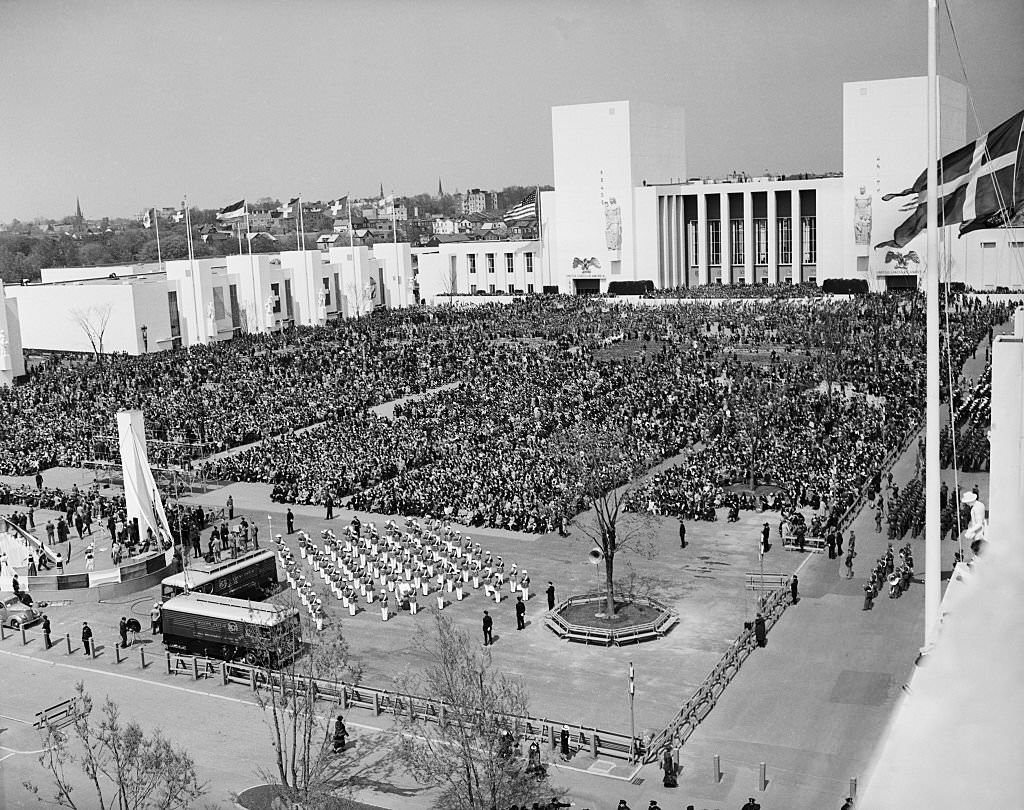
In covering their first story by television, New York reporters got a foretaste of the future when the dedication ceromonies of the RCA Building at the New York World's Fair of 1939 were flashed eight miles through the air and reproduced in receivers at Radio City. This is an unretouched photograph of the building as it appeared on TV screens in Manhattan.
#98 View of traffic on their way to the World’s Fair, 1939
#99 Aerial View of Trylon and Perisphere
#100 World’s Fair Queens, New York World’s Fair, 1939
#101 New York World’s Fair, 1939
#102 The four-person Crosley small car at the 1939 New York World’s Fair.. It has two cylinders, goes 50 miles on a gallon of gas and costs $350.
#103 Exterior view of the General Electric Exhibit at the World’s Fair.
#104 Crowds of people and security staff, watching a carnival float carrying a western type horsedrawn tram and people dressed in 1890’s period costumes, drawn by a motor vehicle.
#105 A sports collage photomural at the WPA Community and Health Building, part of the 1939 World’s Fair in New York City.
#106 The city of light, exhibition presented by Con Edison at the 1939 New york World’s Fair. View of entrance and side of building.
#107 Train at the New York World’s Fair, 1939
#108 Entrance to BMT and FRT subways at 1939 NY World’s Fair.
#109 New York World’s Fair 1939. The bridge to the Administrator Building.
#110 New York World’s Fair Performance
#111 A road winds past one of the main buildings at the 1939 World’s Fair in New York City.
#112 Side view of the Williiam Mason, a B & O locomotive and coal tender built in 1856. New York World’s Fair, 1939.
#113 The tower of the Glass Center glows at night during lighting testing for the 1939 World’s Fair in New York City.
#114 Westinghouse Building at New York World’s Fair, 1939
#115 Du Pont Building at World’s Fair, 1939
#116 Decorative touches and unusual architecture disguise the GE power distribution plant at the 1939 New York World’s Fair.
#117 General view of the World’s Fair as seen from the Helicline of Theme Center.
#118 New York World’s Fair Celebration, 1939
#119 World’s Fair at night in New York City, 1939.
#120 General Motors sign in lights at World’s Fair in New York City, 1939.
#121 Einstein At World’s Fair
#122 This woman is displaying her artistic talents with the NTG Sun Worshippers at the World’s Fair, 1939
#123 View showing a group of actors in various costumes posed on the front of a steam engine.
#124 Two pairs of female jitterbug dancers at the World’s Fair, New York, 1939.
#125 An aerial view of the Goodrich (left) and General Motors (right) pavillions at the 1939 New York World’s Fair, Flushing Meadows, New York.
#126 Aerial view of the 1939 New York World’s Fair in Flushing Meadow Park, Queens, New York City.
#127 People pair up and dance while Ozzie Nelson and his band perform on stage at the amusement area of the 1939 New York World’s Fair in Flushing Meadow Park.
#128 Aerial view of the grounds, and parking lot, of the World’s Fair, Flushing Meadow Park, Queens, 1939
#129 Virginia Stevenson (L) and Rivers Harrison imitate the pose of two of Frank Buch’s elephants at the 1939 New York World’s Fair in Flushing Meadow Park, Queens, New York City.
#130 Crowd at the opening ceremony of New York World’s Fair. The Trylon and Perisphere are in the background.
#131 Four visitors look across the nave toward the unfinished sanctuary and choir at the Cathedral of St John the Divine, New York World’s Fair, 1938
#132 The first Westinghouse Time Capsule, a 7.5 foot capsule with an inner shell of heat-resistant glass, is inspected by two experts before being shipped to the 1939 New York World’s Fair.
#133 An unidentified building under construction in the summer of 1938 at the site of the 1939 New York World’s Fair in Flushing Meadows, Queens in New York City.
#134 A man and woman stand in front of a model of the site of the 1939 New York World’s Fair in Flushing Meadows, Queens in the summer of 1938 in New York City.
#135 Communications Building under construction in the summer of 1938 at the site of the 1939 New York World’s Fair in Flushing Meadows, Queens in New York City.
#136 The Trylon and Perisphere under construction in the summer of 1938 at the site of the 1939 New York World’s Fair in Flushing Meadows, Queens in New York City.
#137 A woman stands under a sea of flags during the construction of the 1939 New York World’s Fair in Flushing Meadows, Queens in the summer of 1938 in New York City.
#138 Elektro The Robot at the 1939 New York World’s Fair
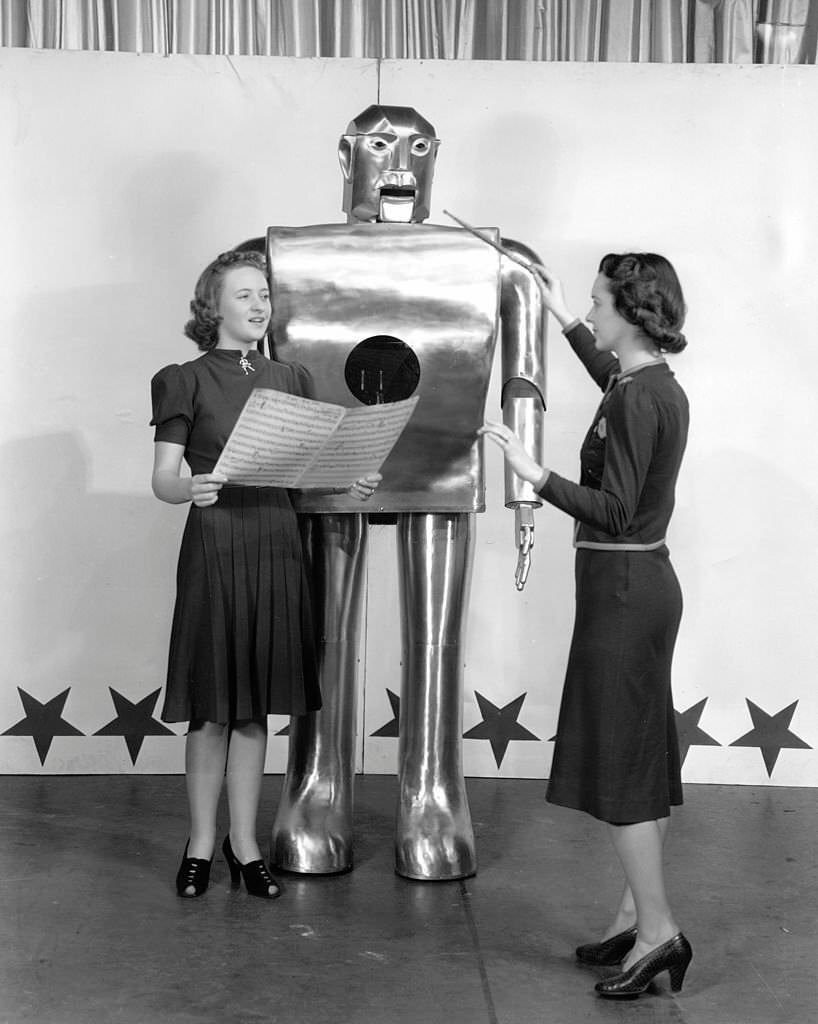
Elektro the robot, displayed at the Westinghouse exhibit at the 1939 New York World's Fair, sings through his sound mechanism as his mouth opens and shuts, while Phyllis Van Deran and Beatrice Kochenderfer waves a baton, New York, New York, early to mid 20th century. The robot stands 7 feet tall and can perform 36 tricks.


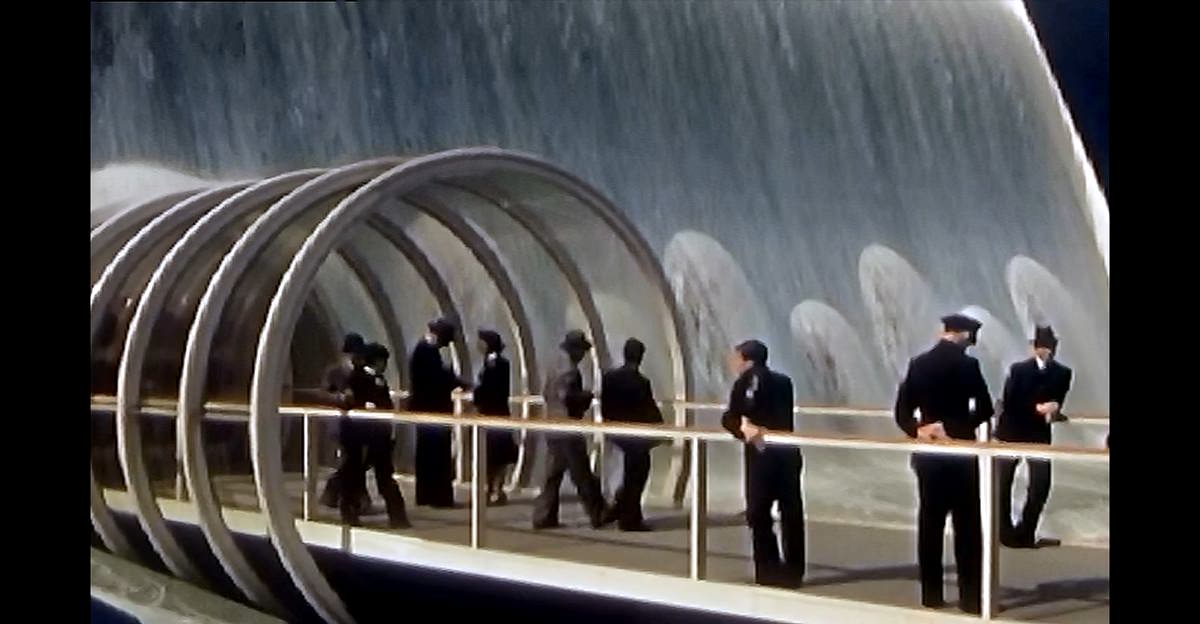
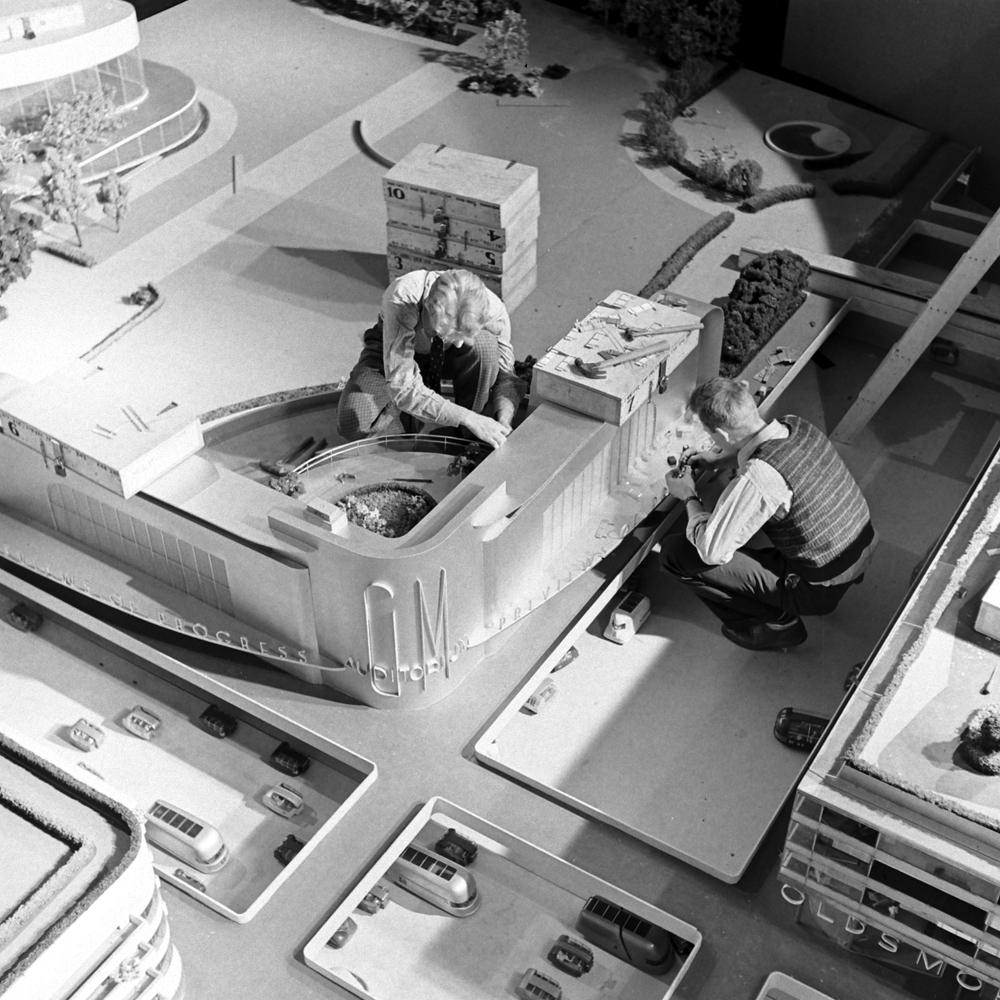
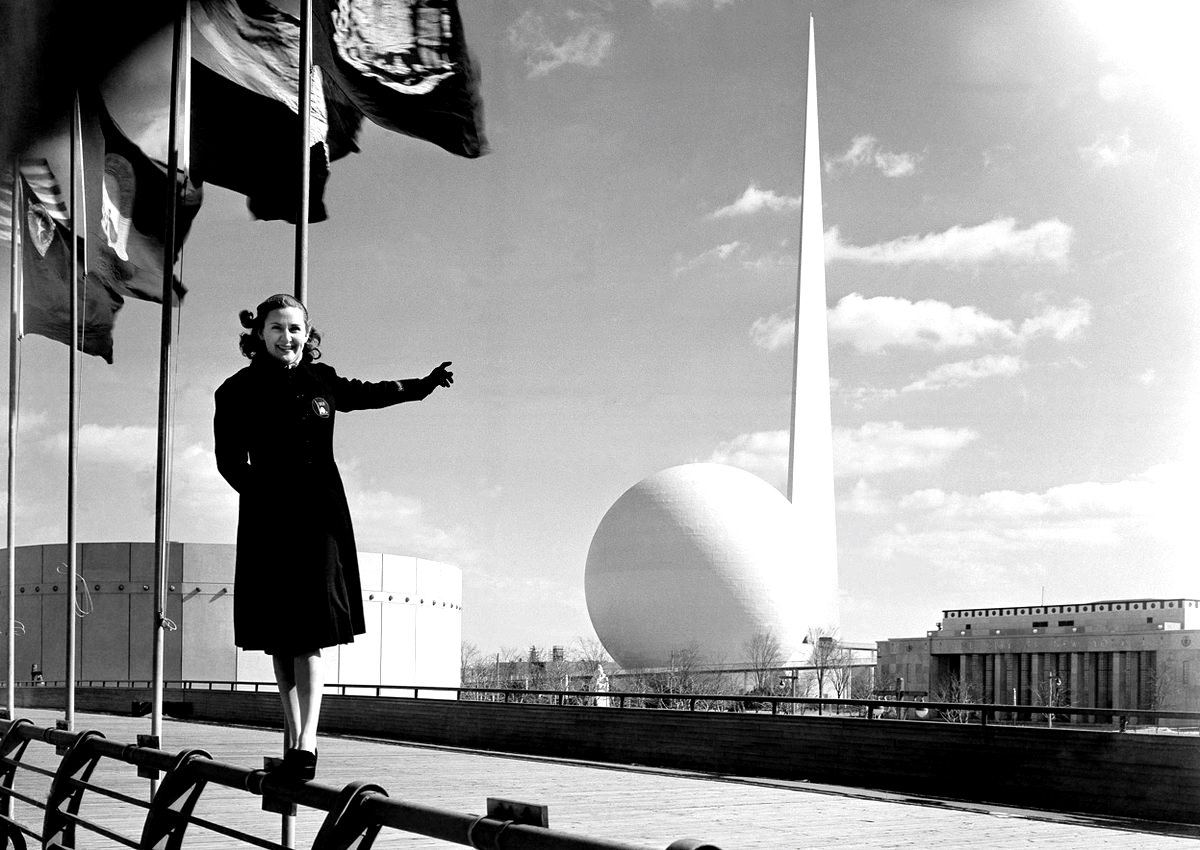
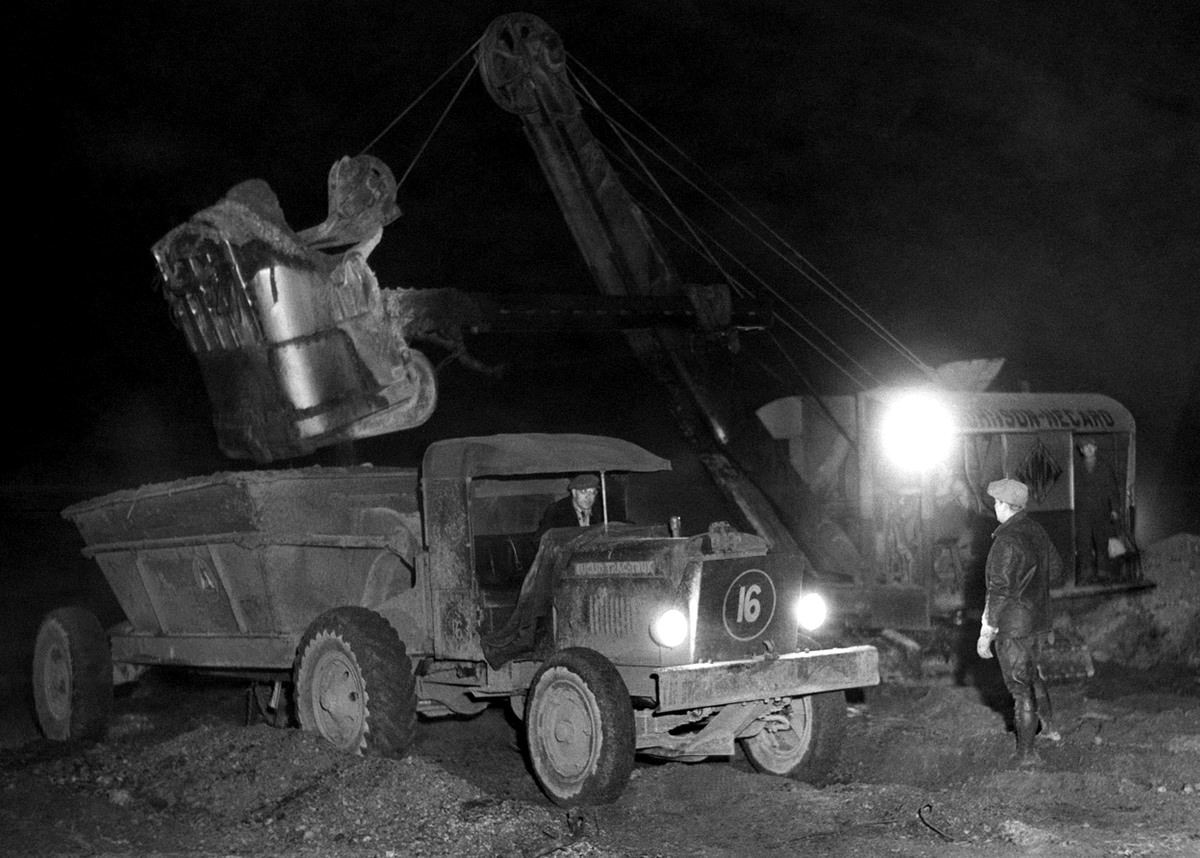
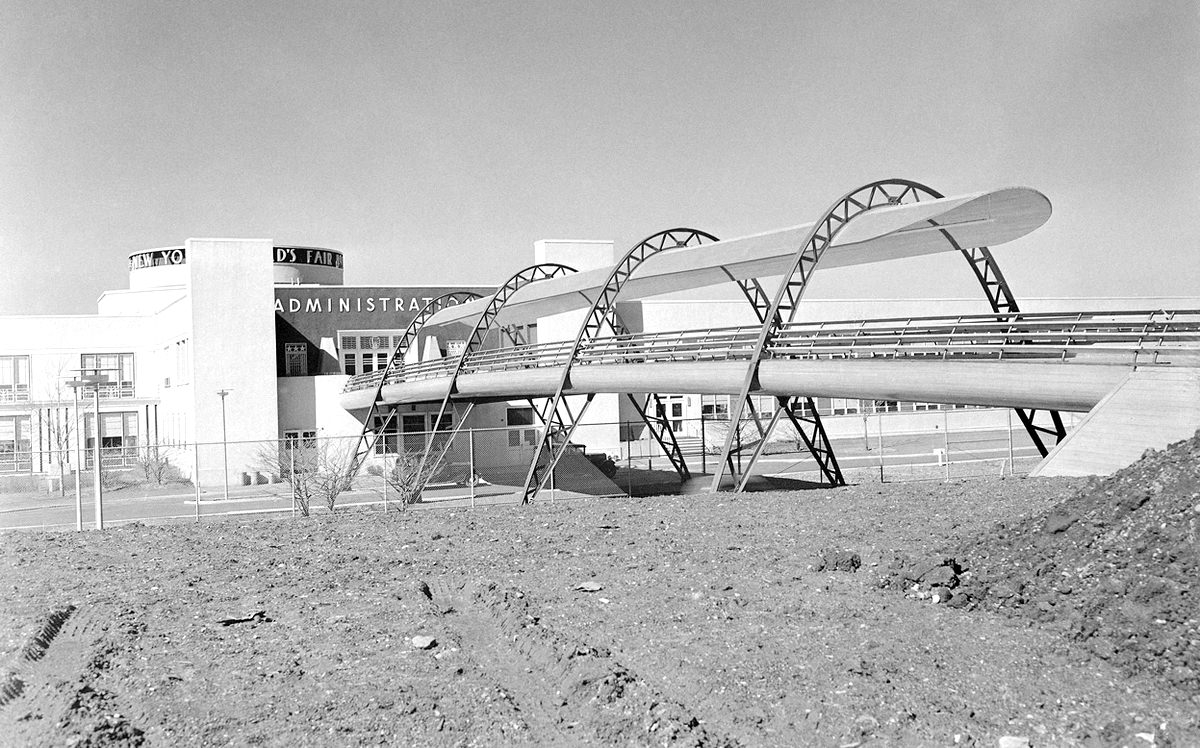
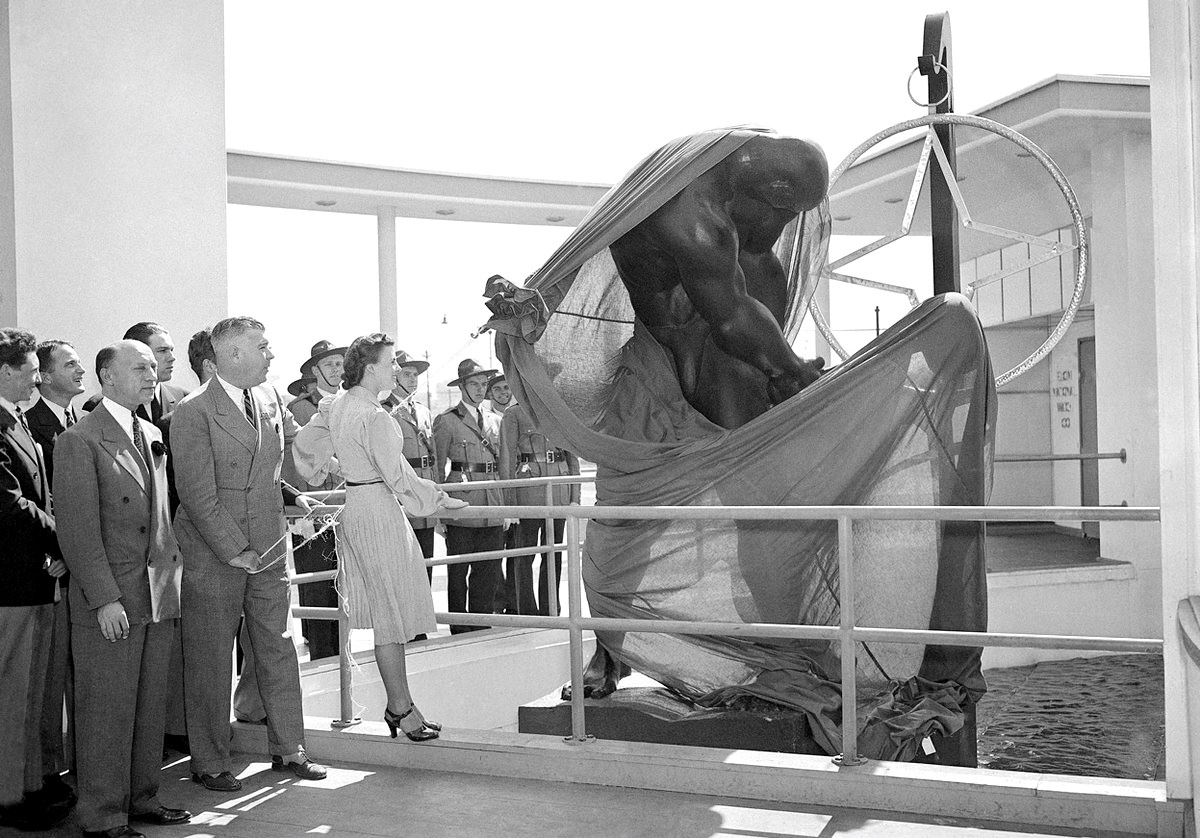
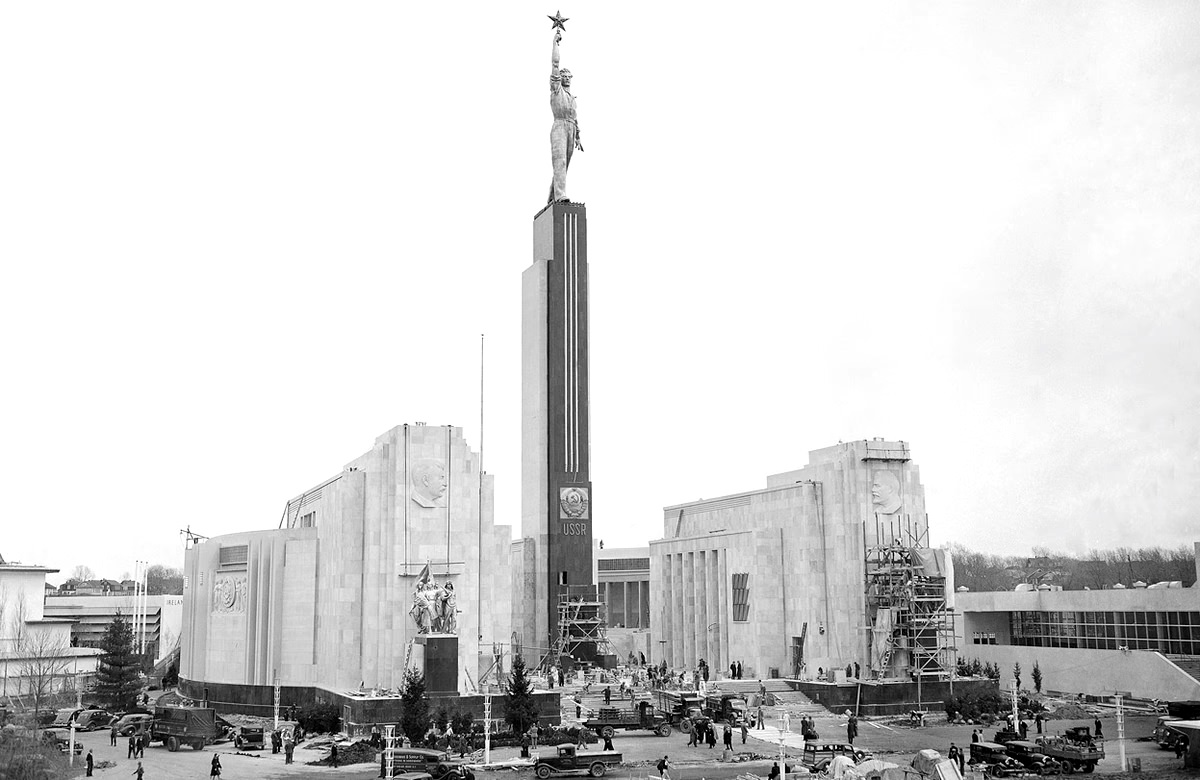
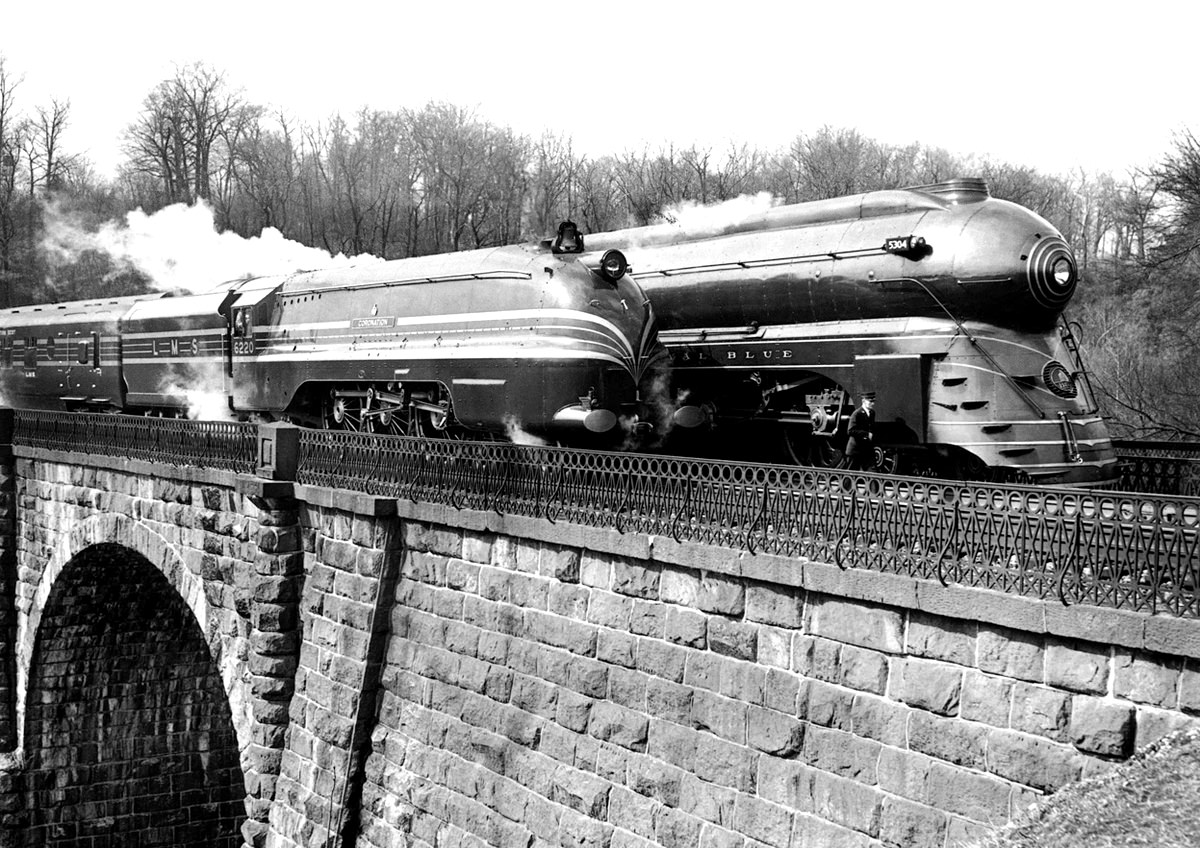
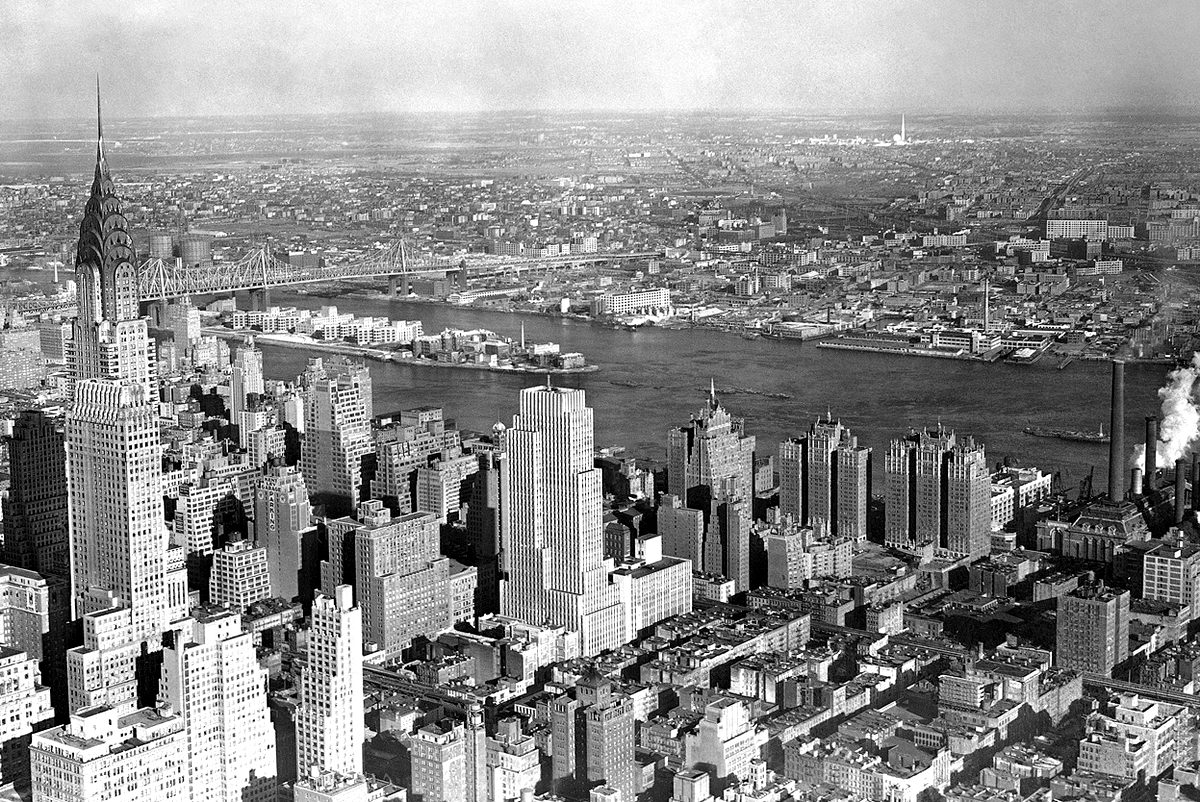
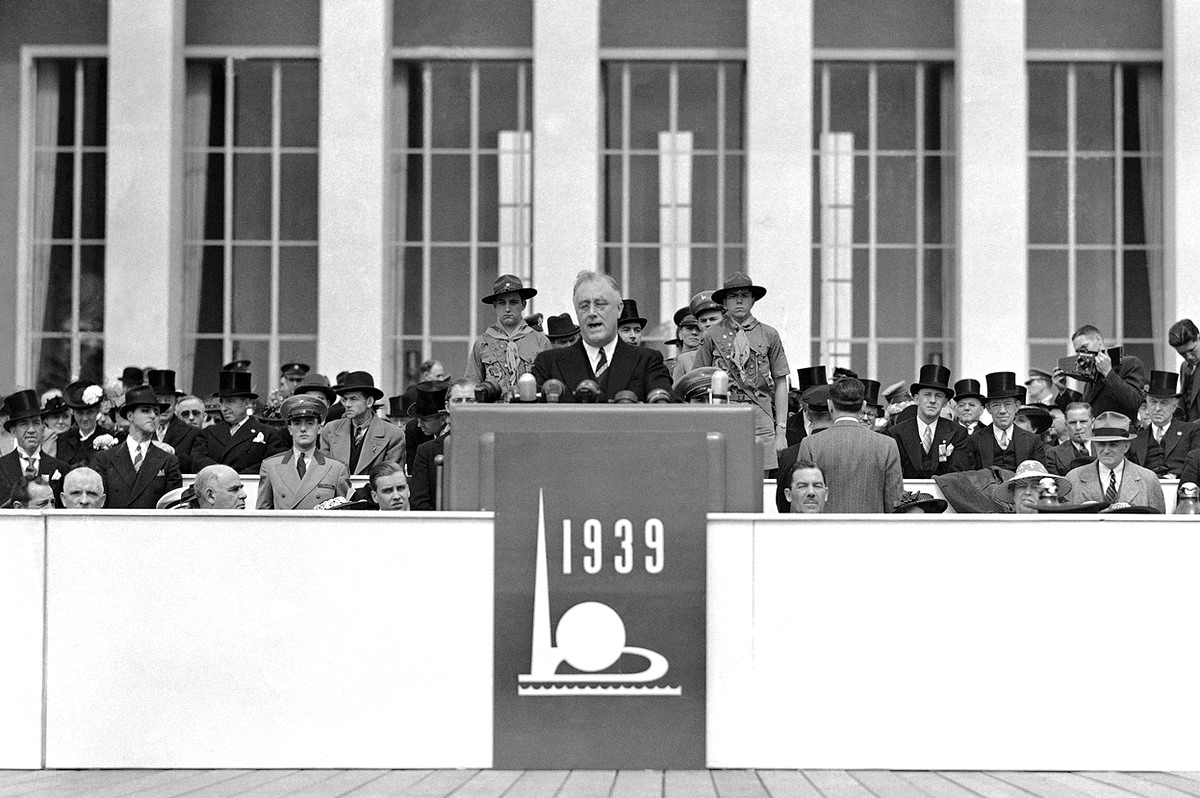
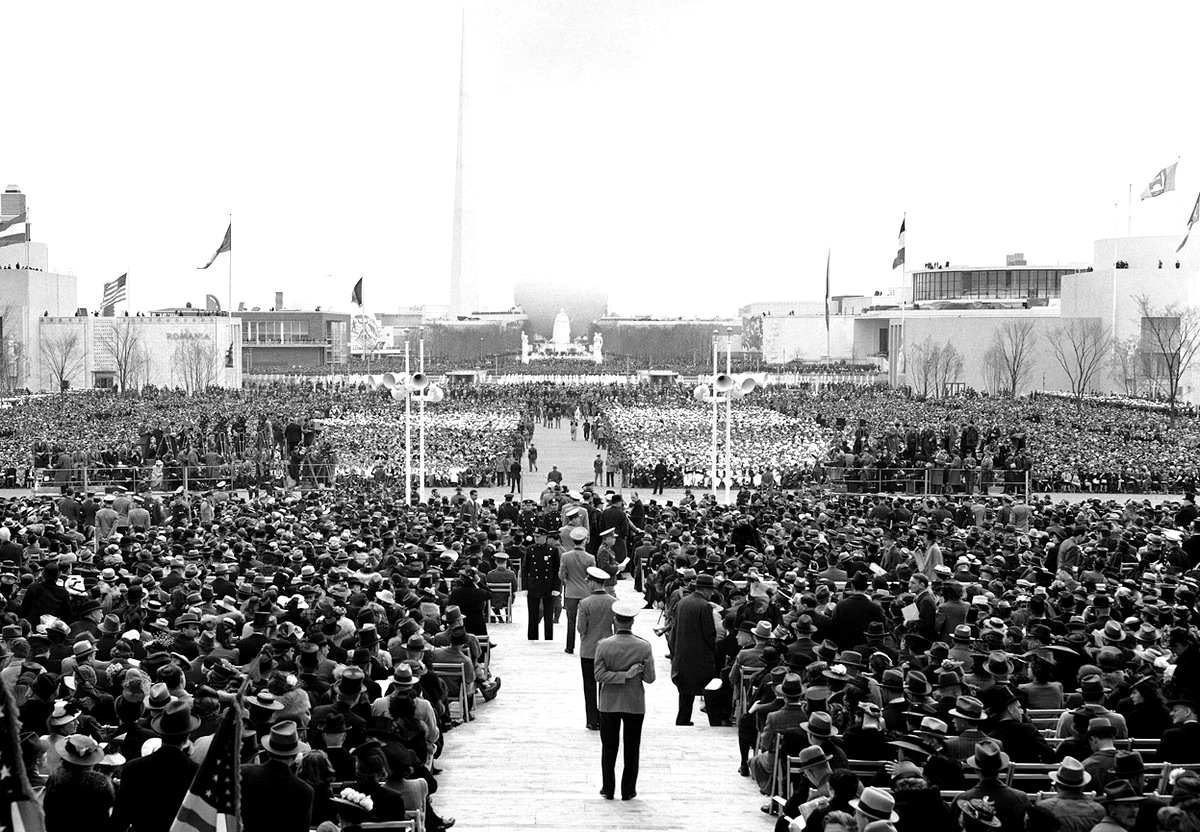
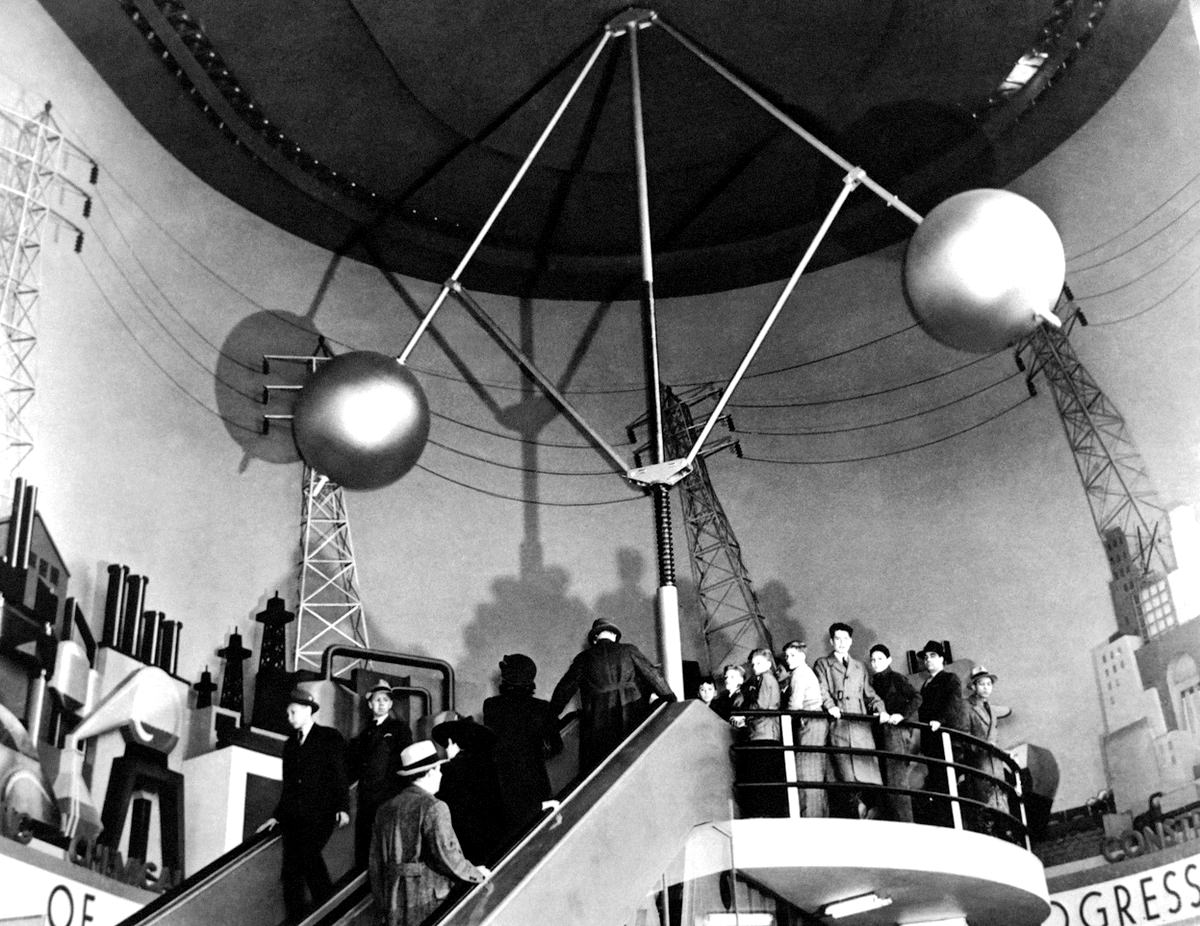
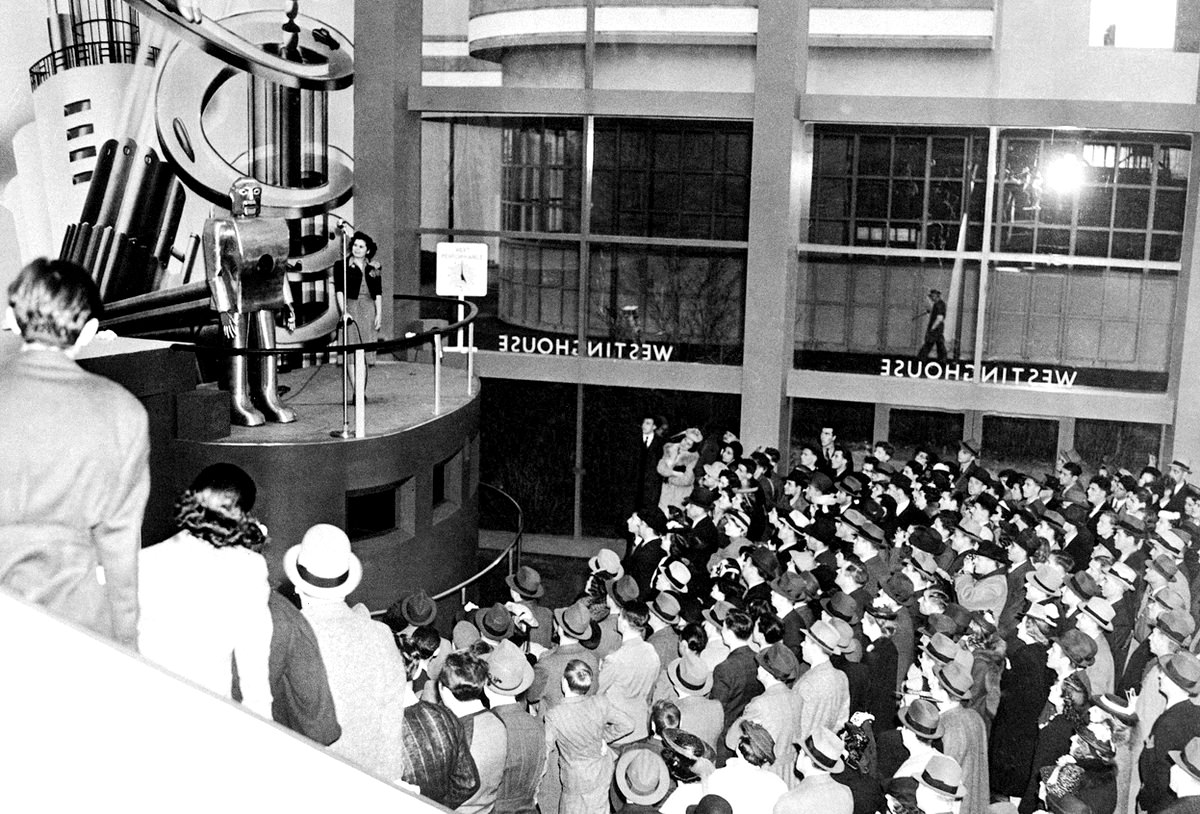
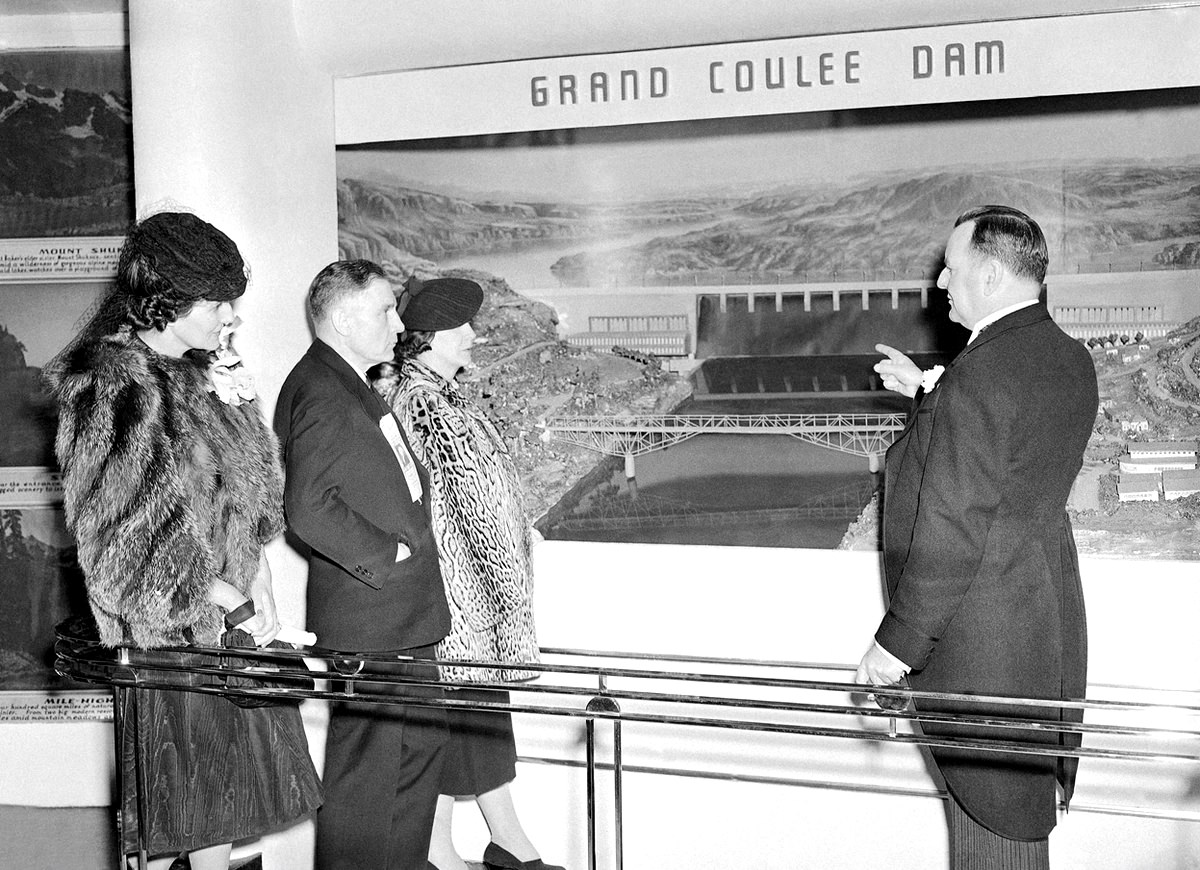
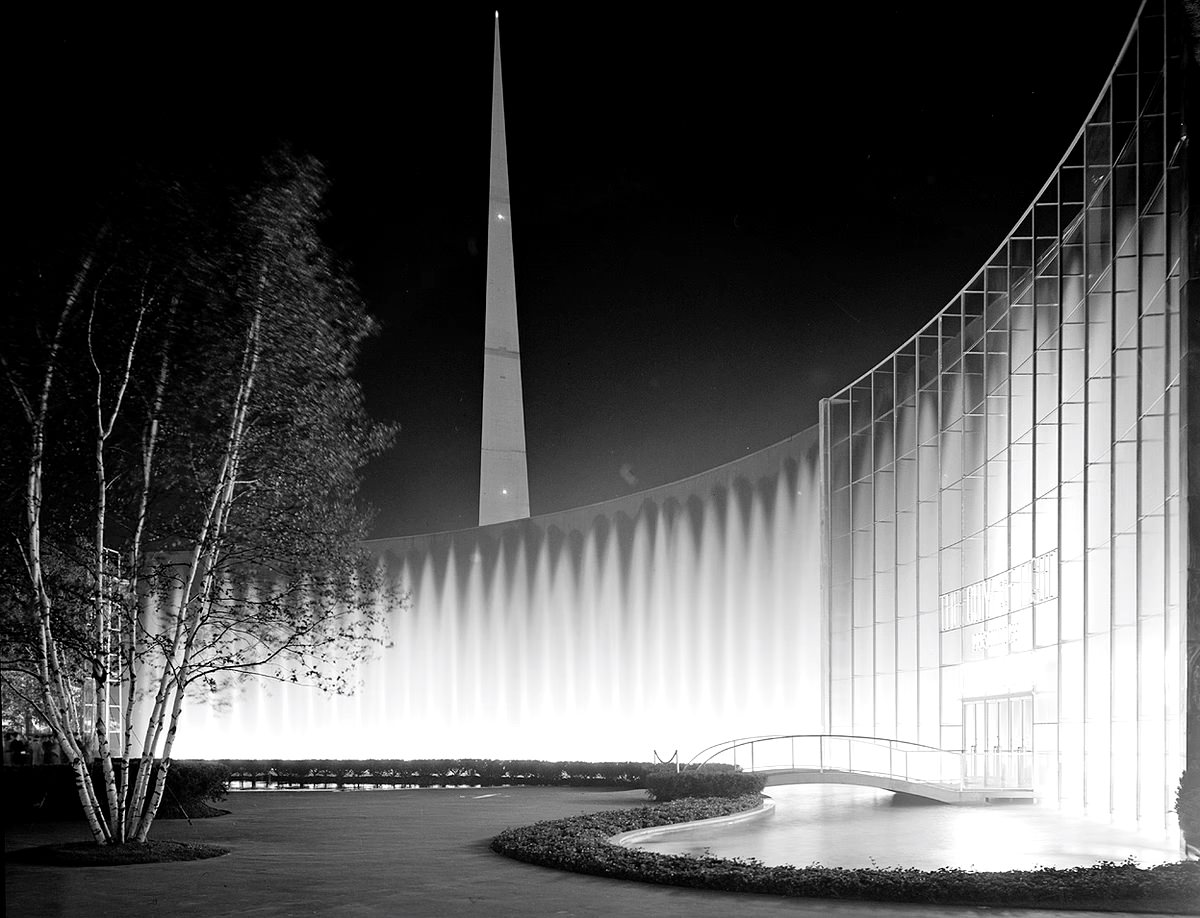
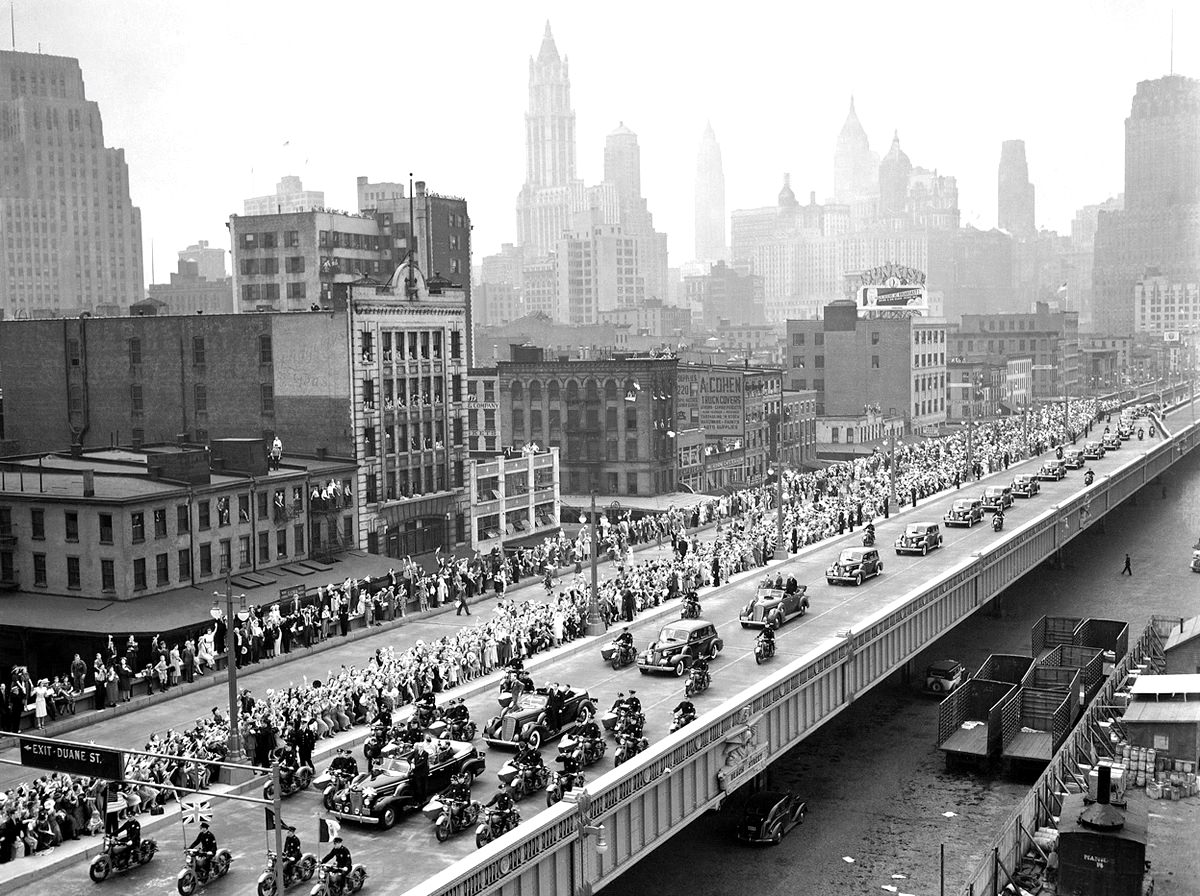
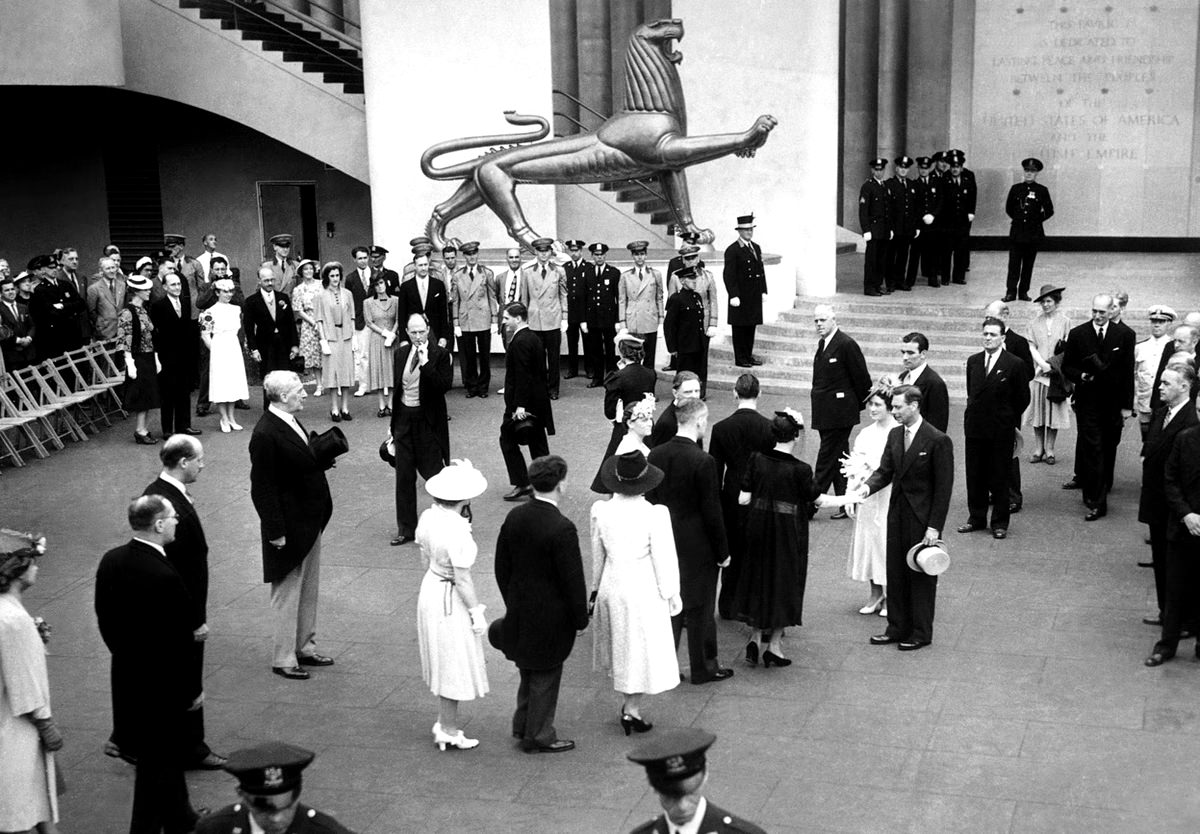
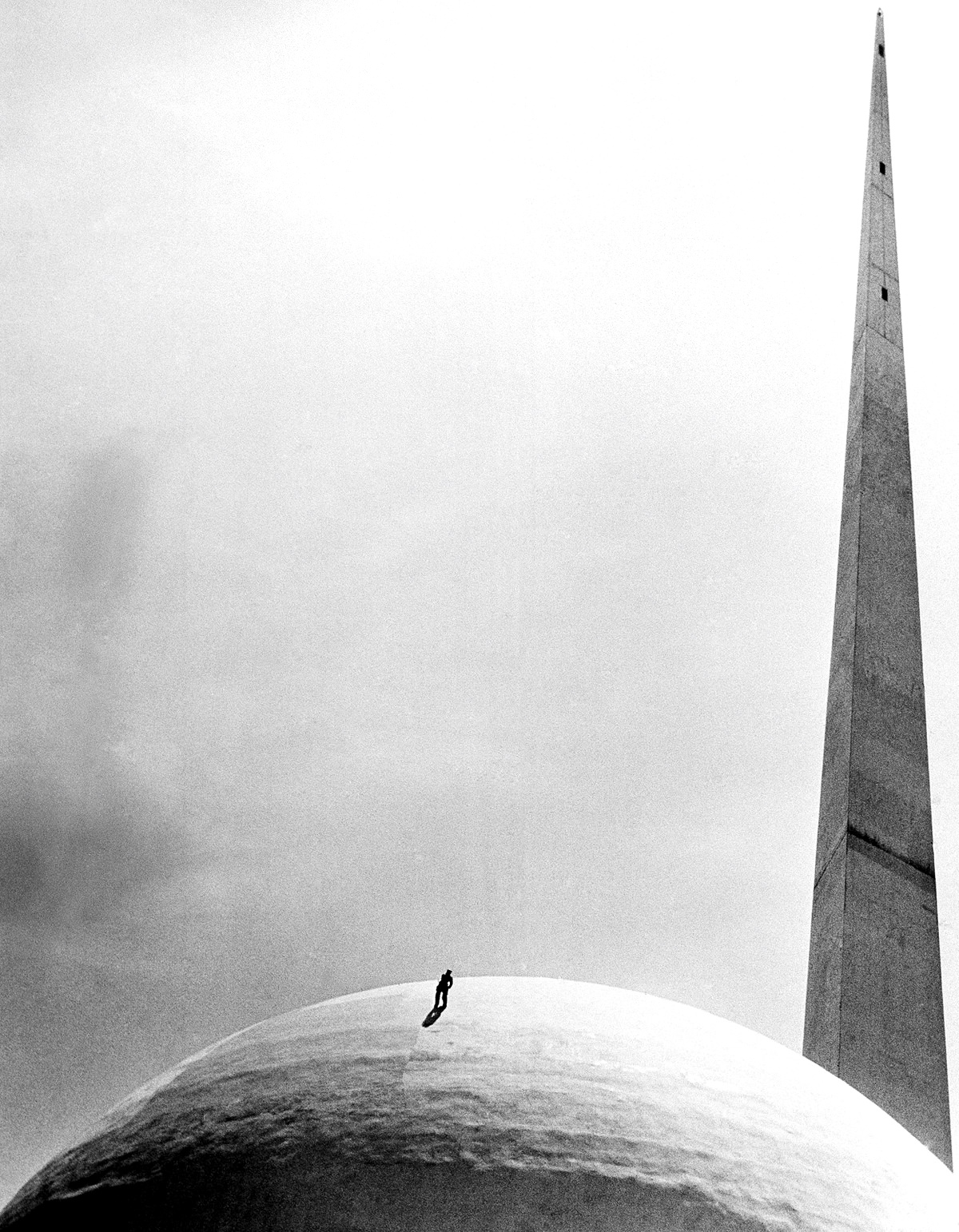
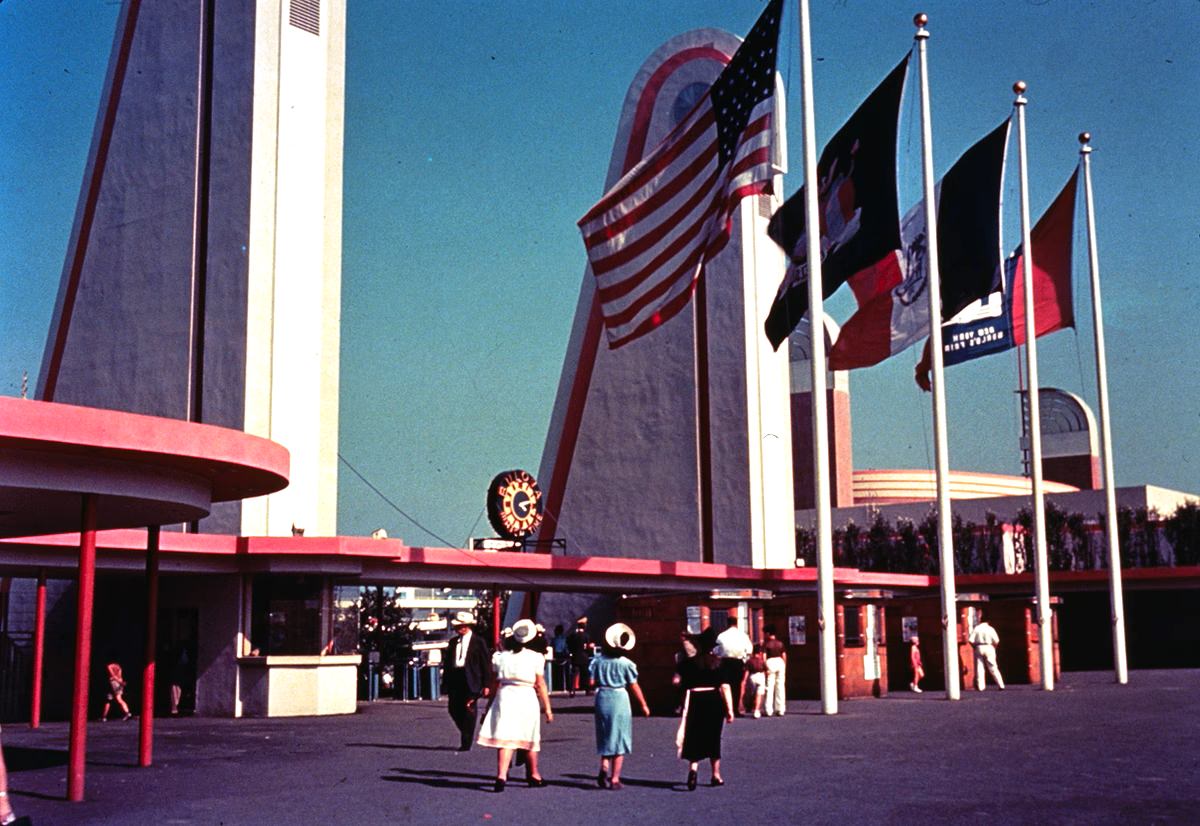
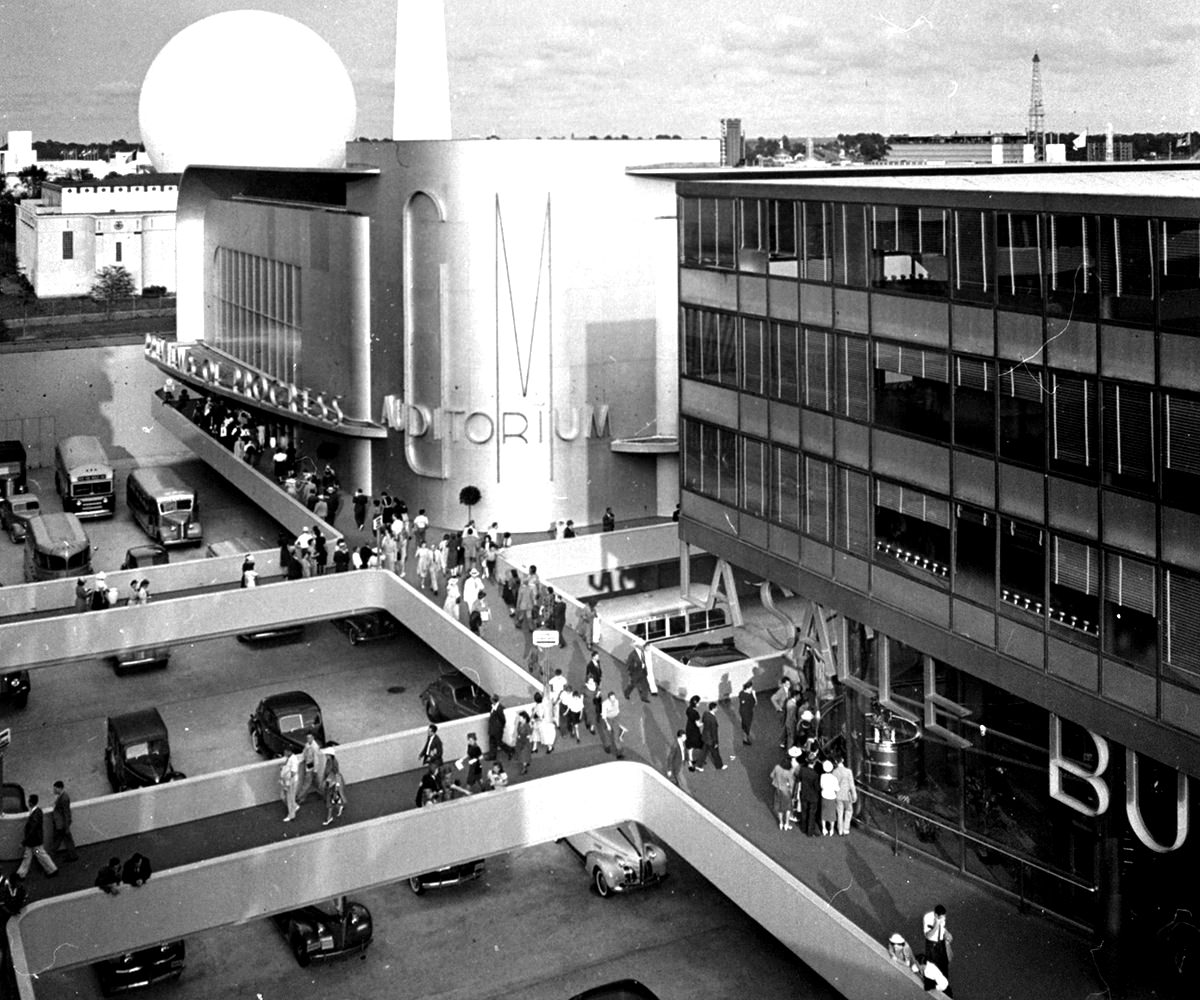
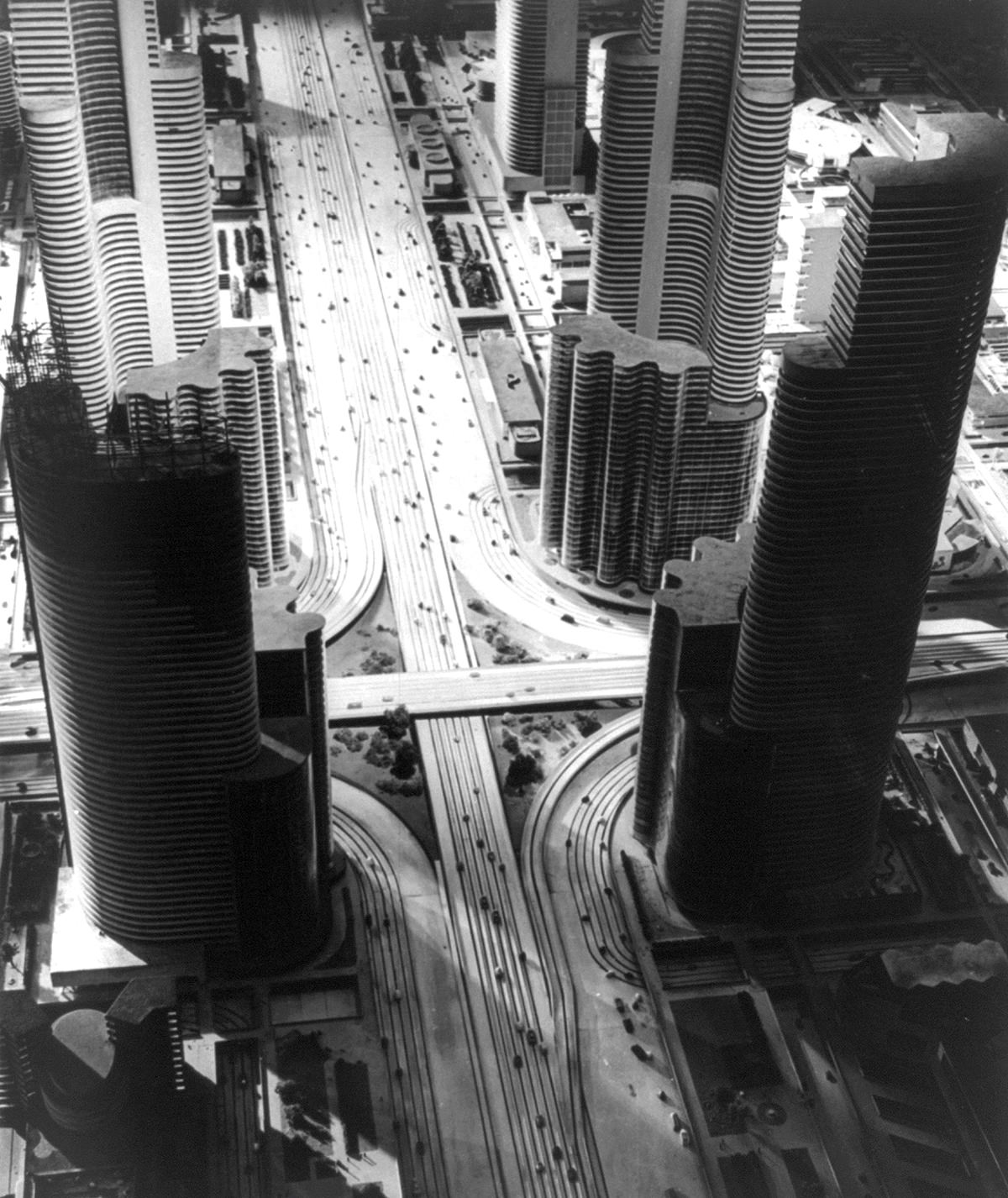
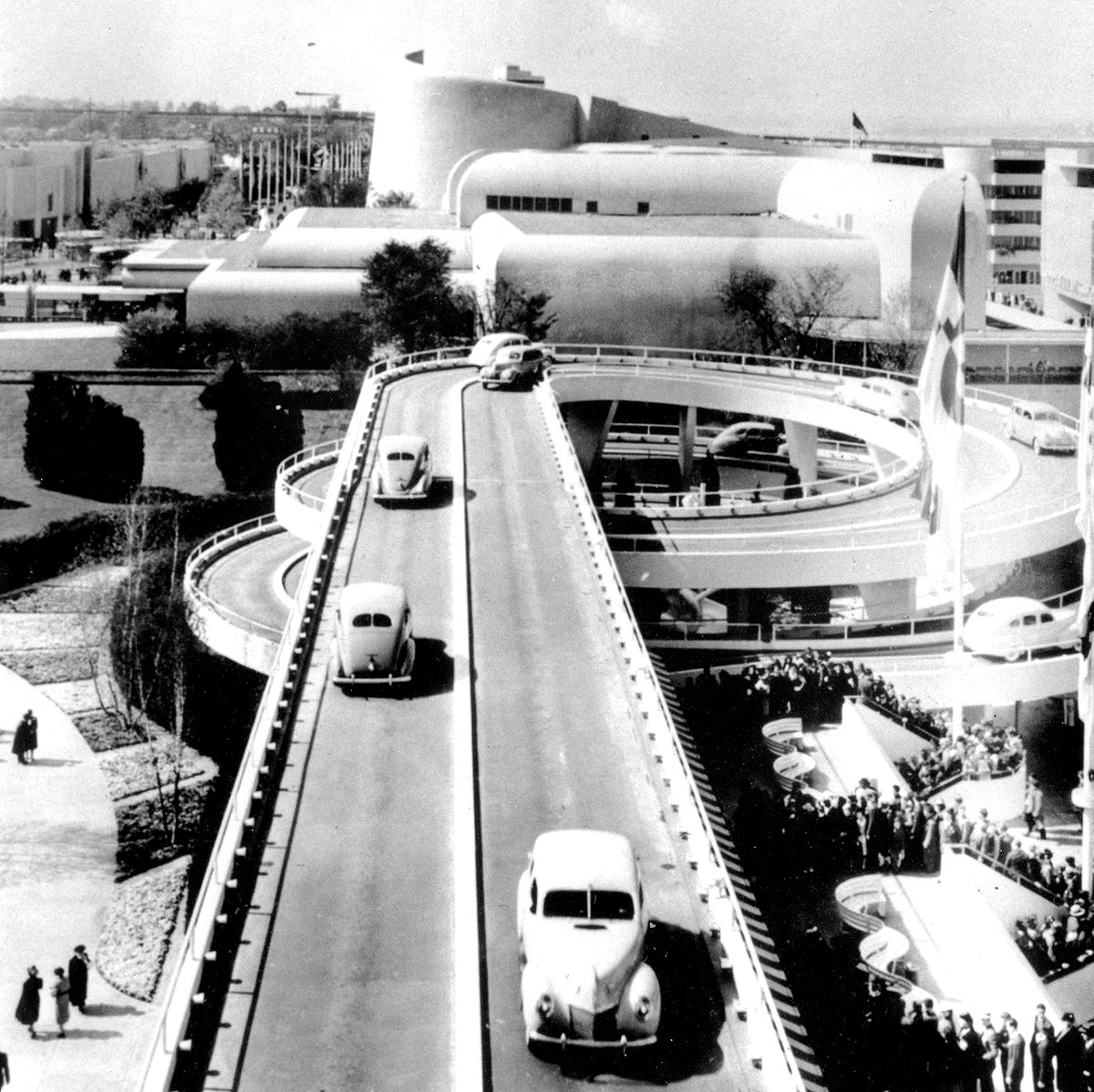
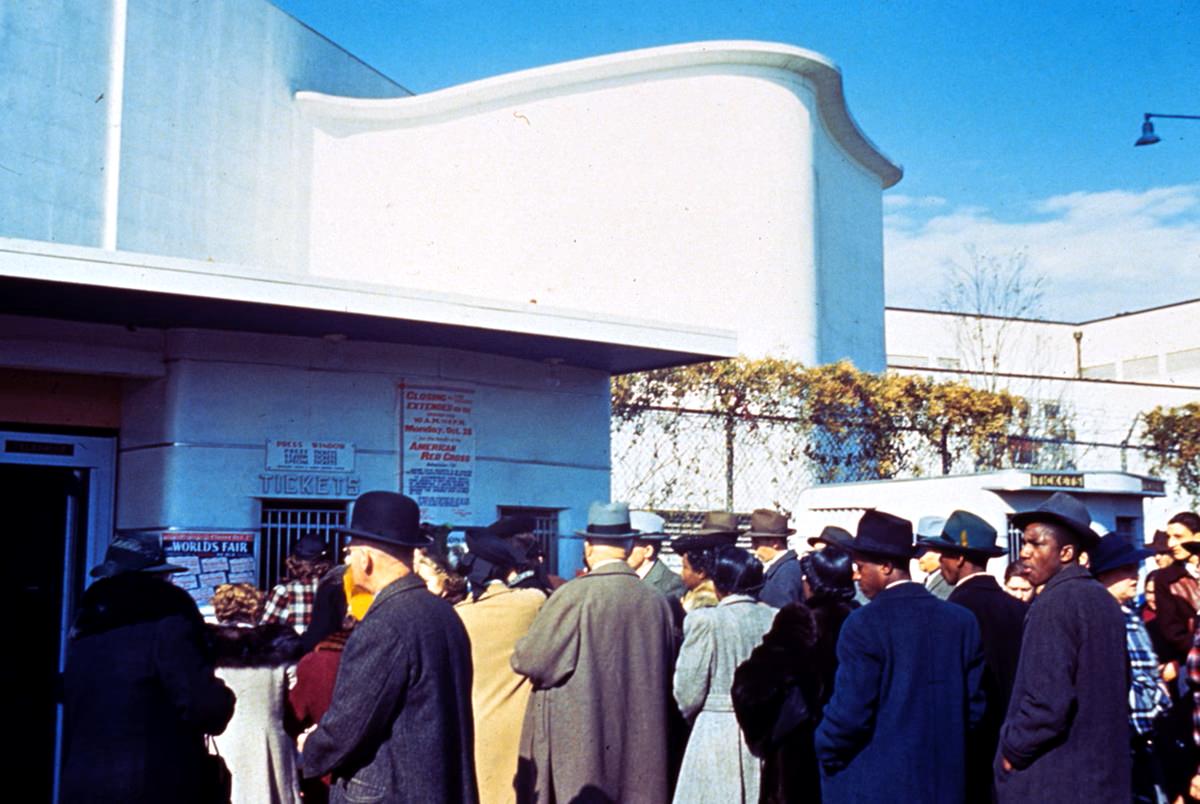
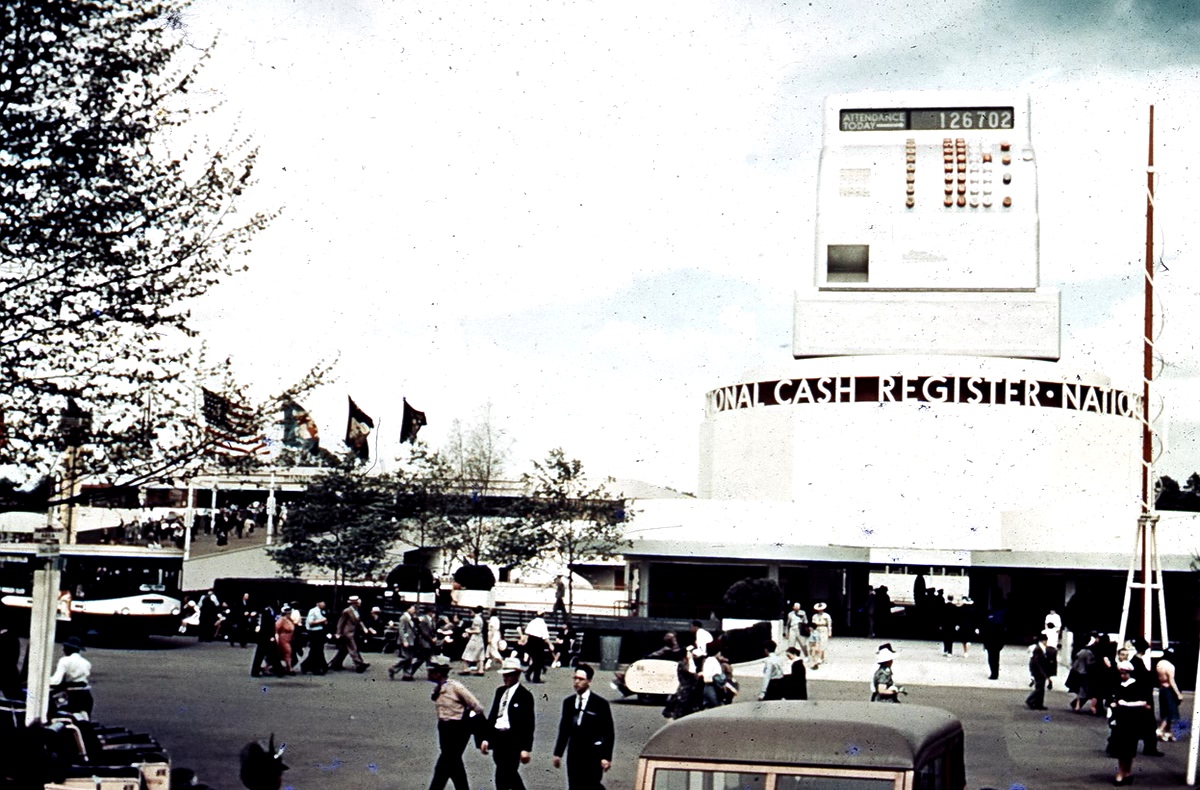
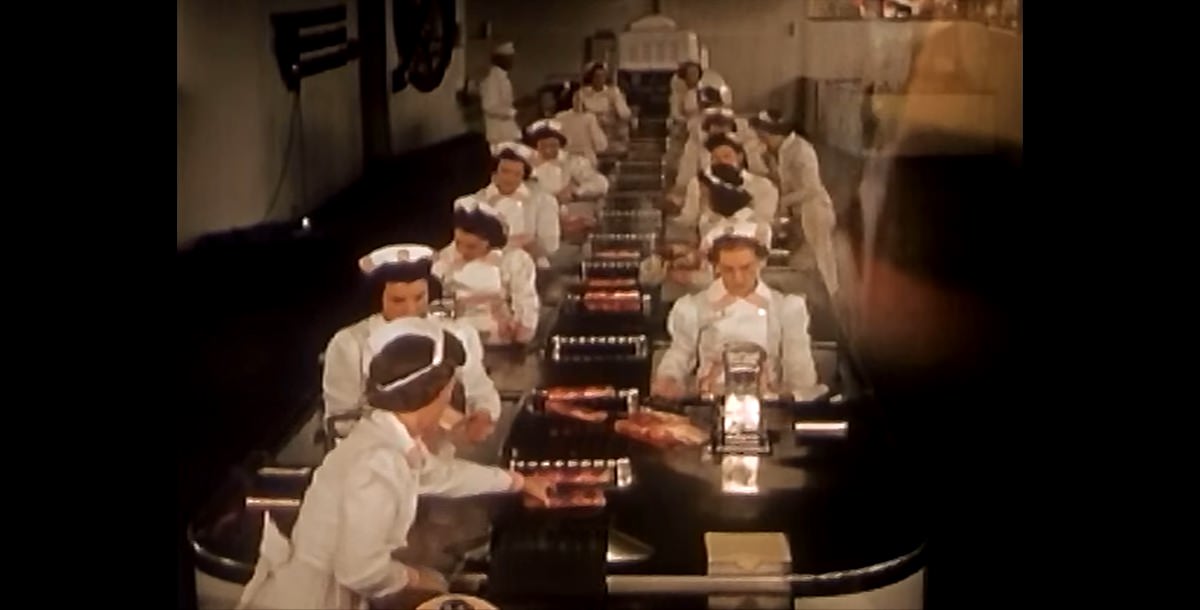
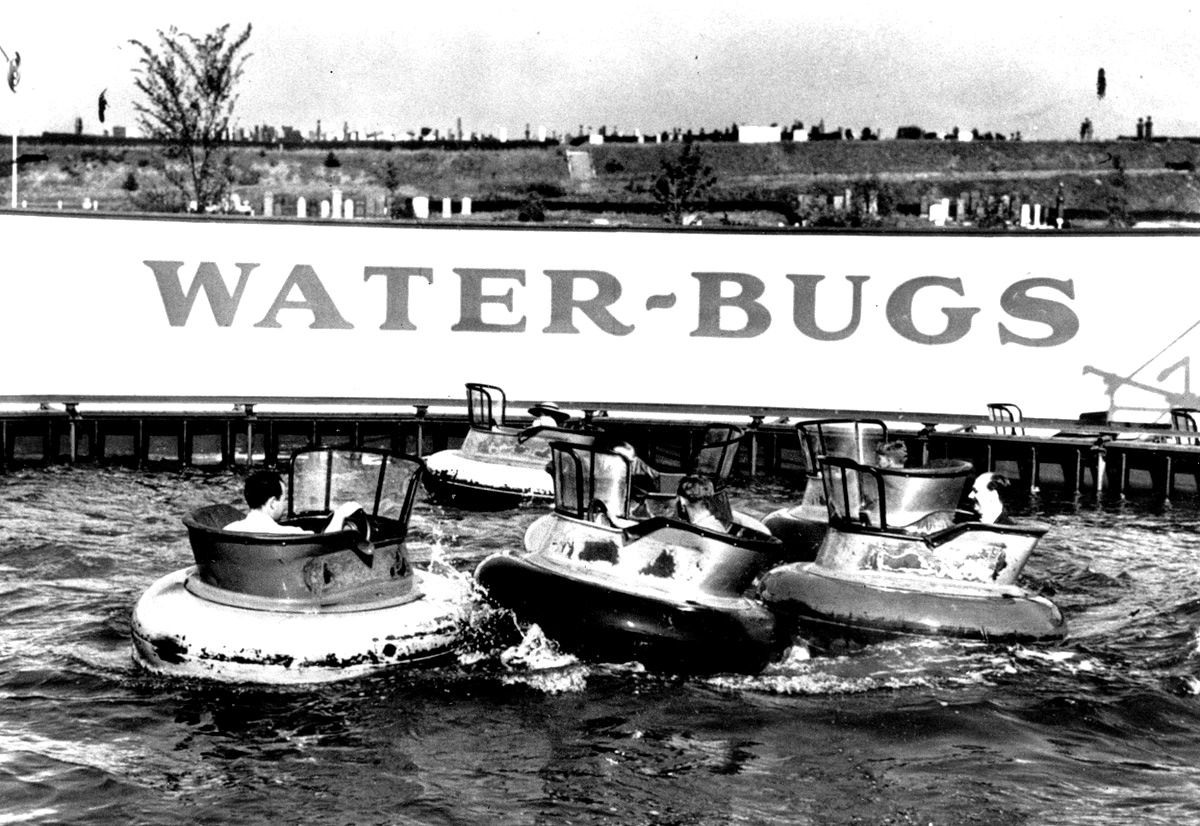
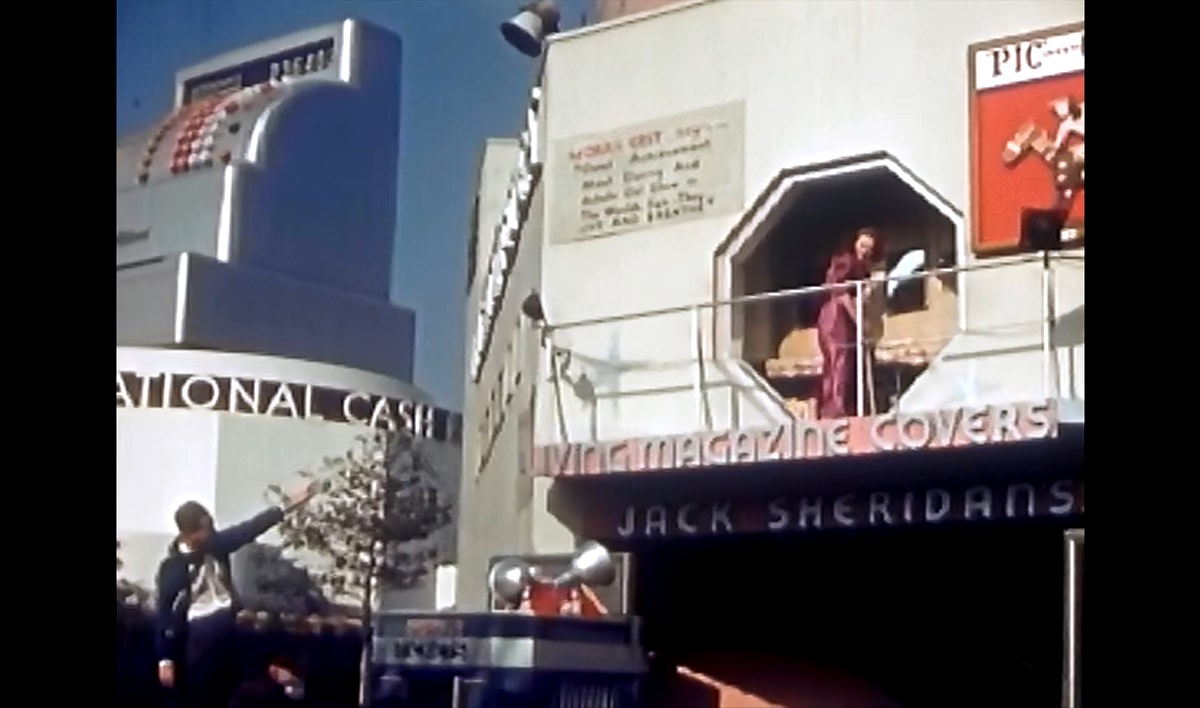
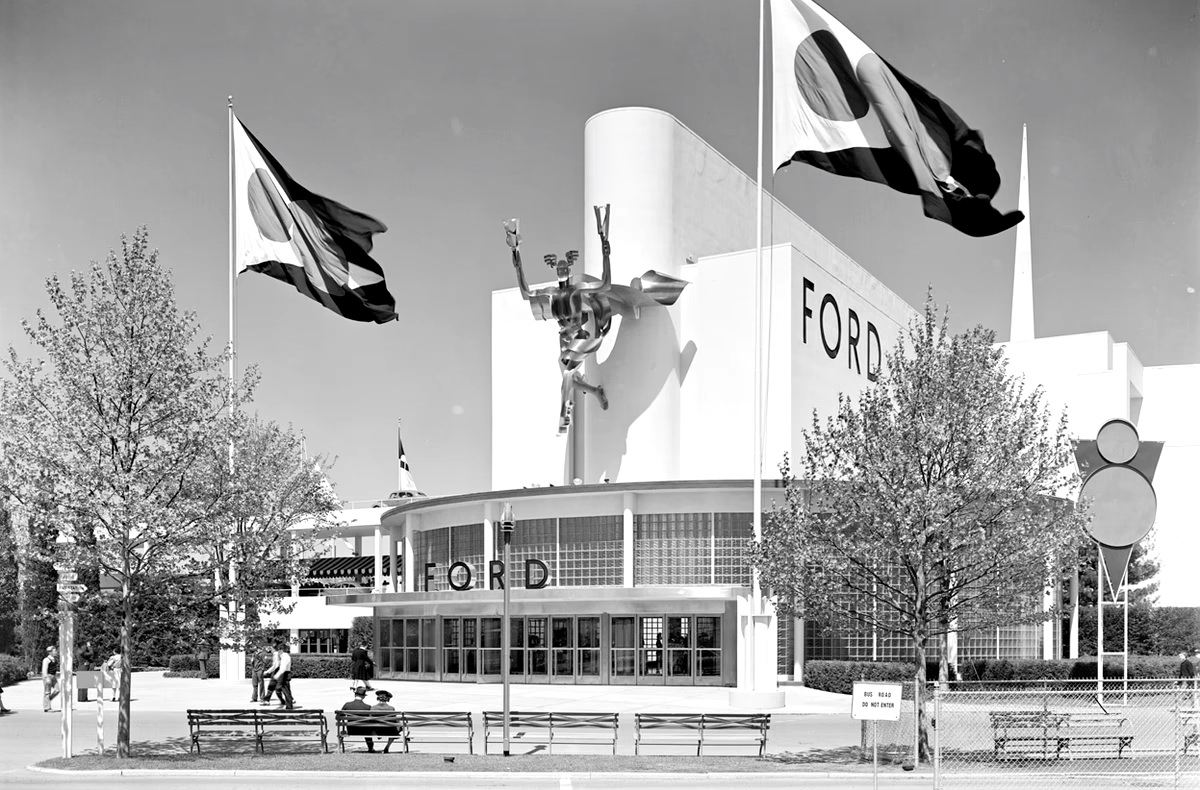
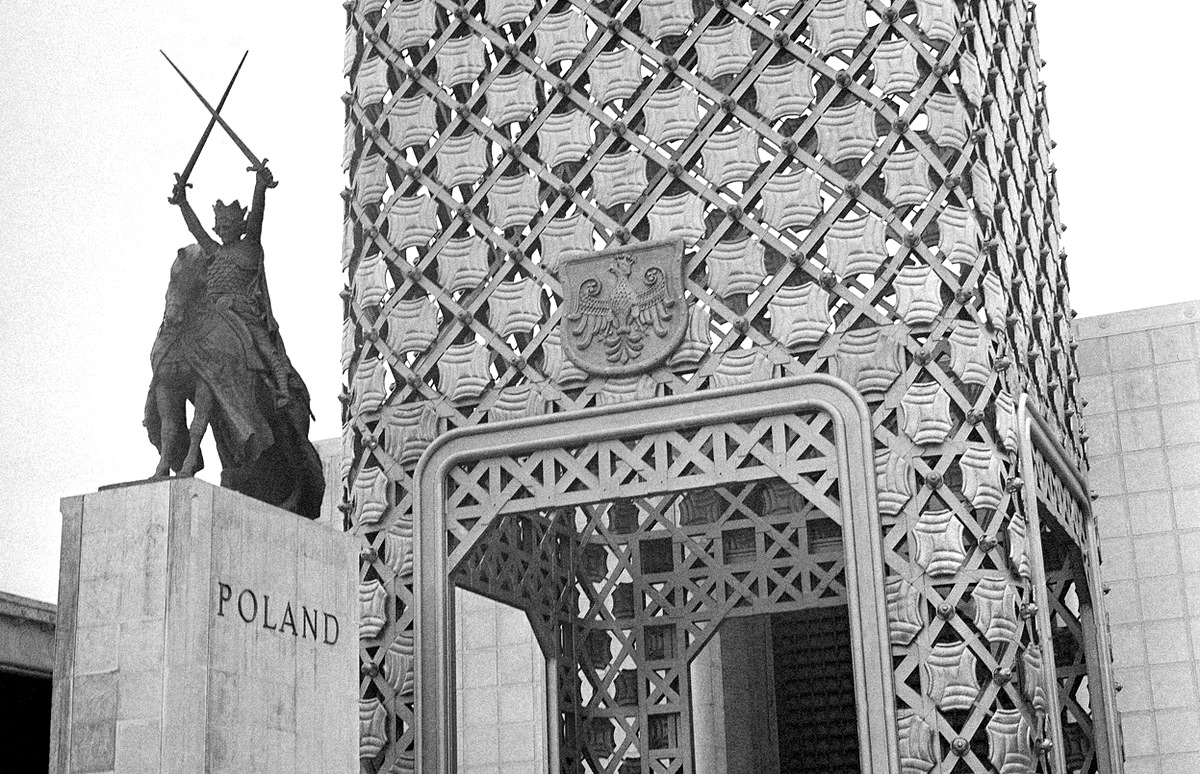
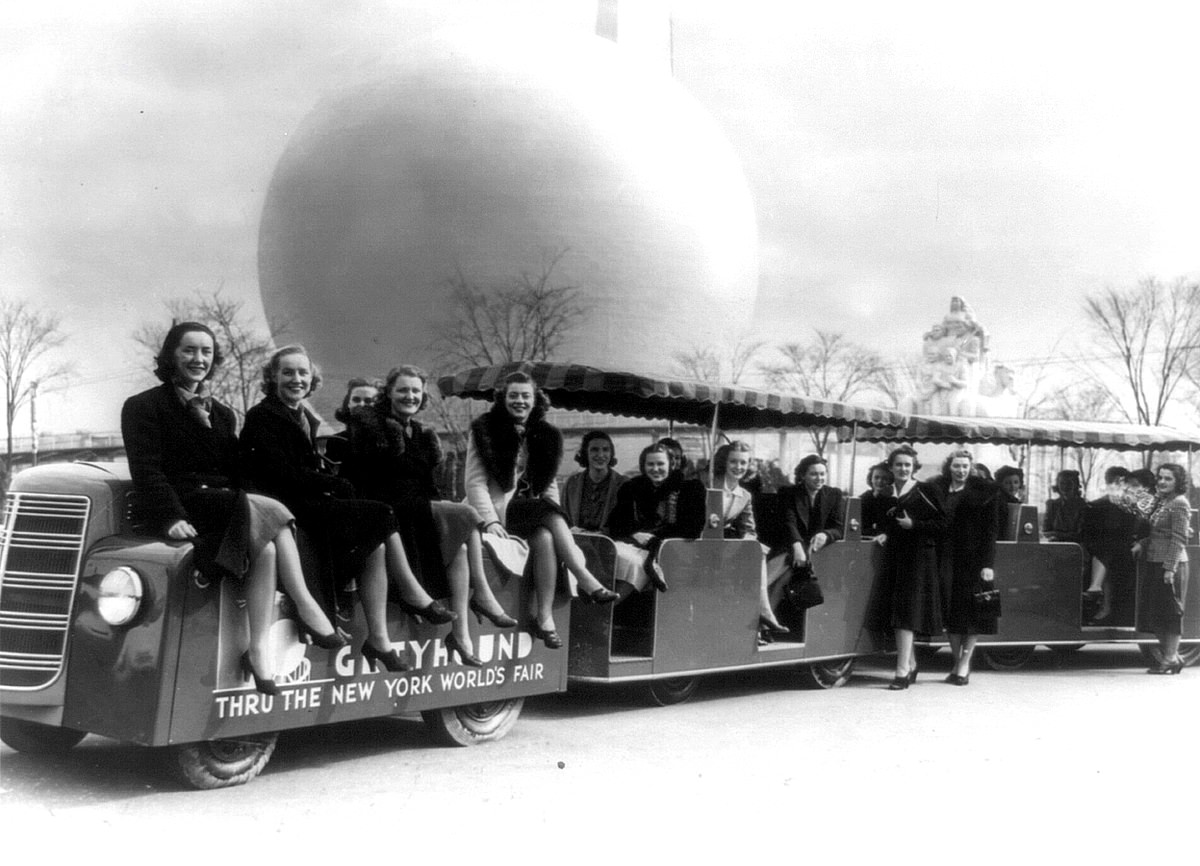
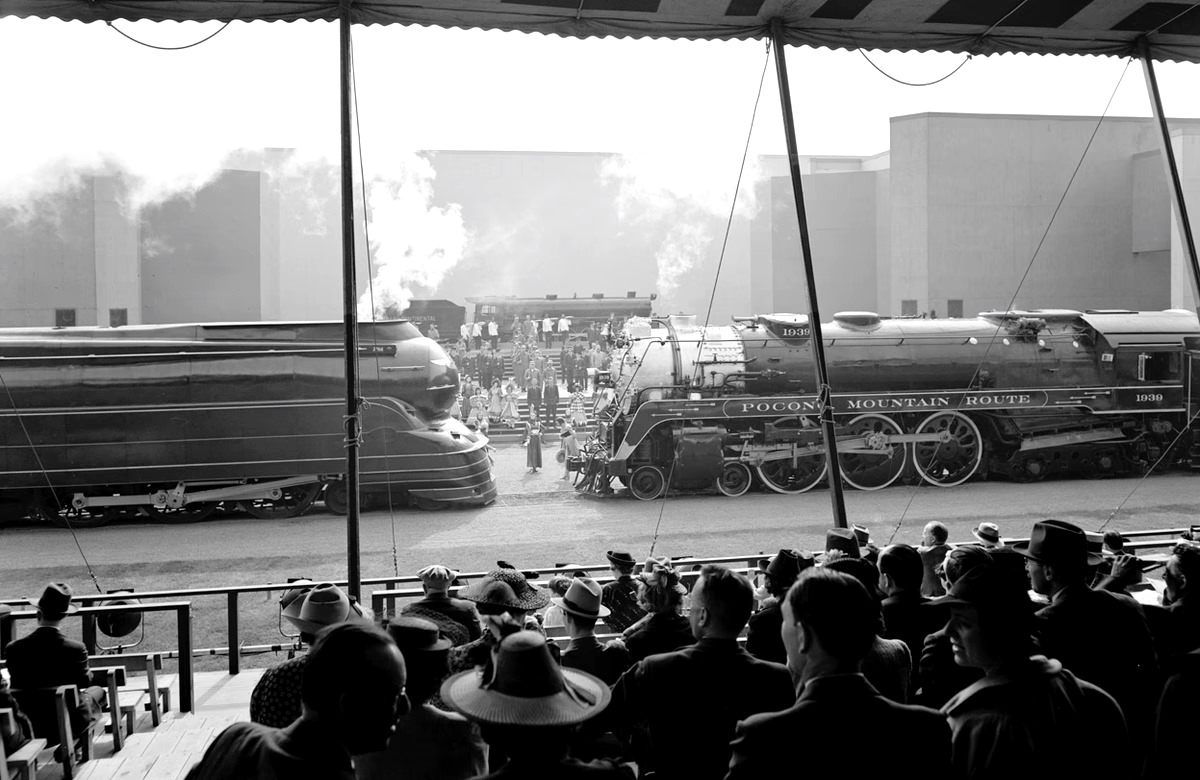
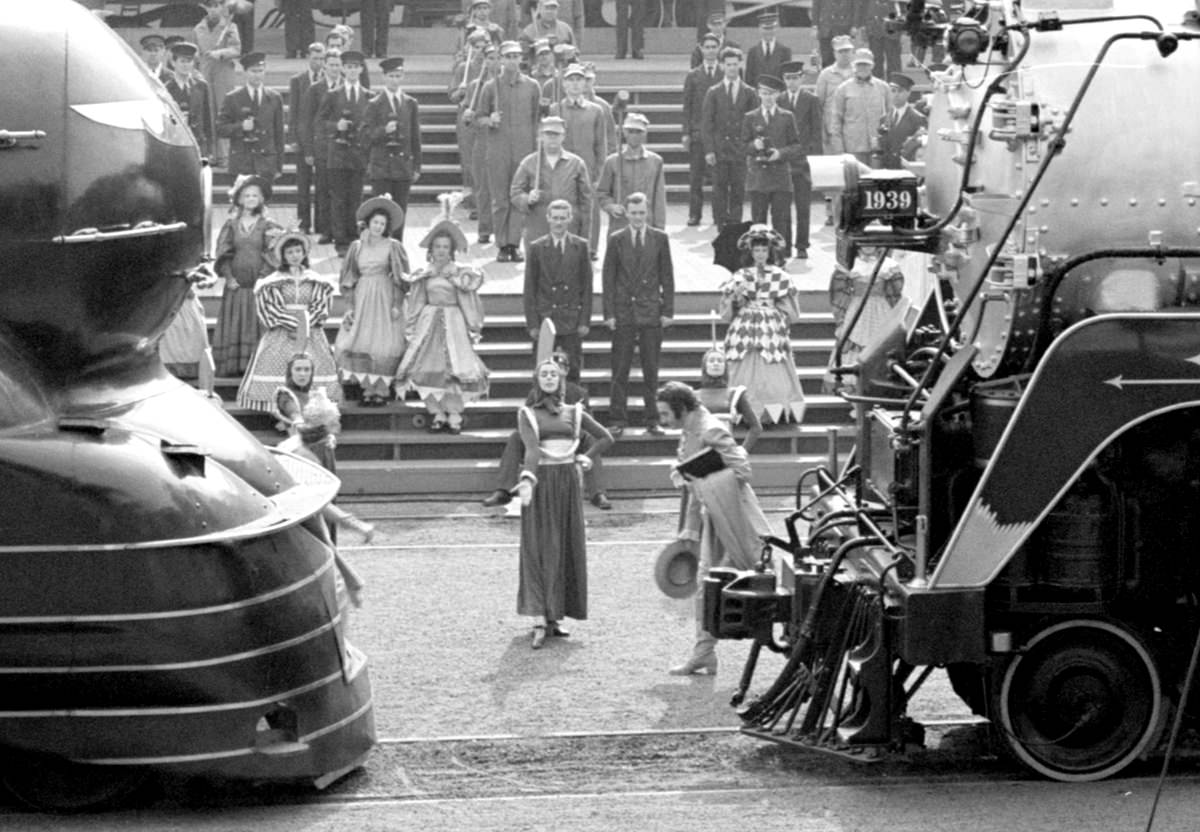
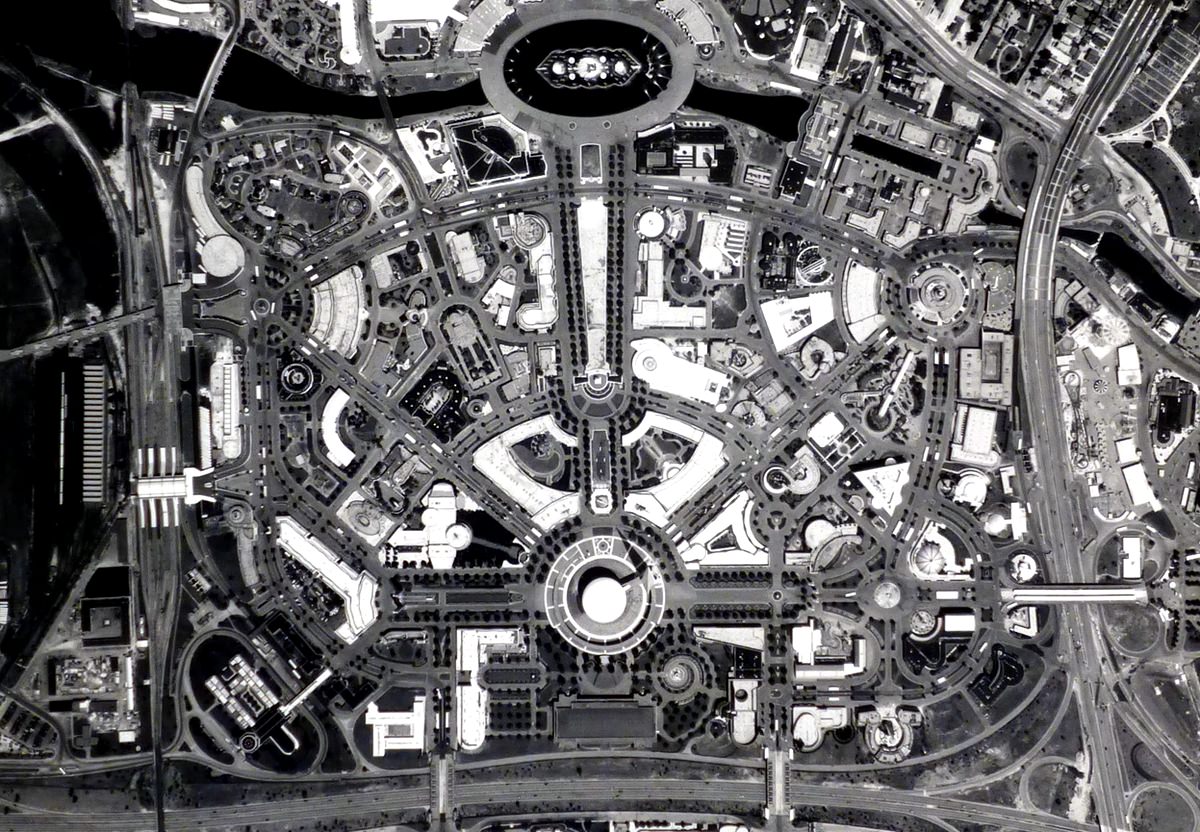
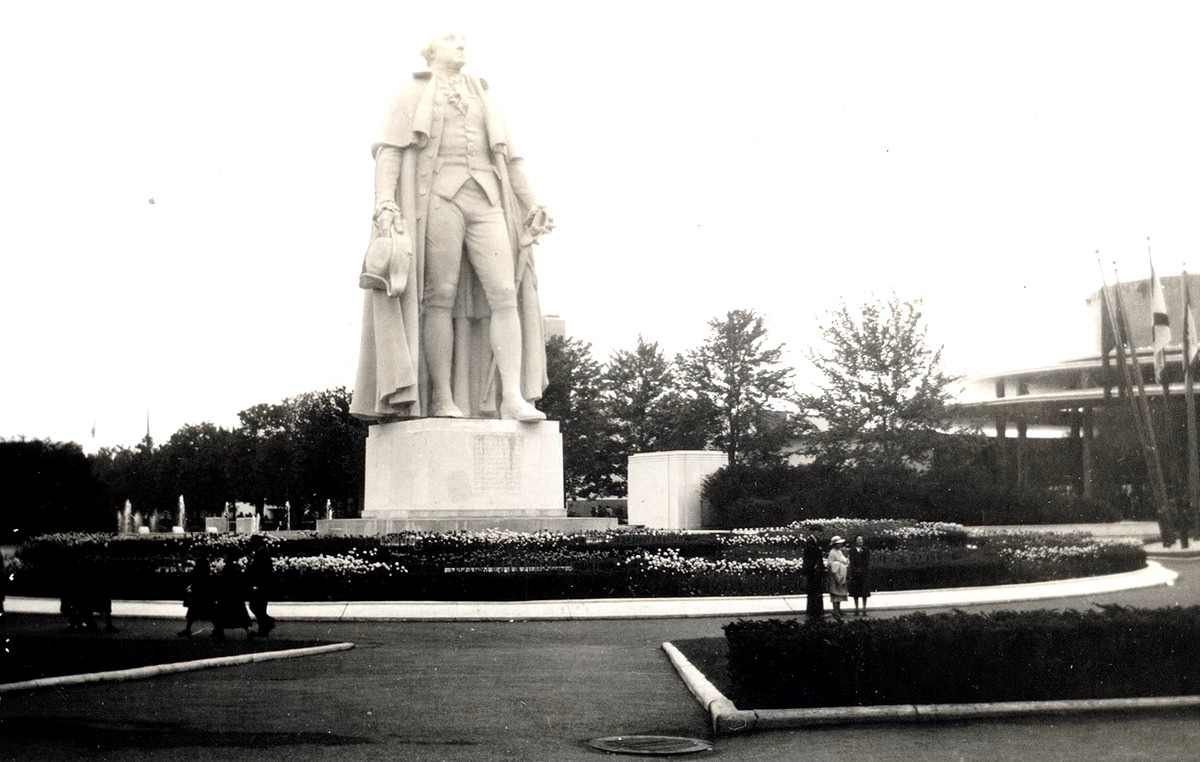
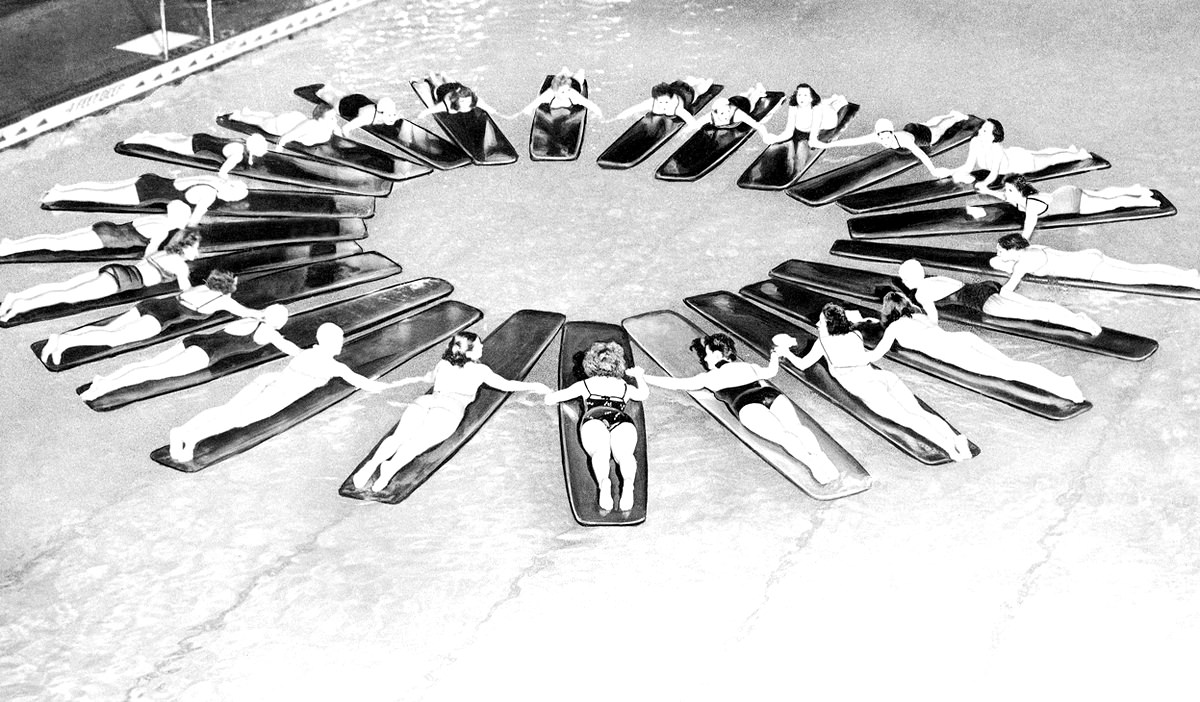
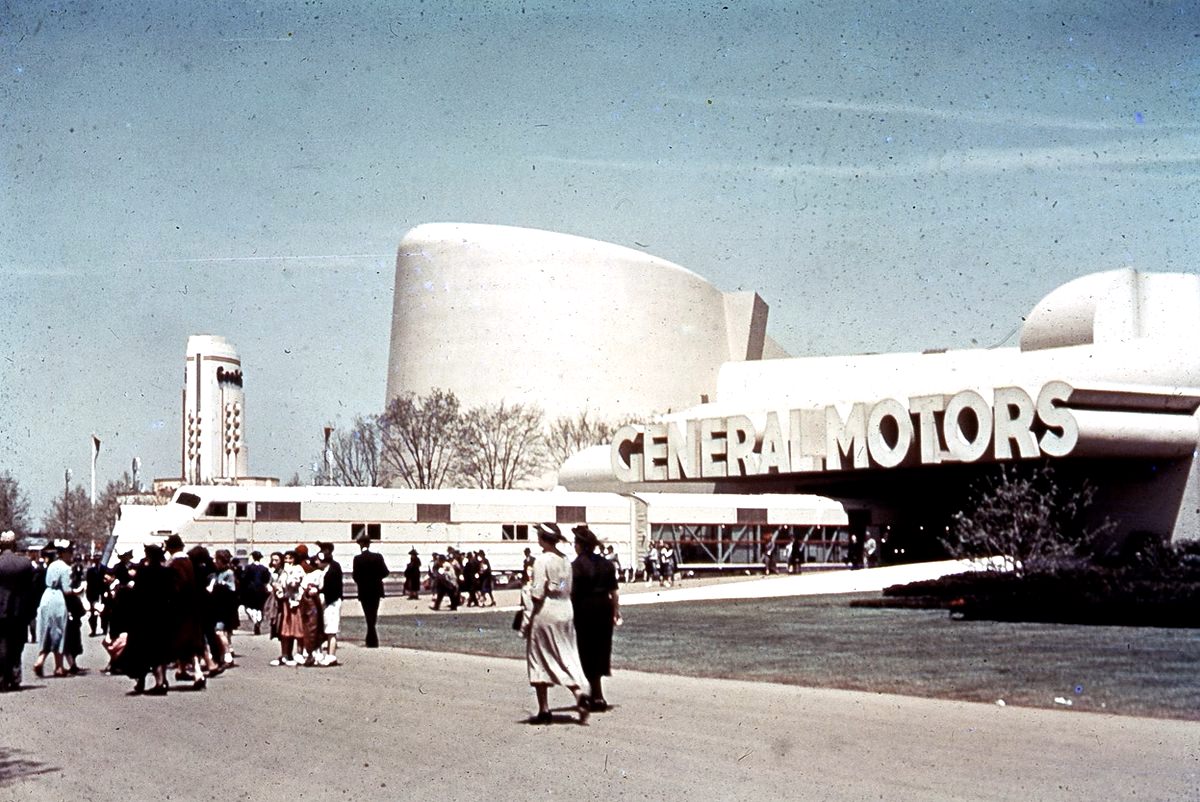
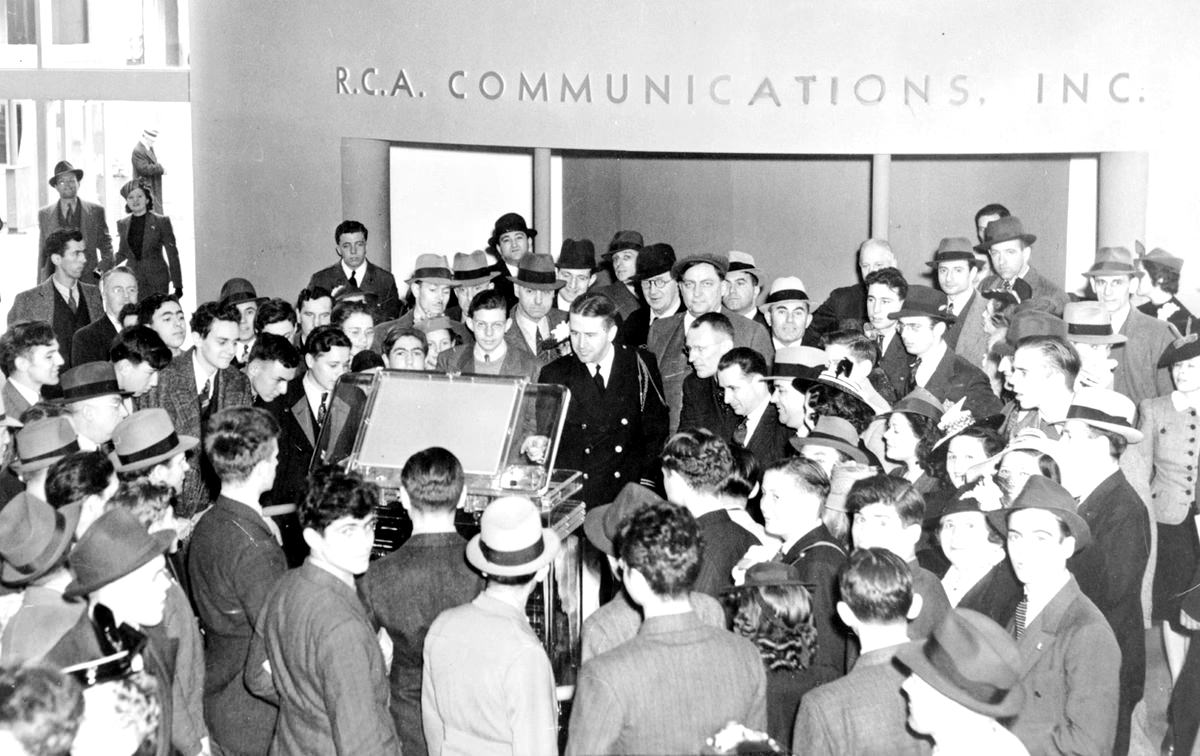
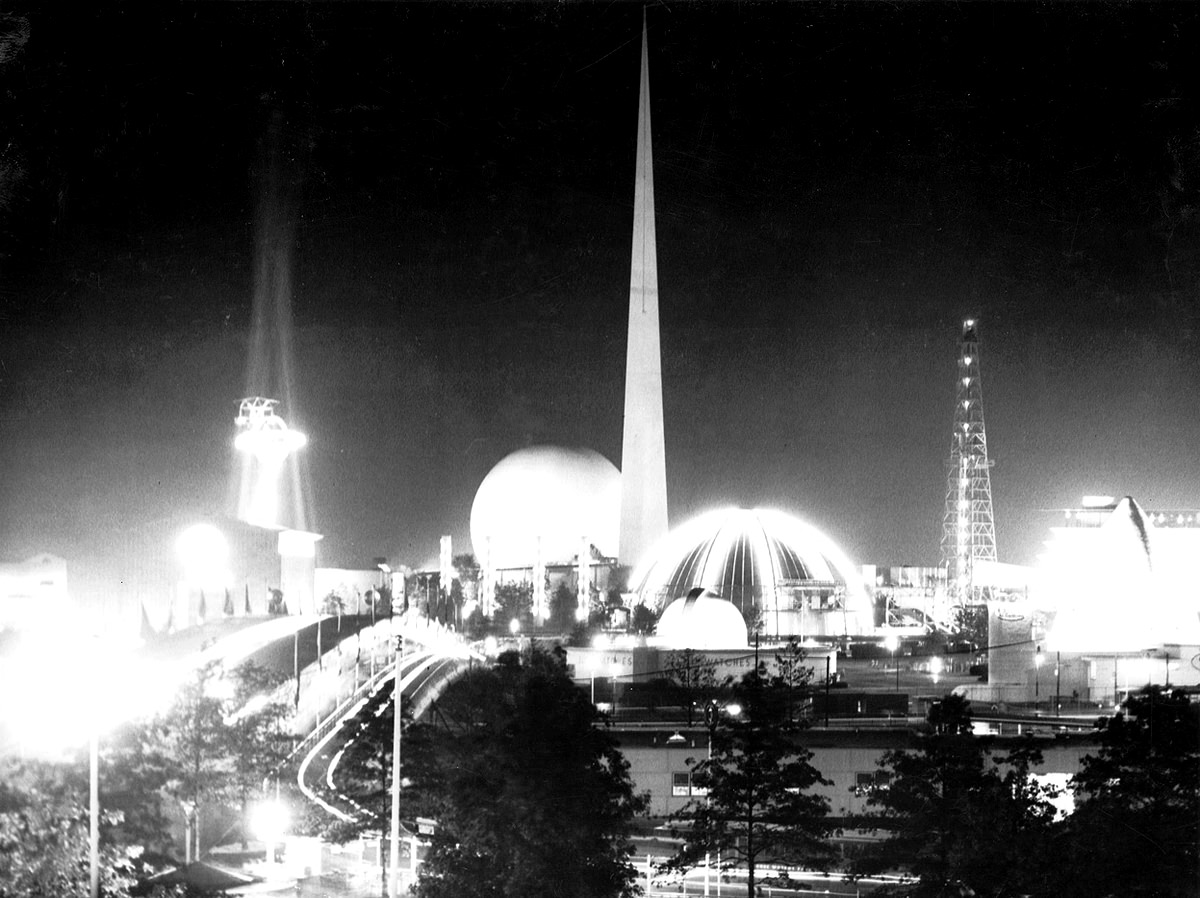
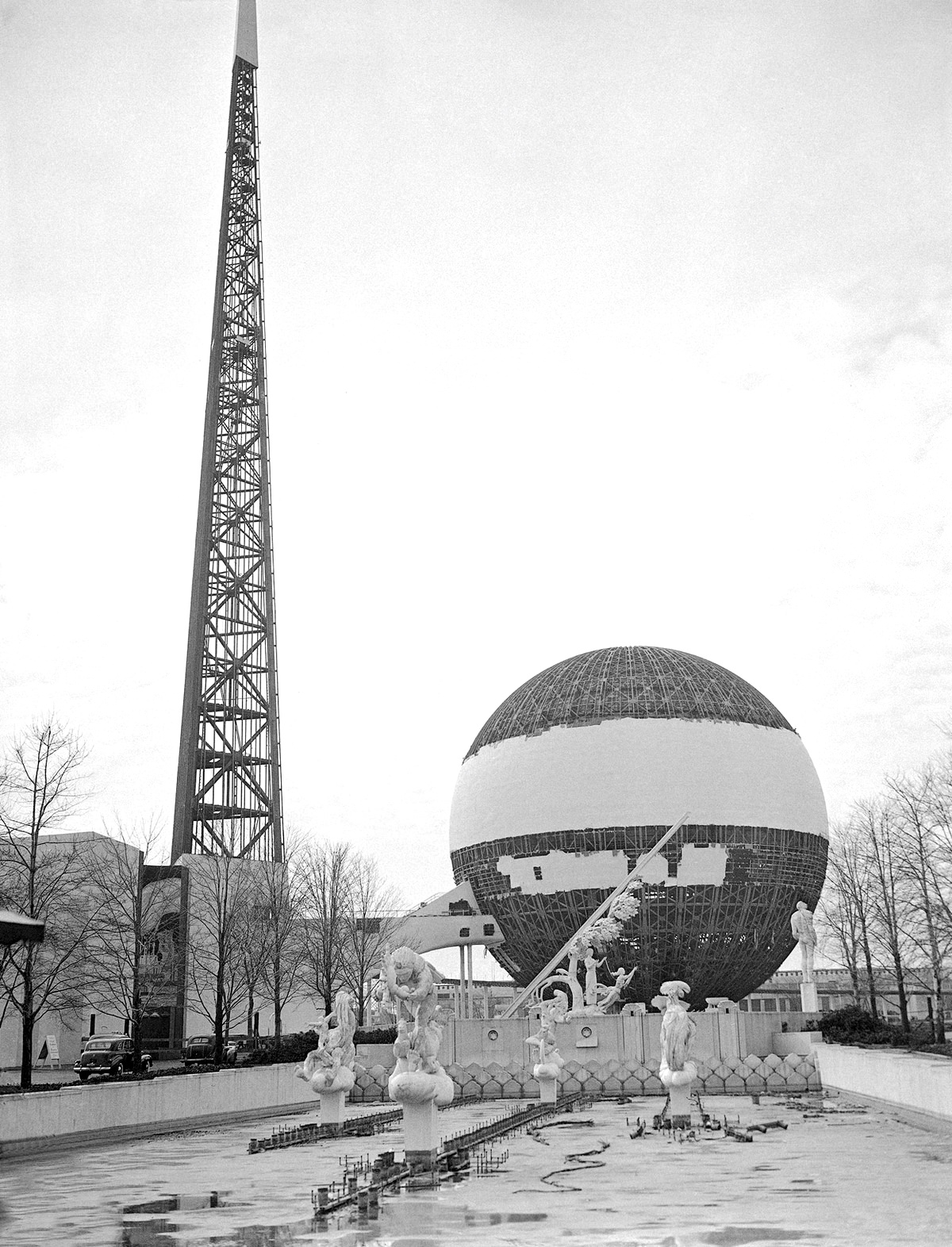
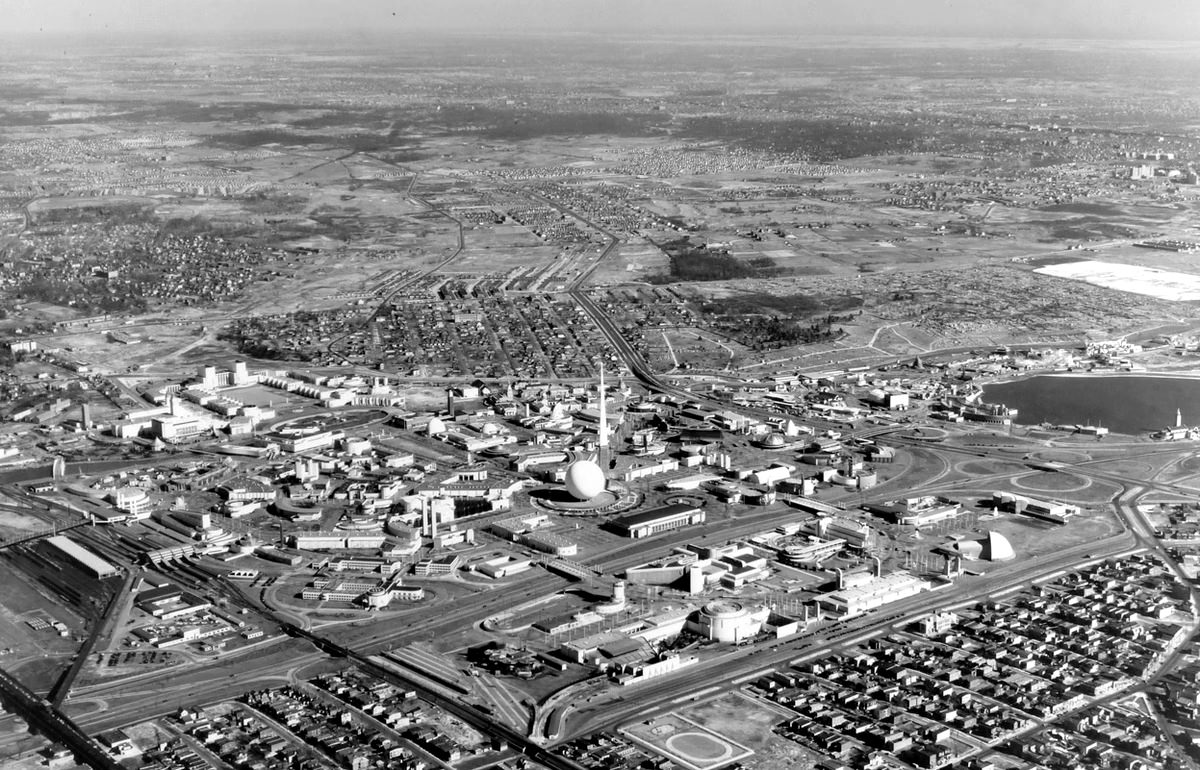
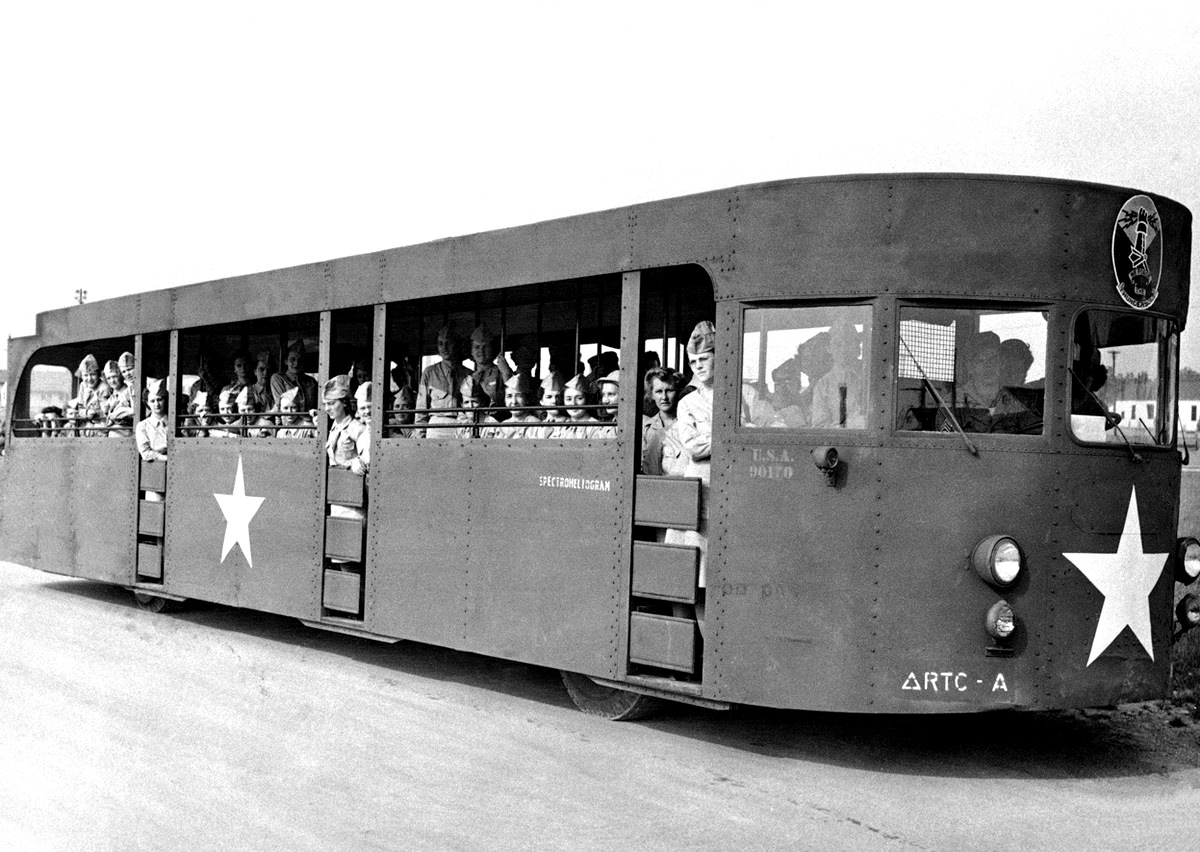
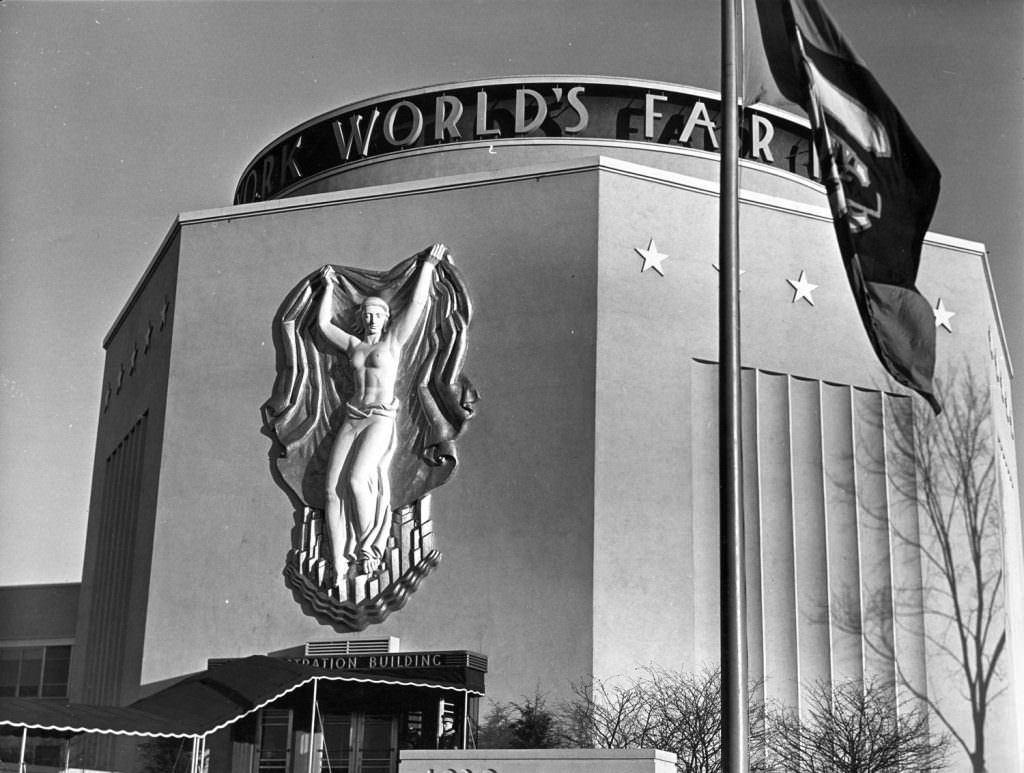
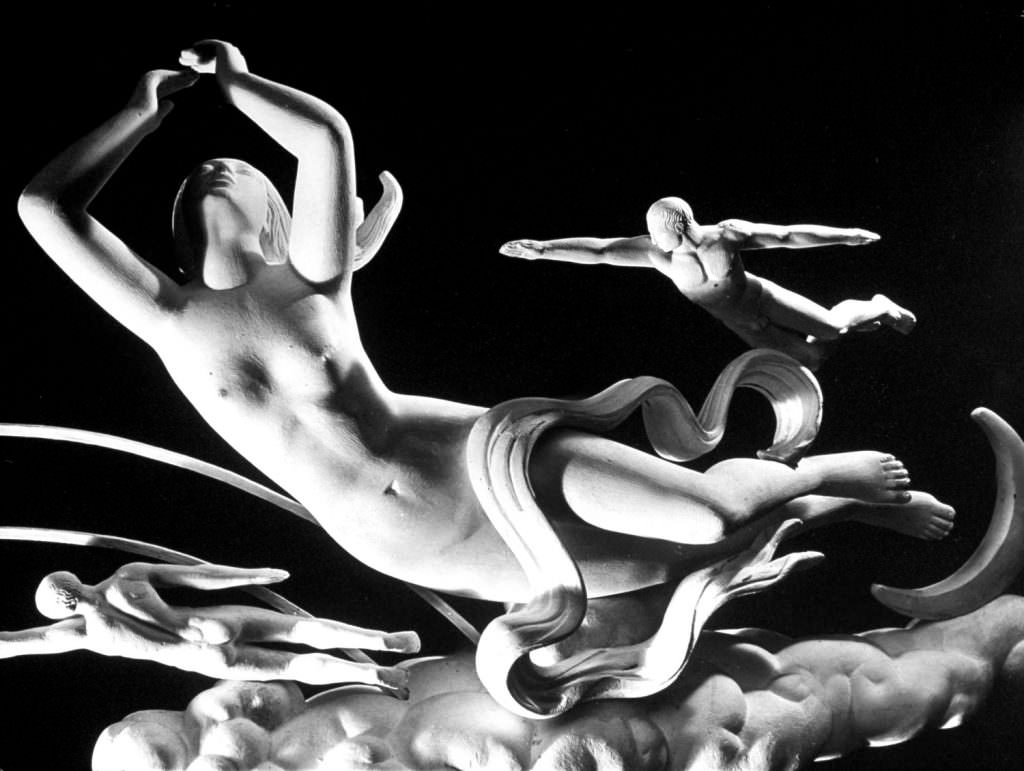
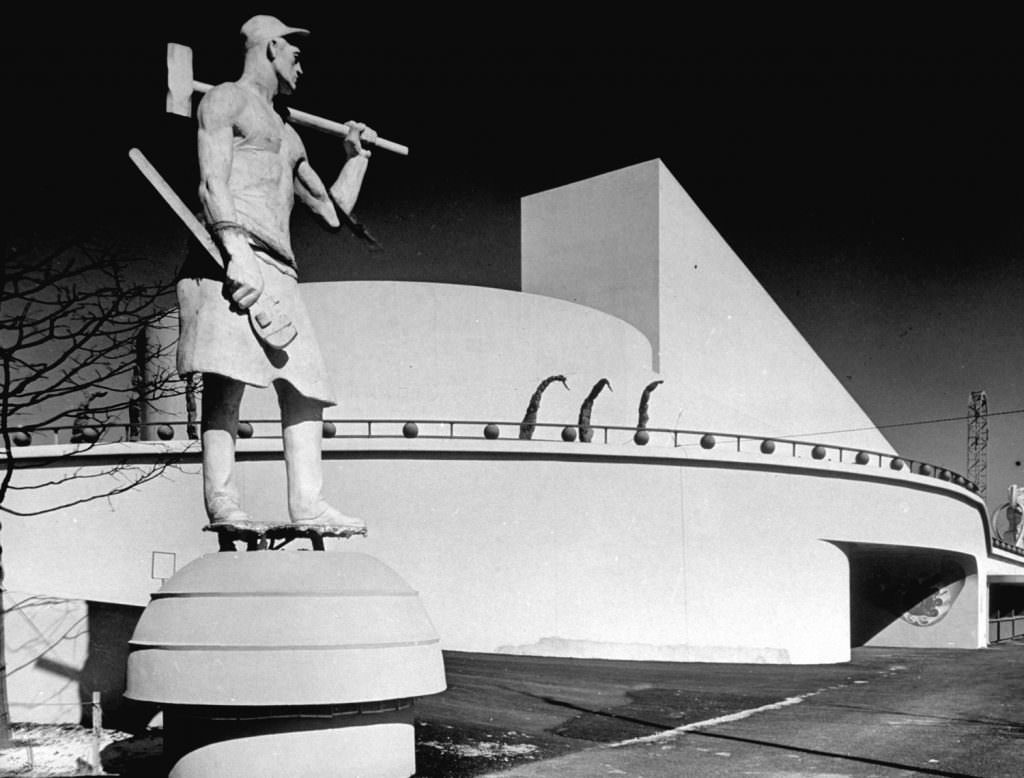
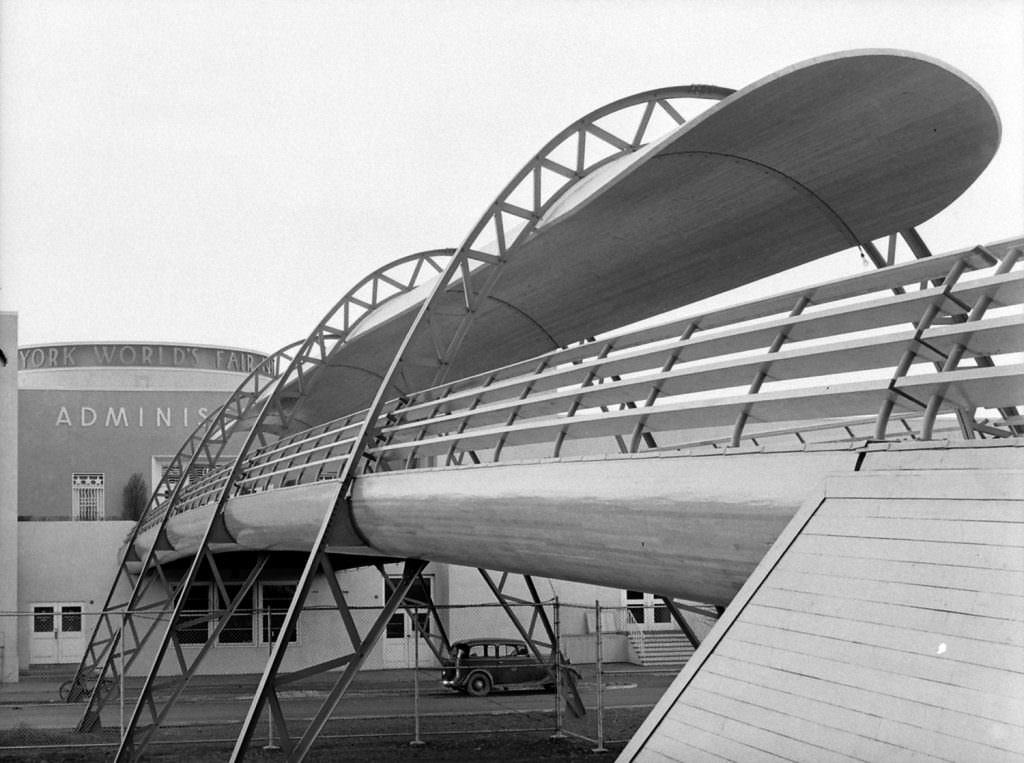
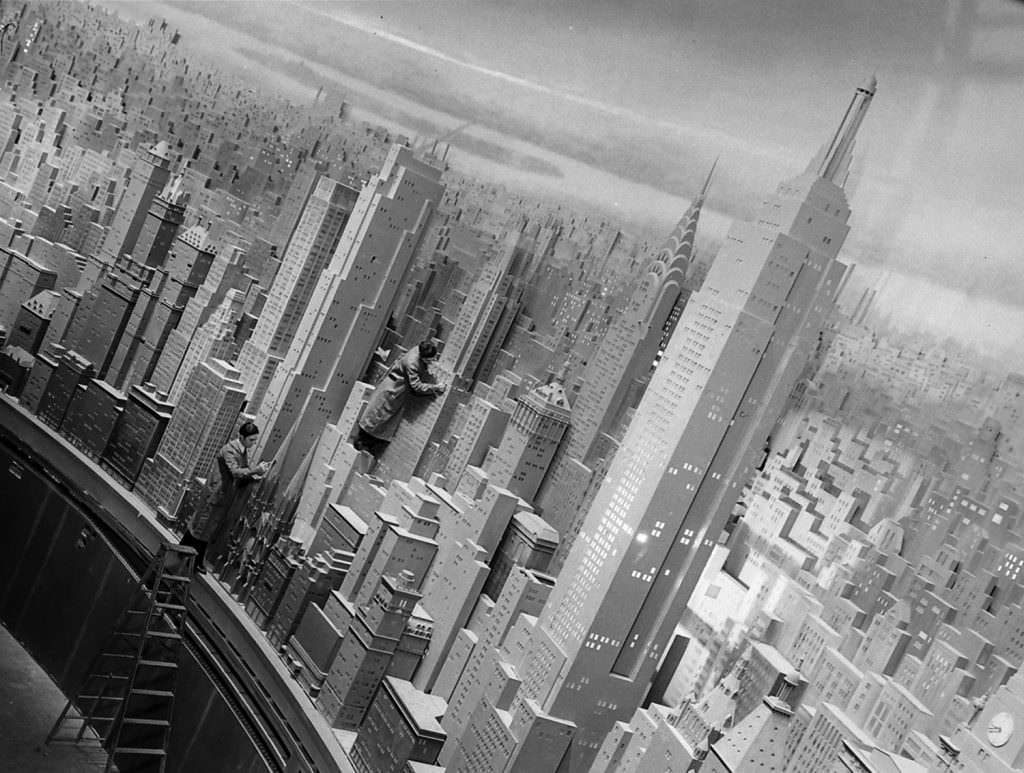
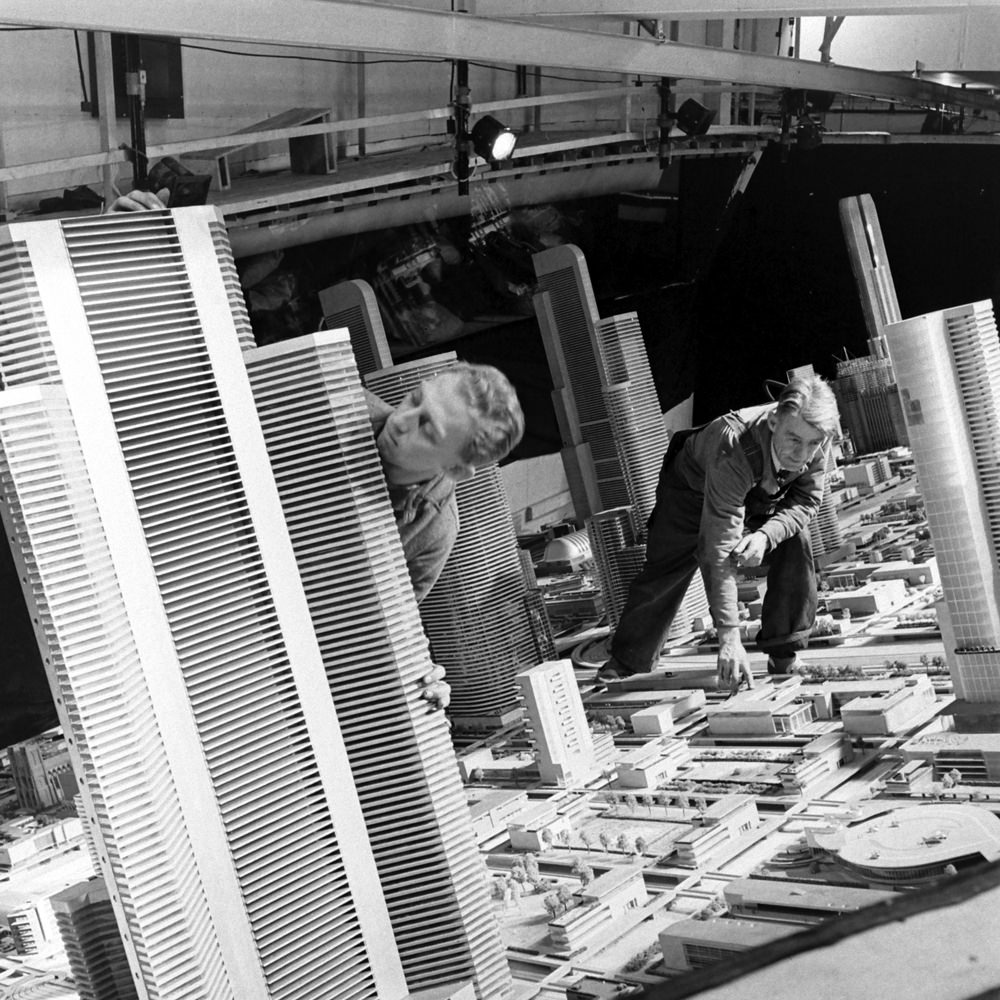
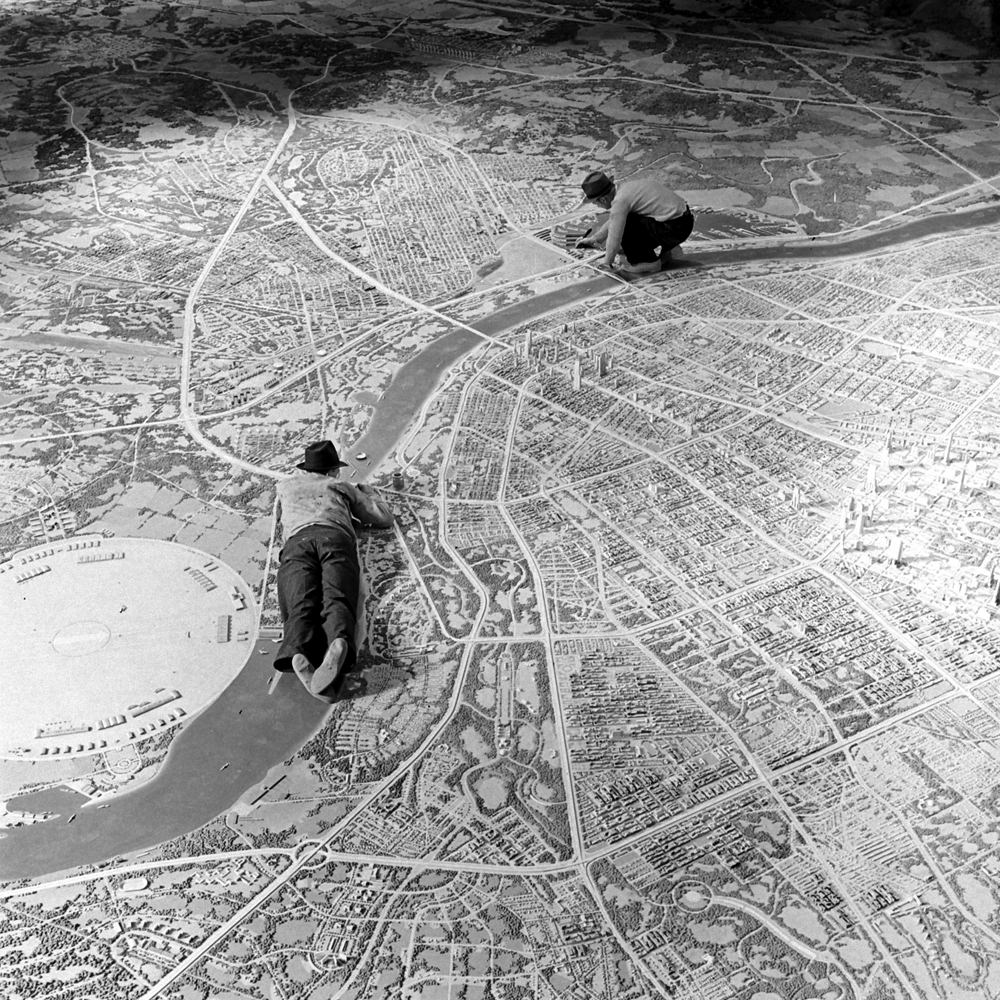
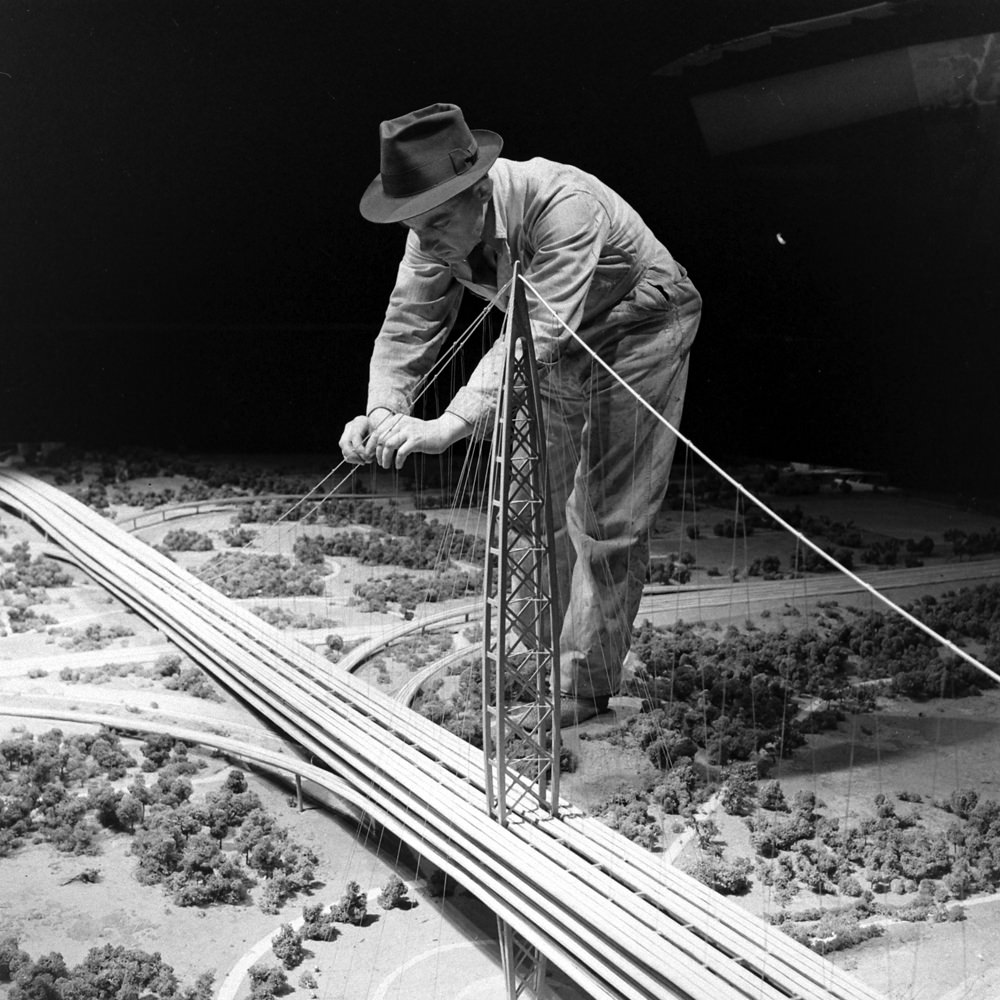
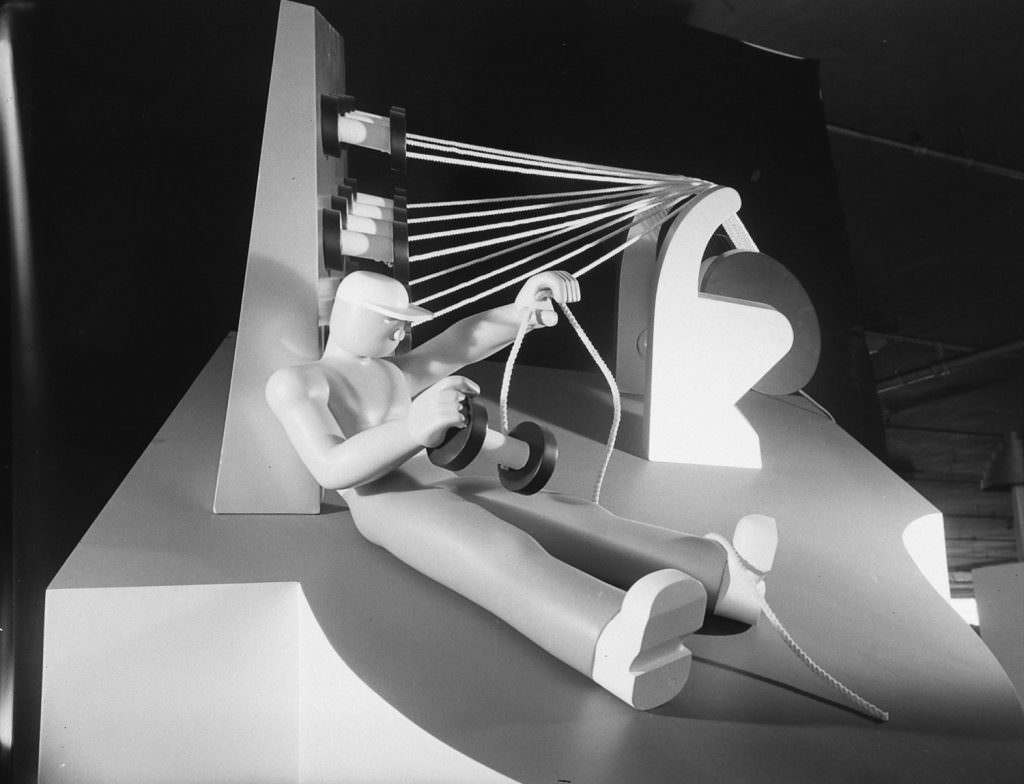
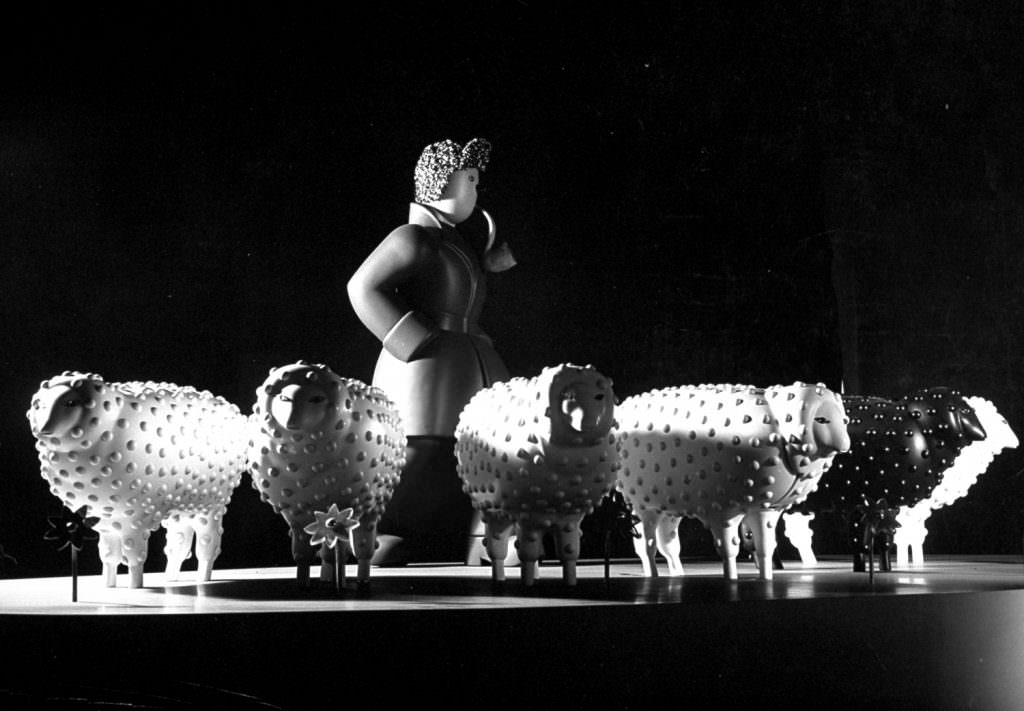
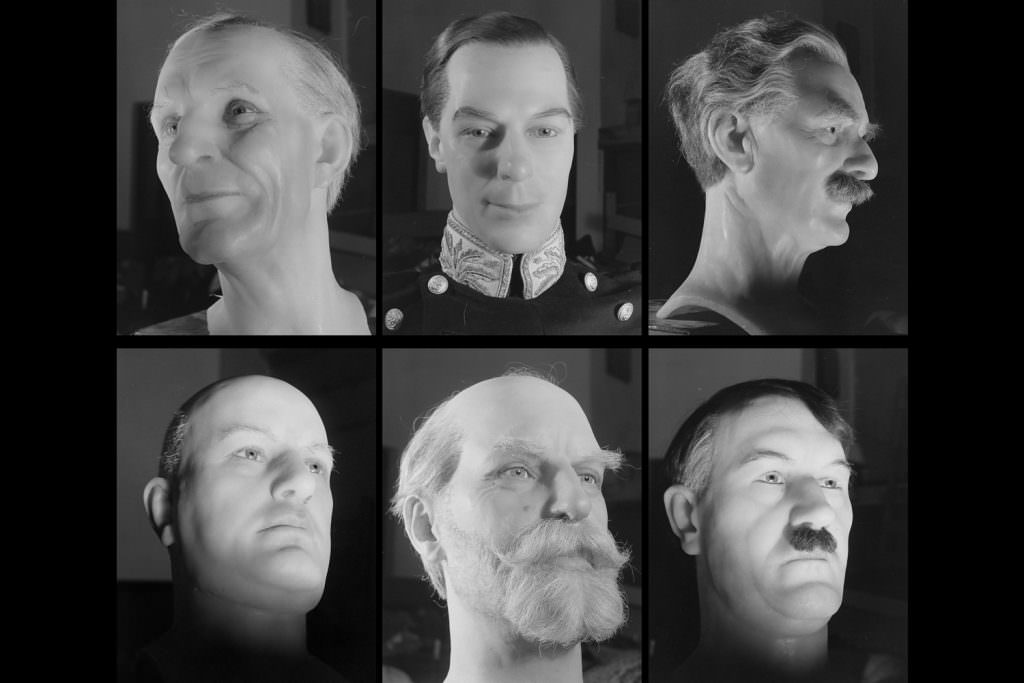
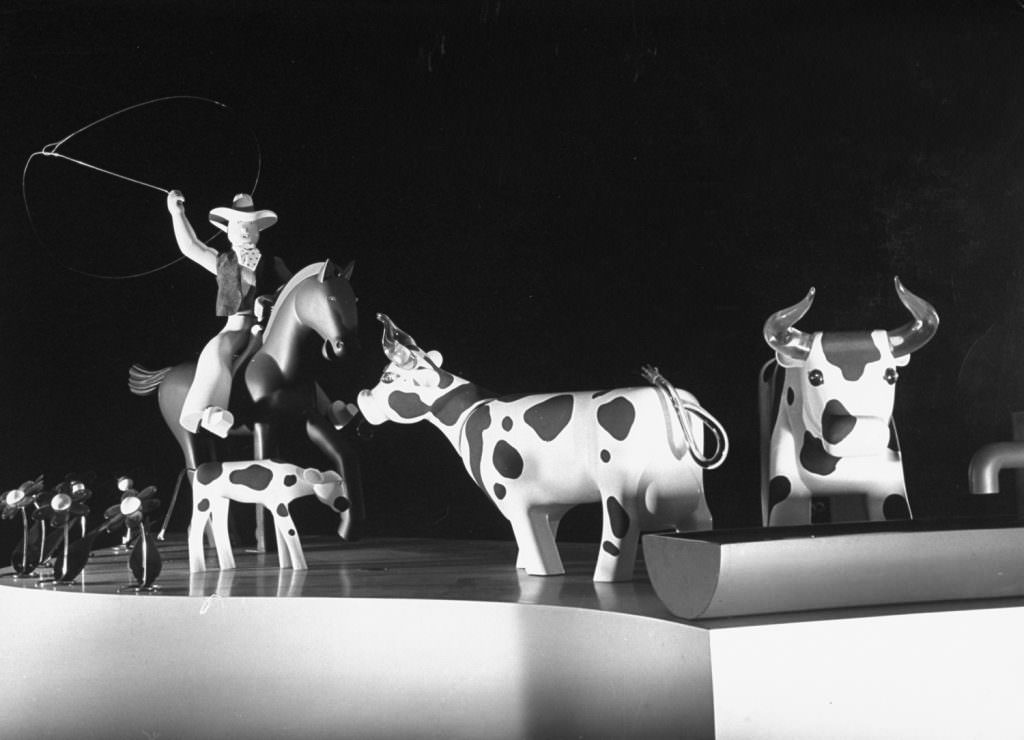
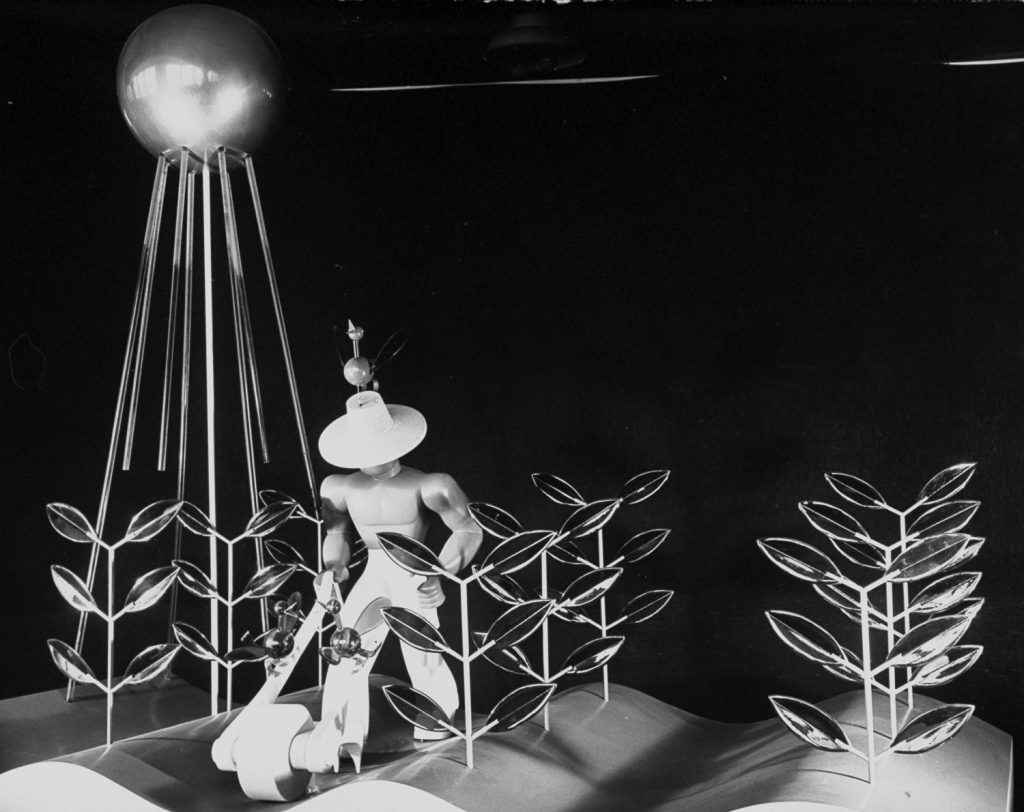
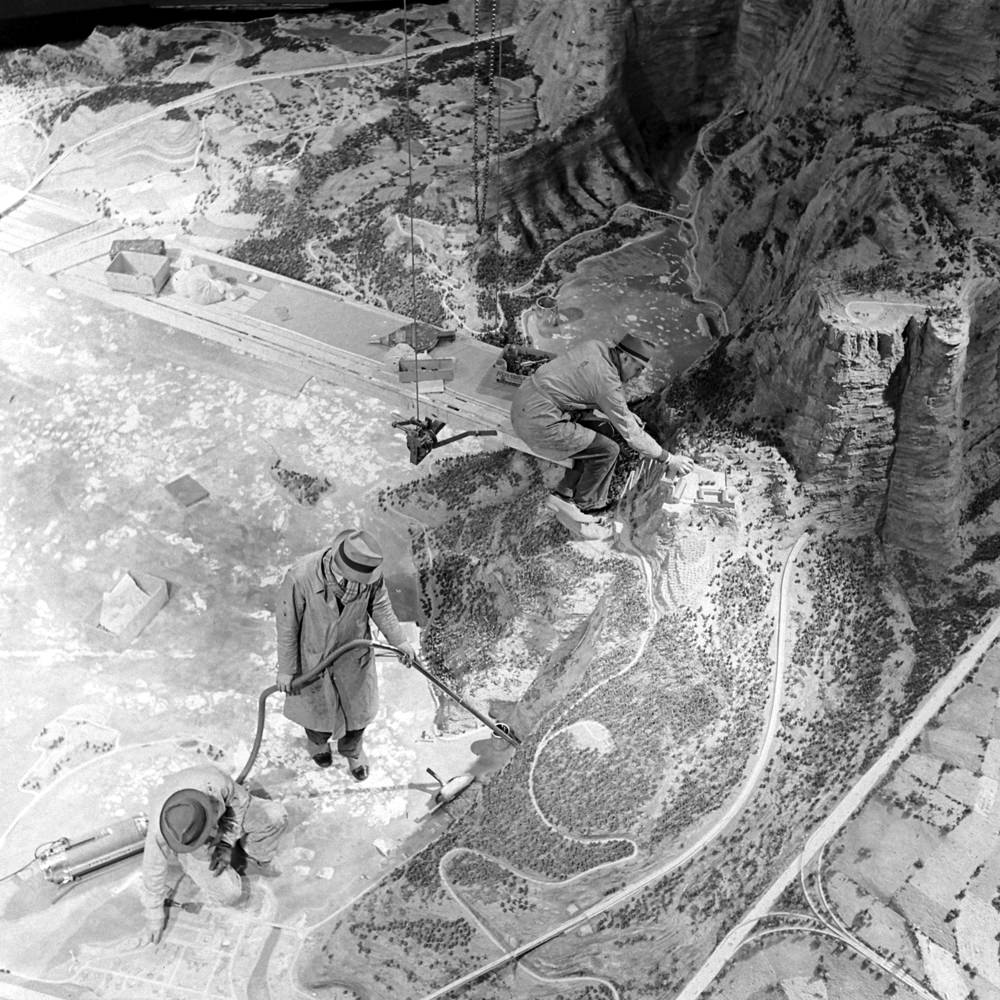
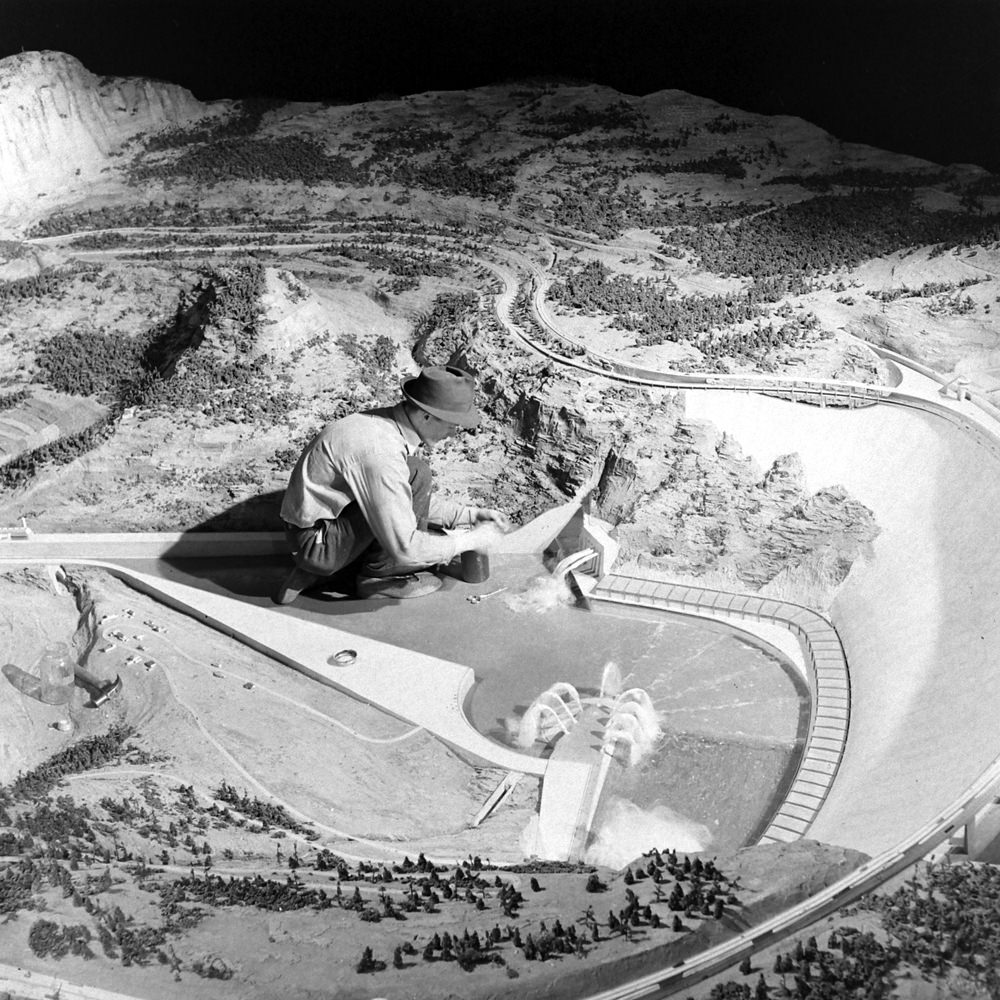
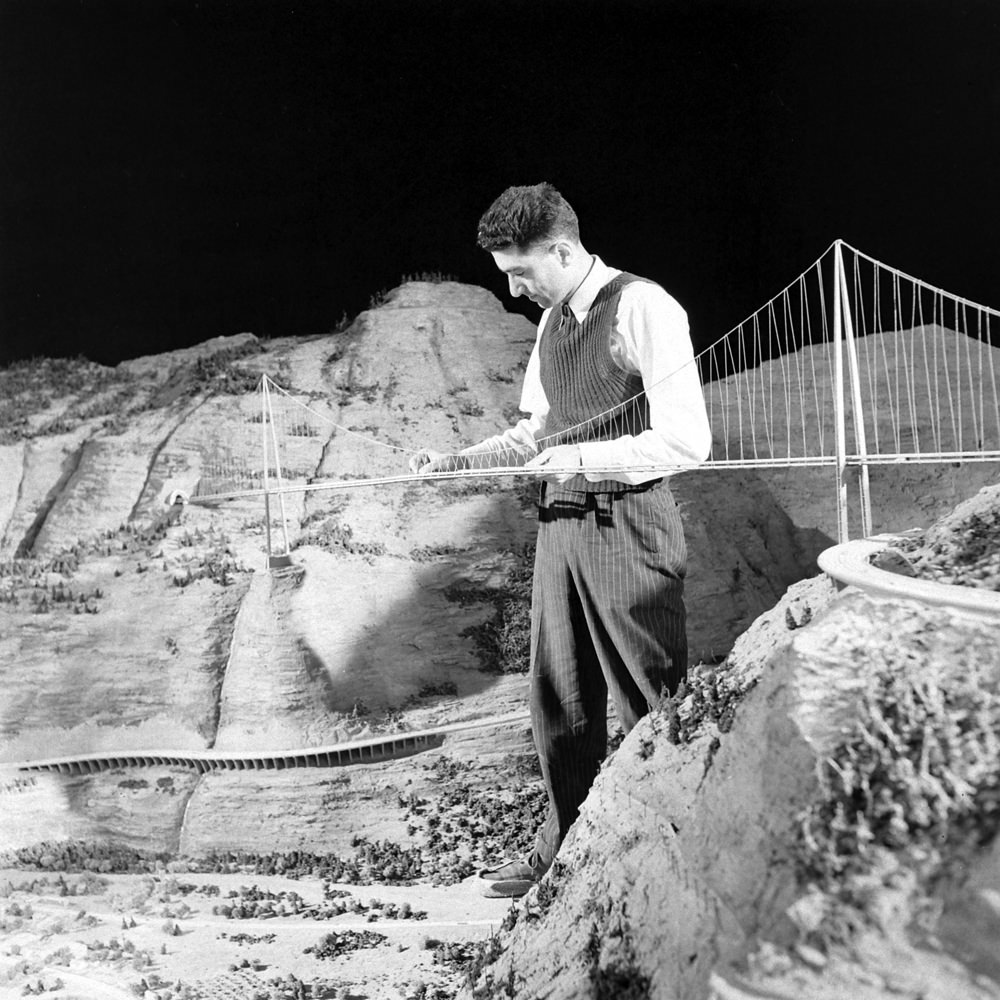
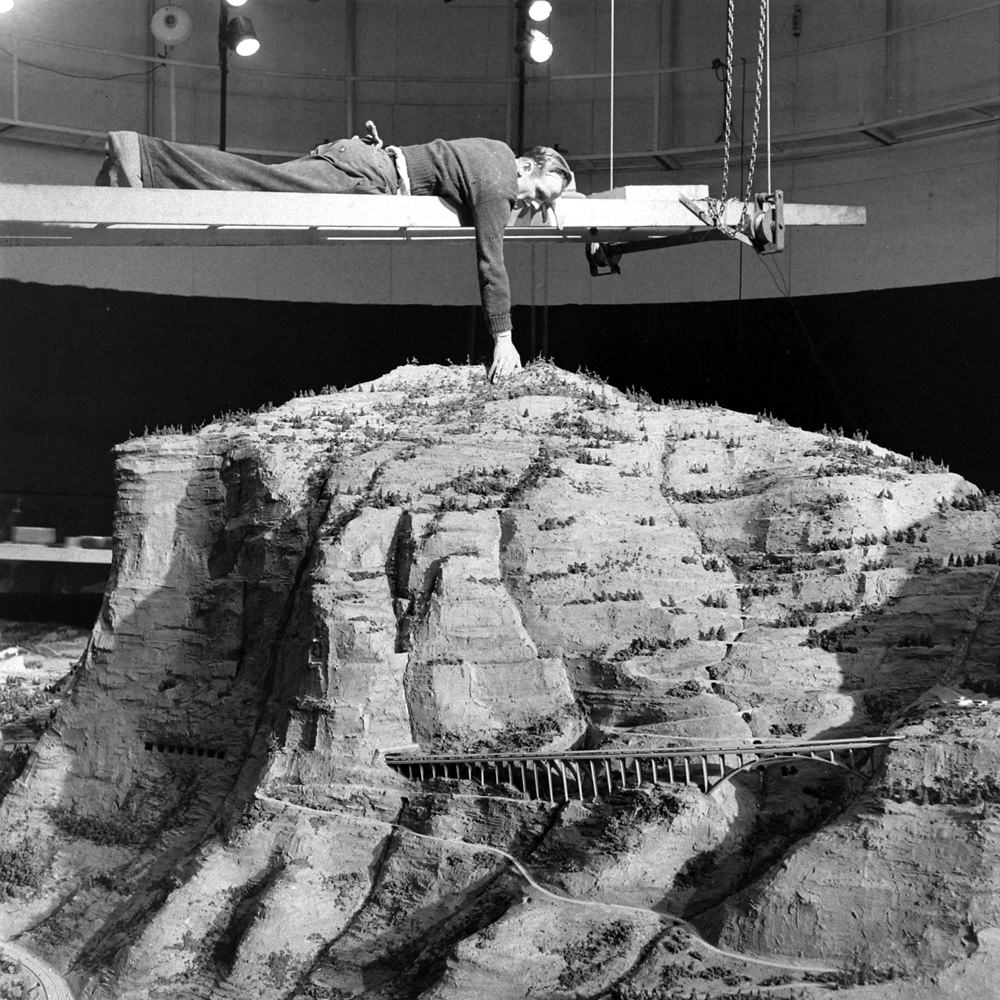
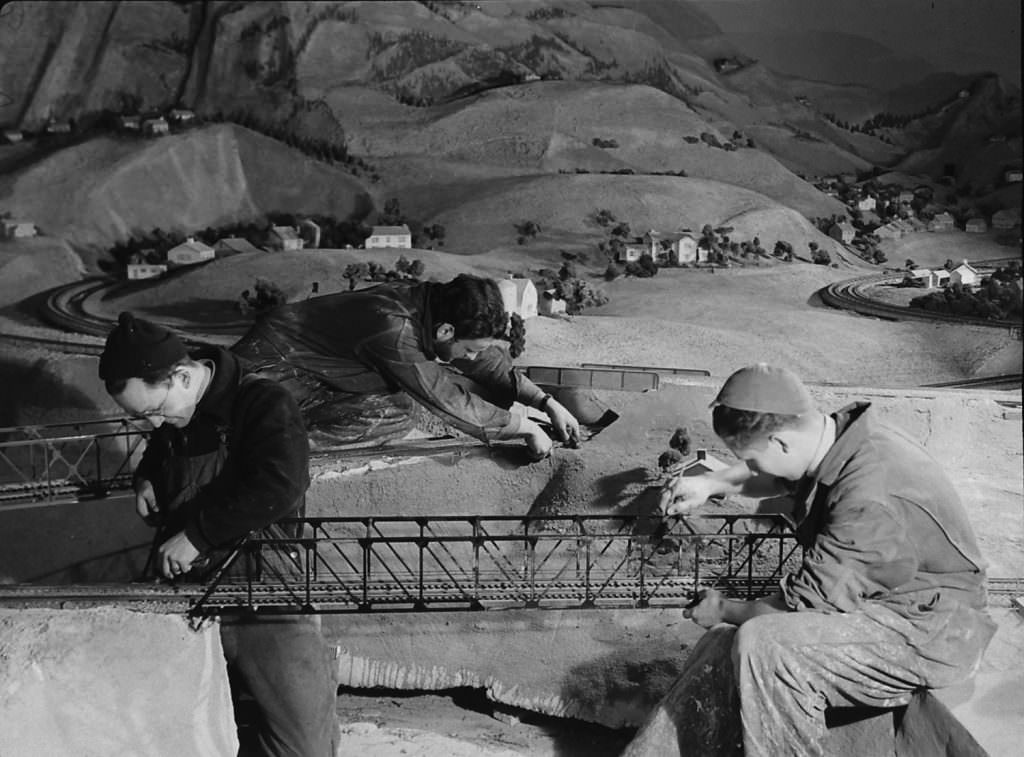
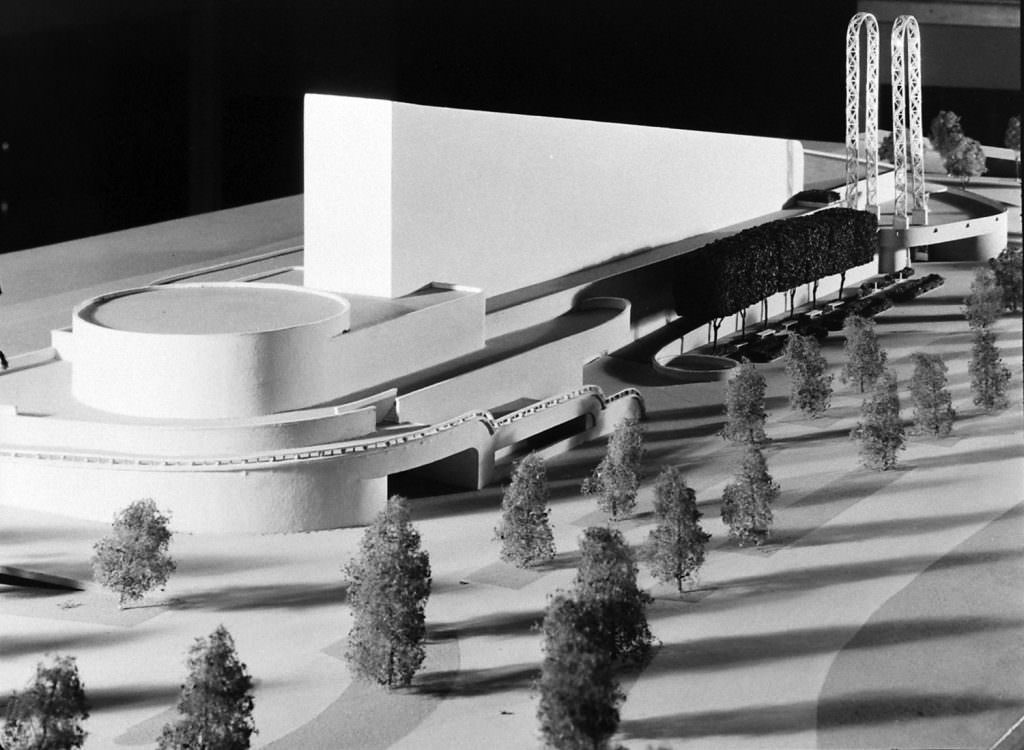
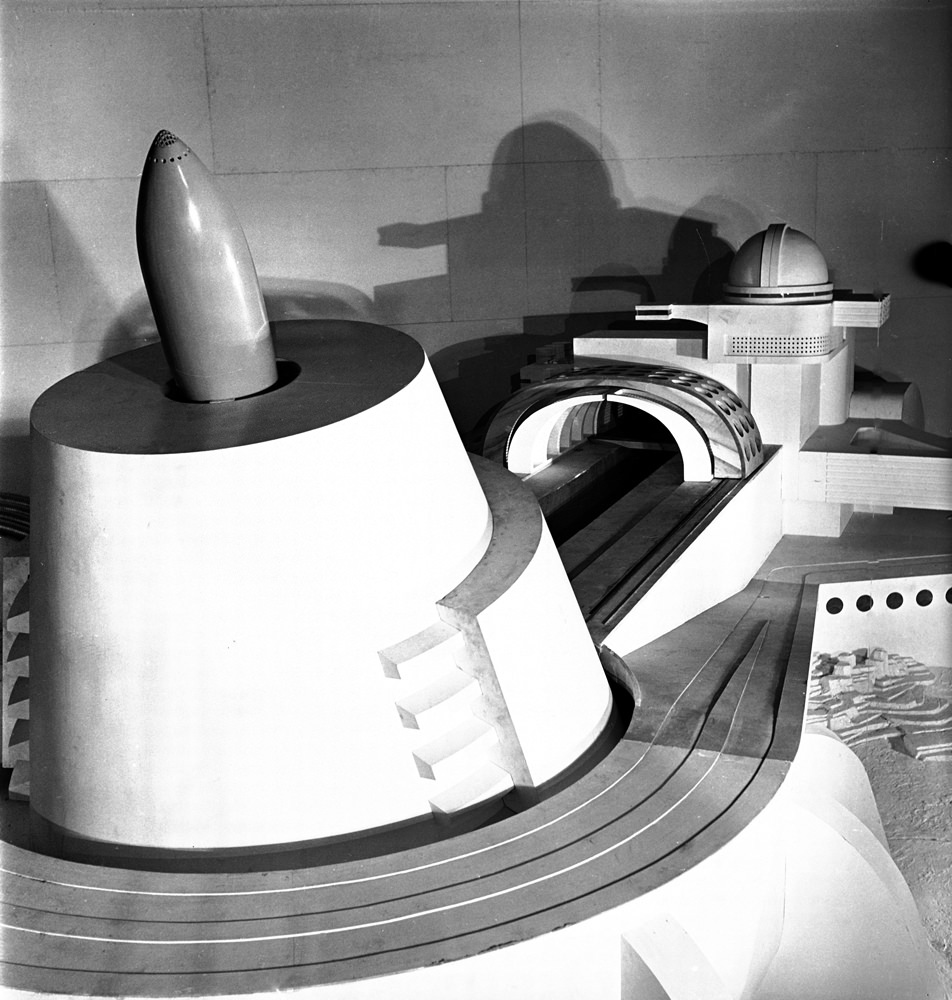
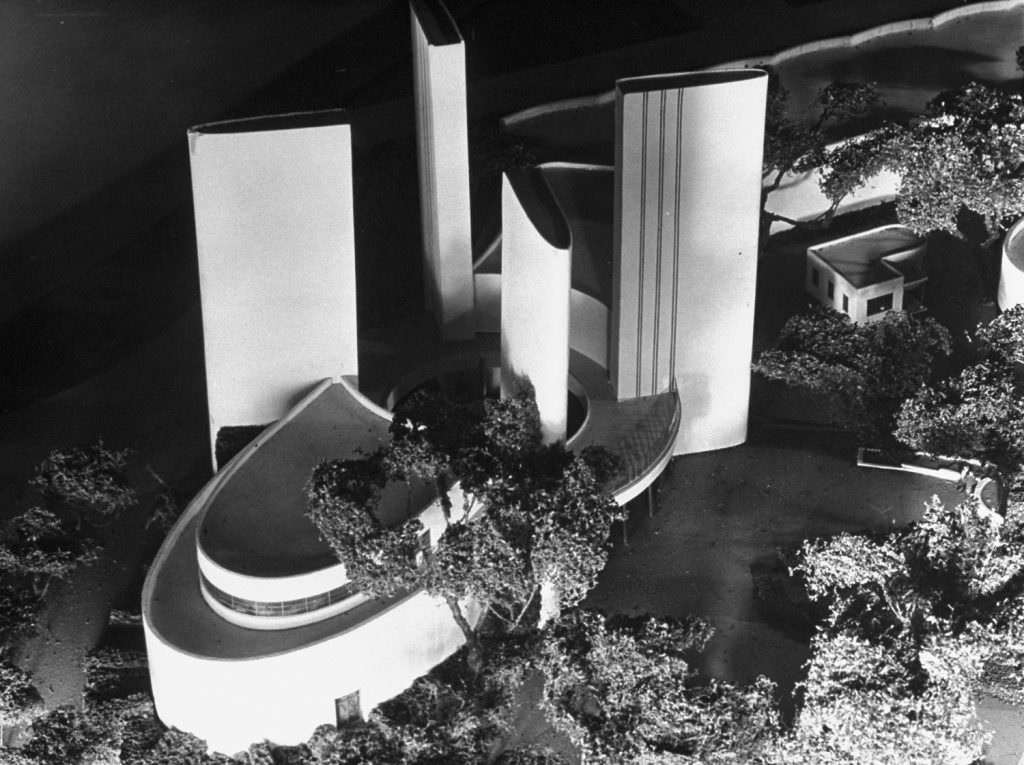
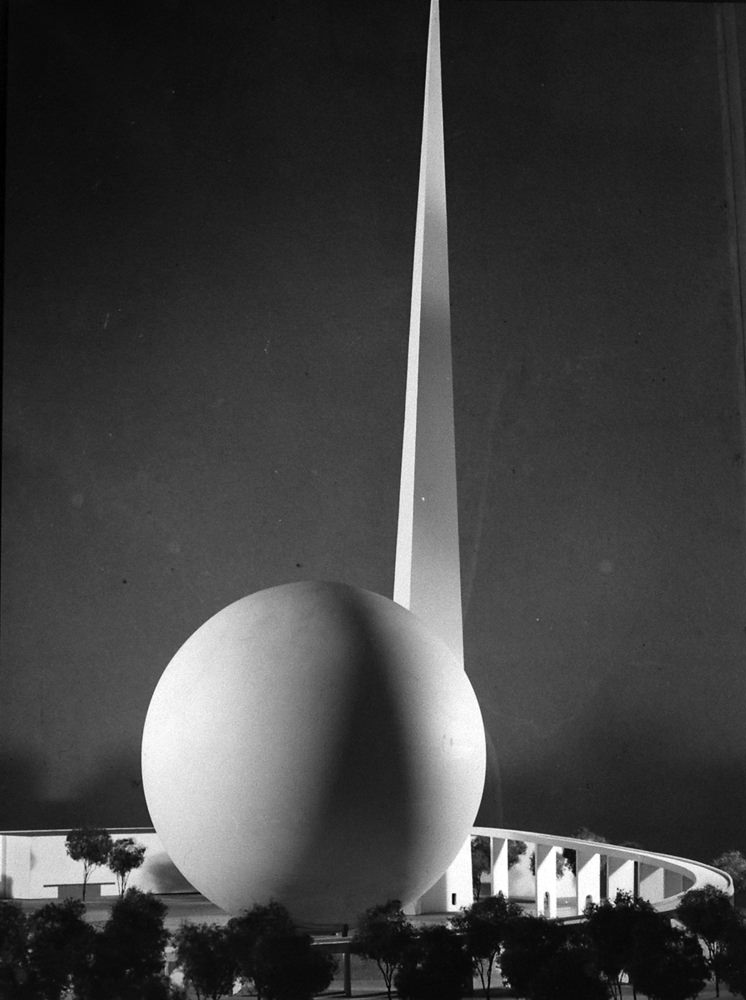
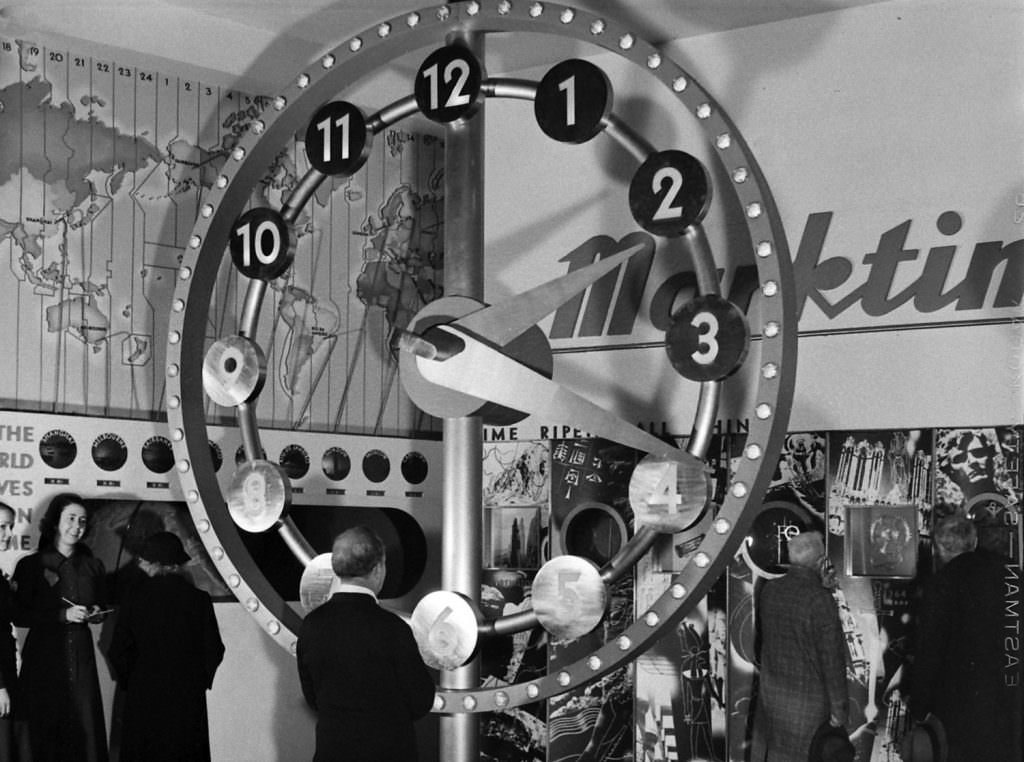
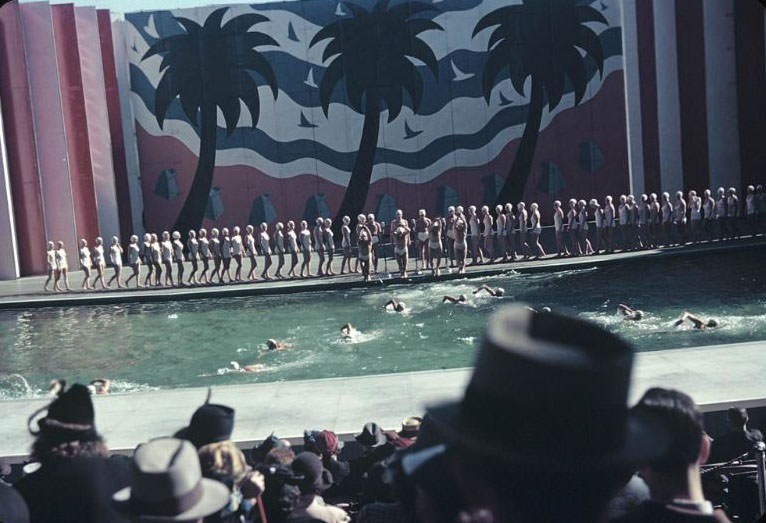
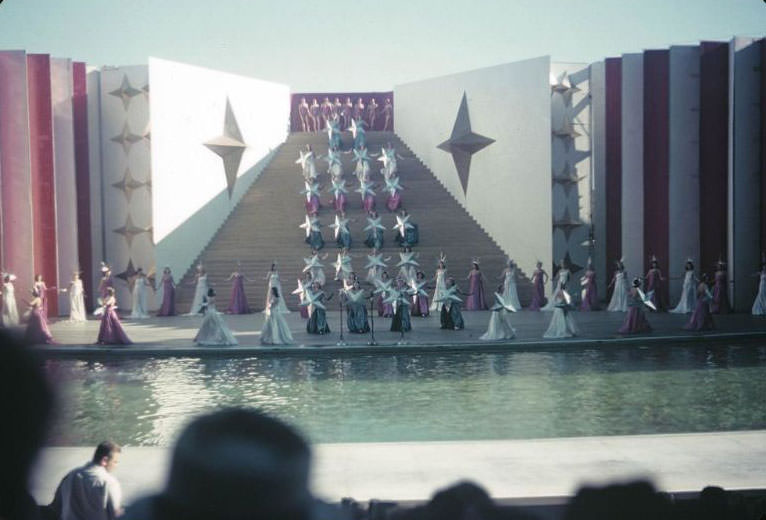
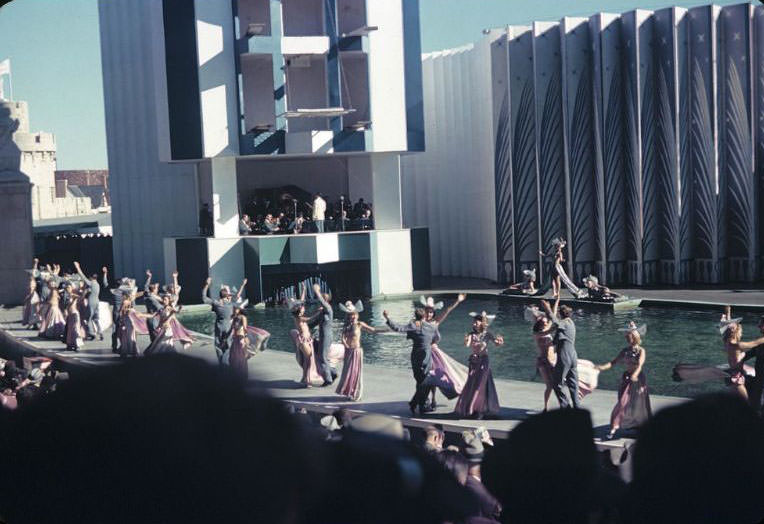
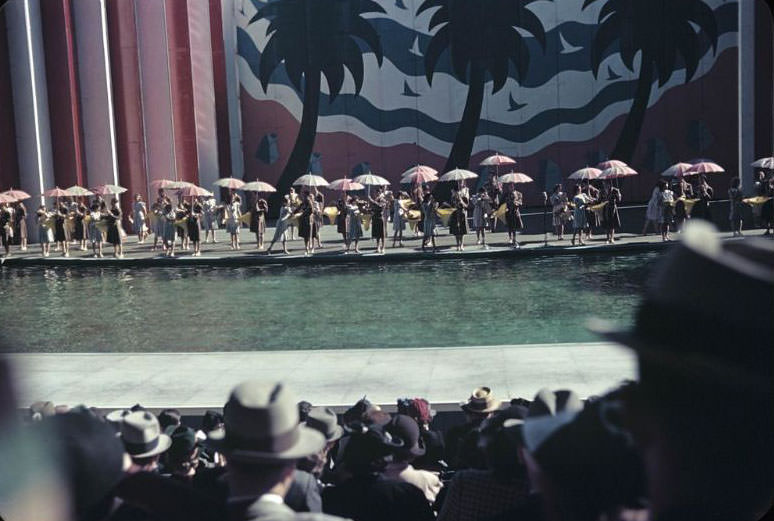
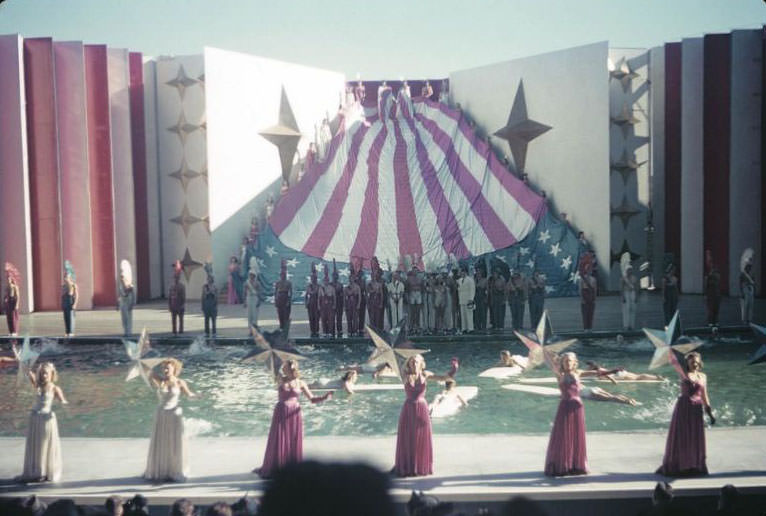
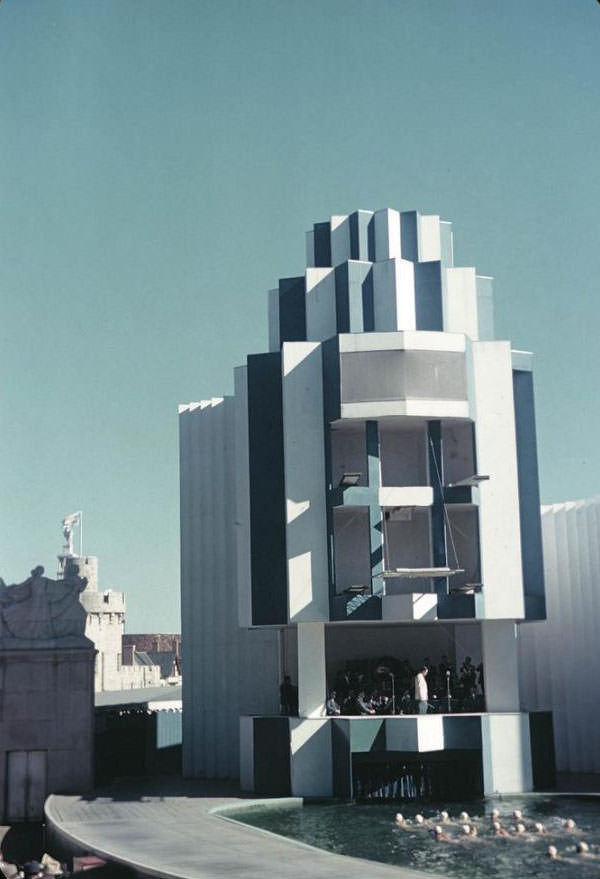
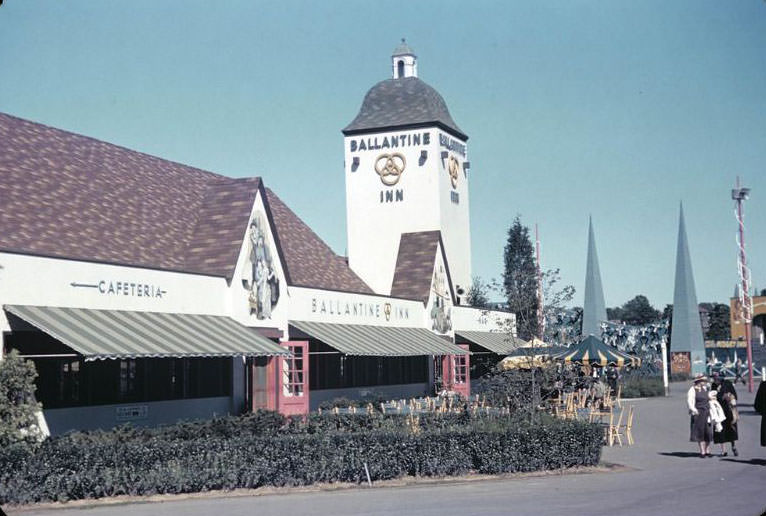
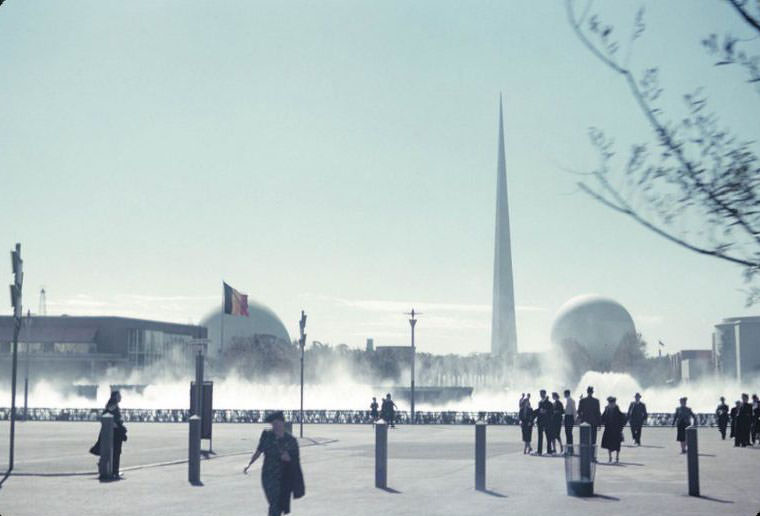
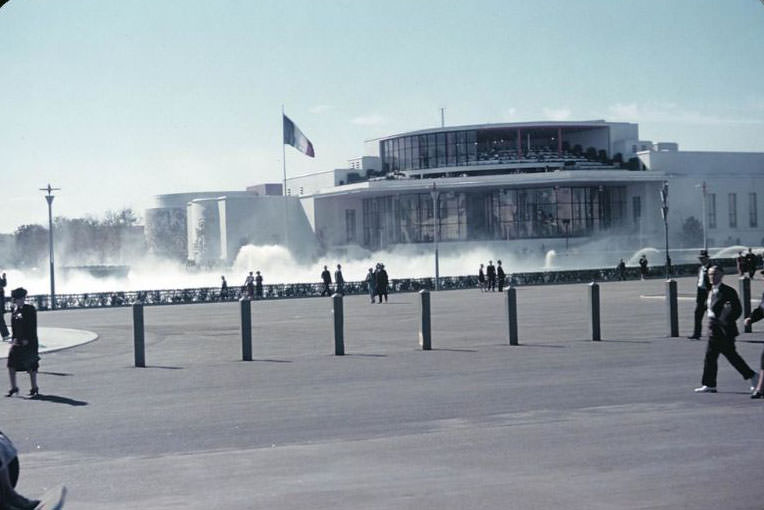
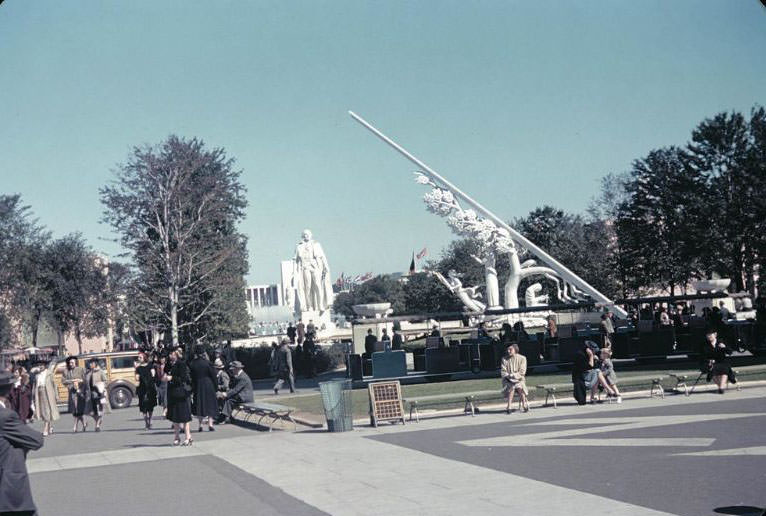
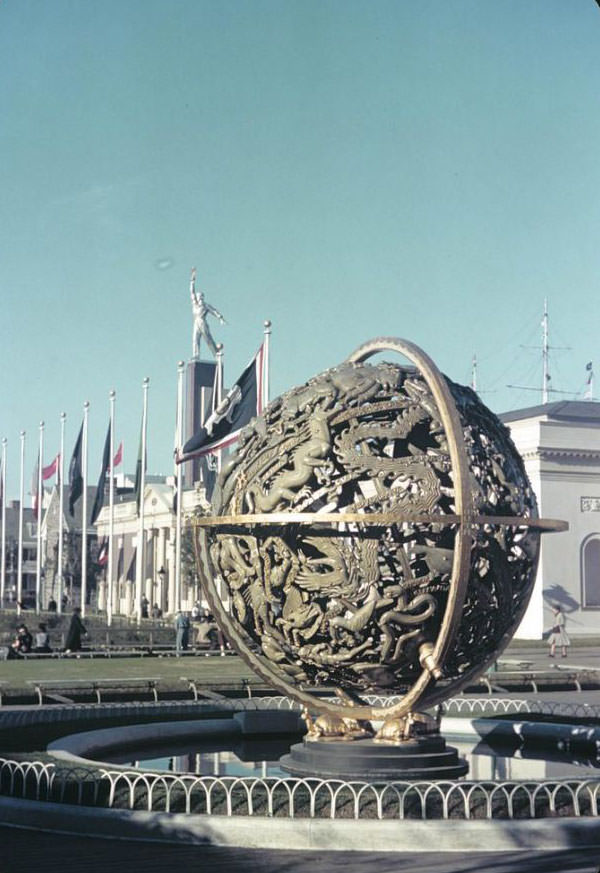
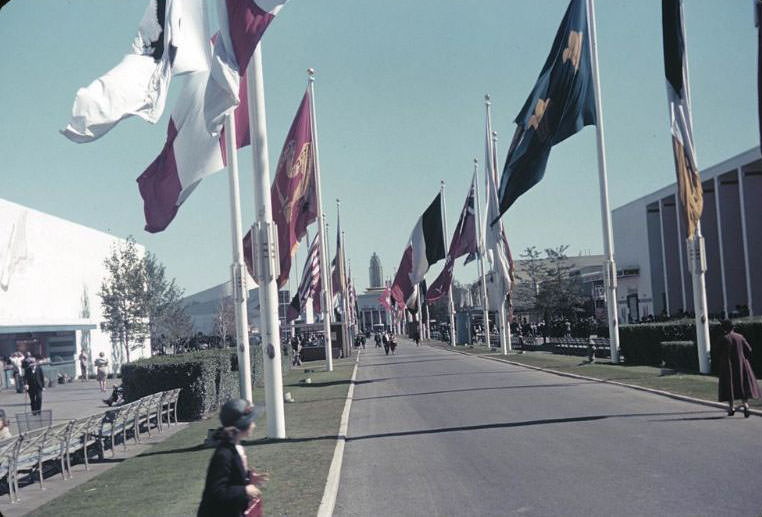
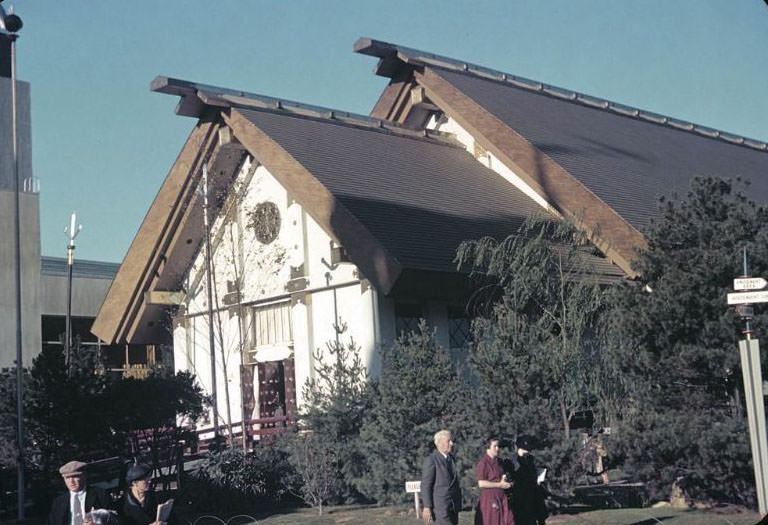
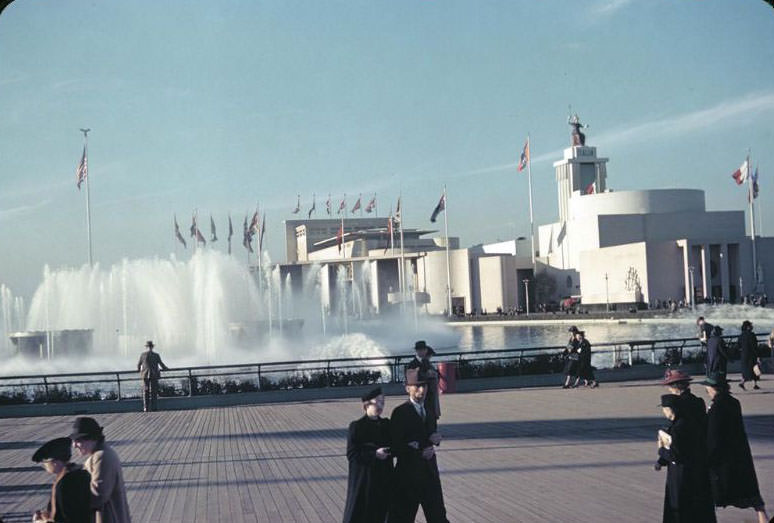
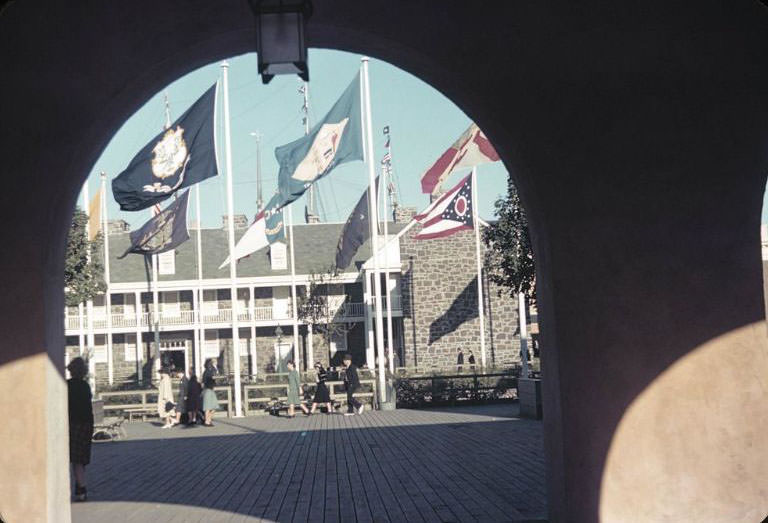
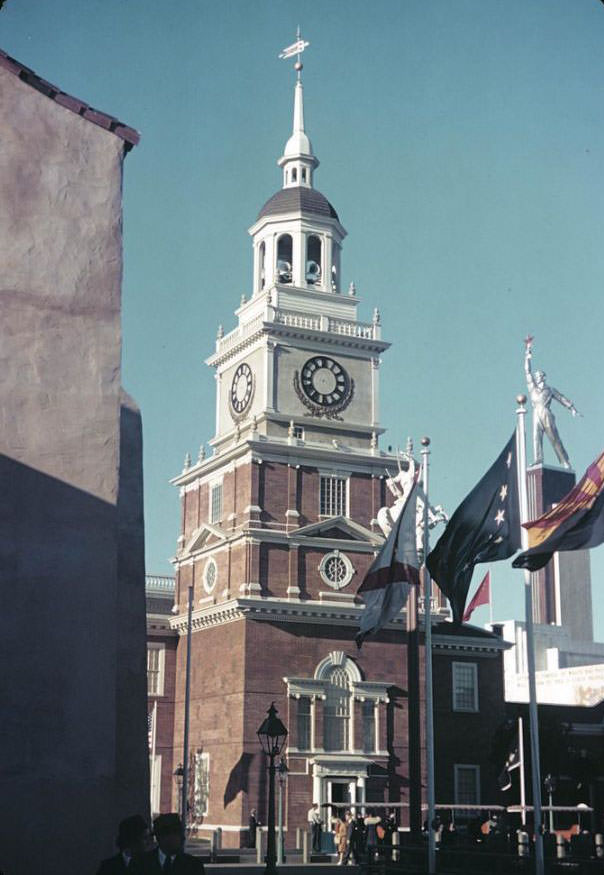
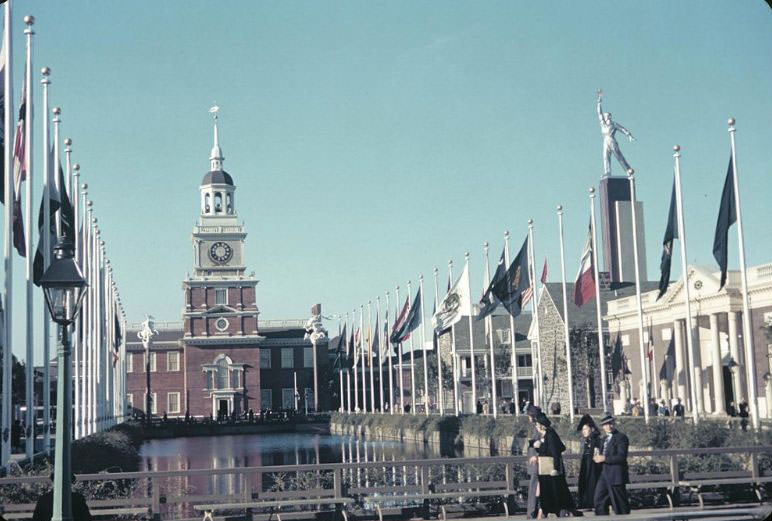
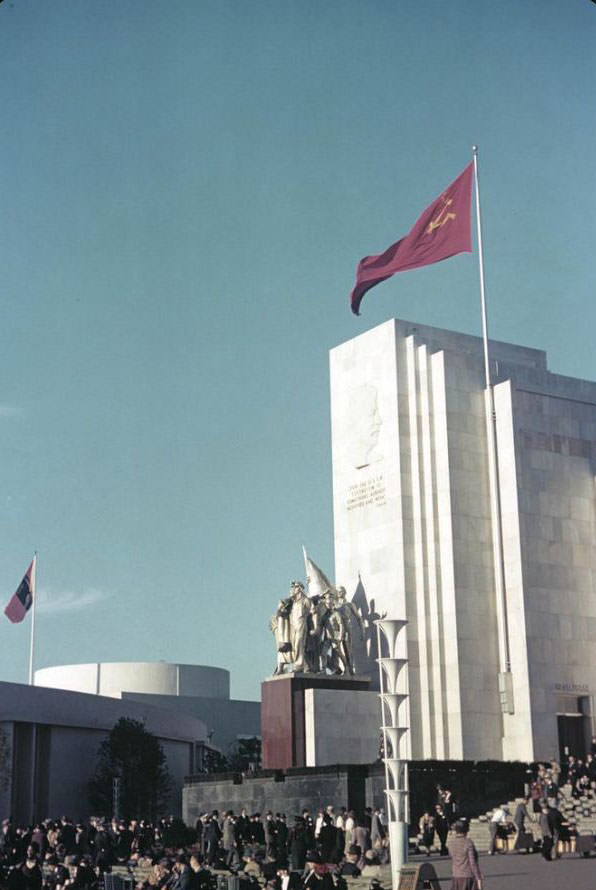
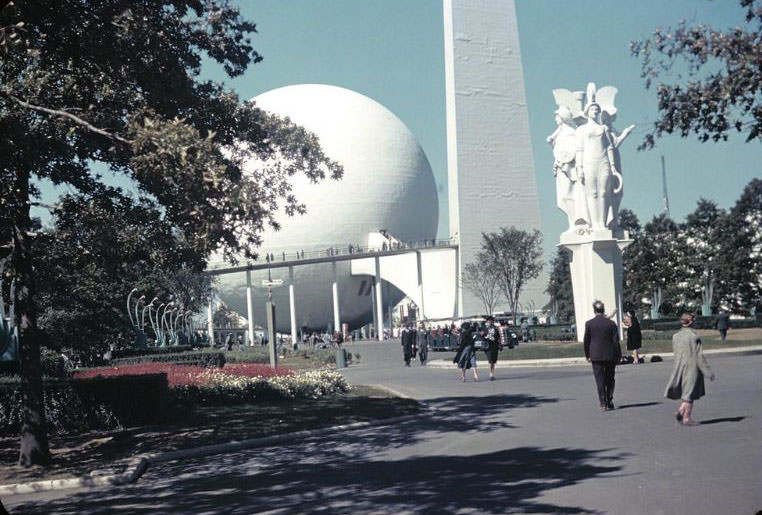
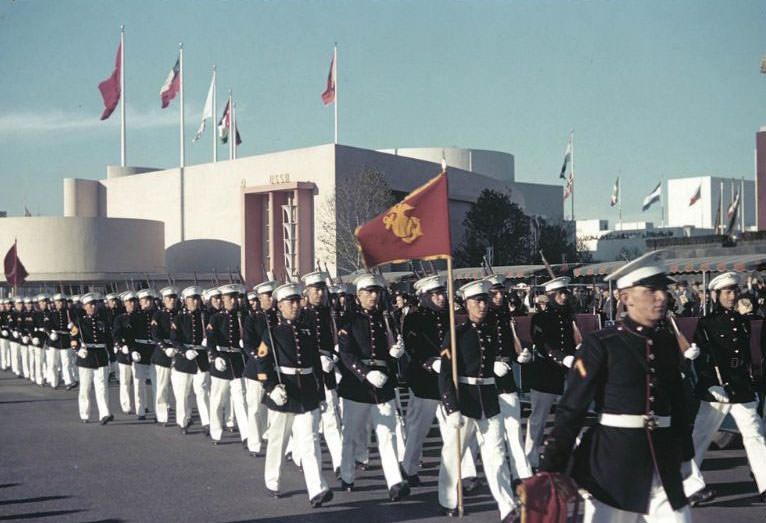
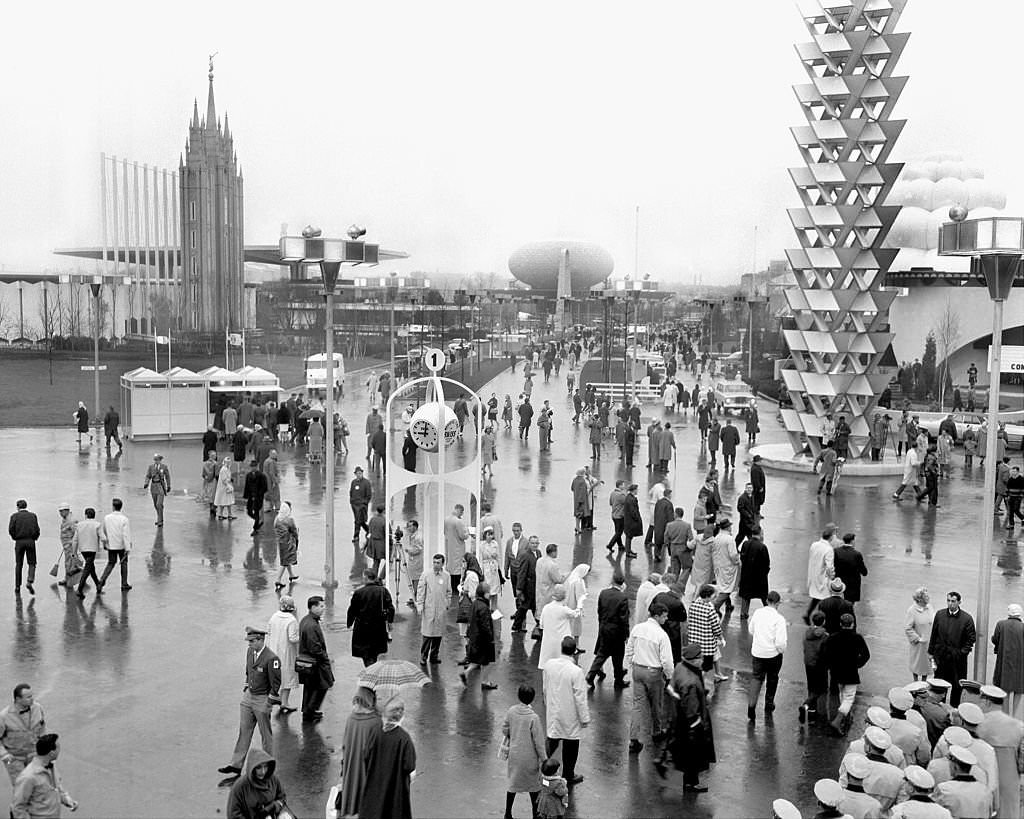
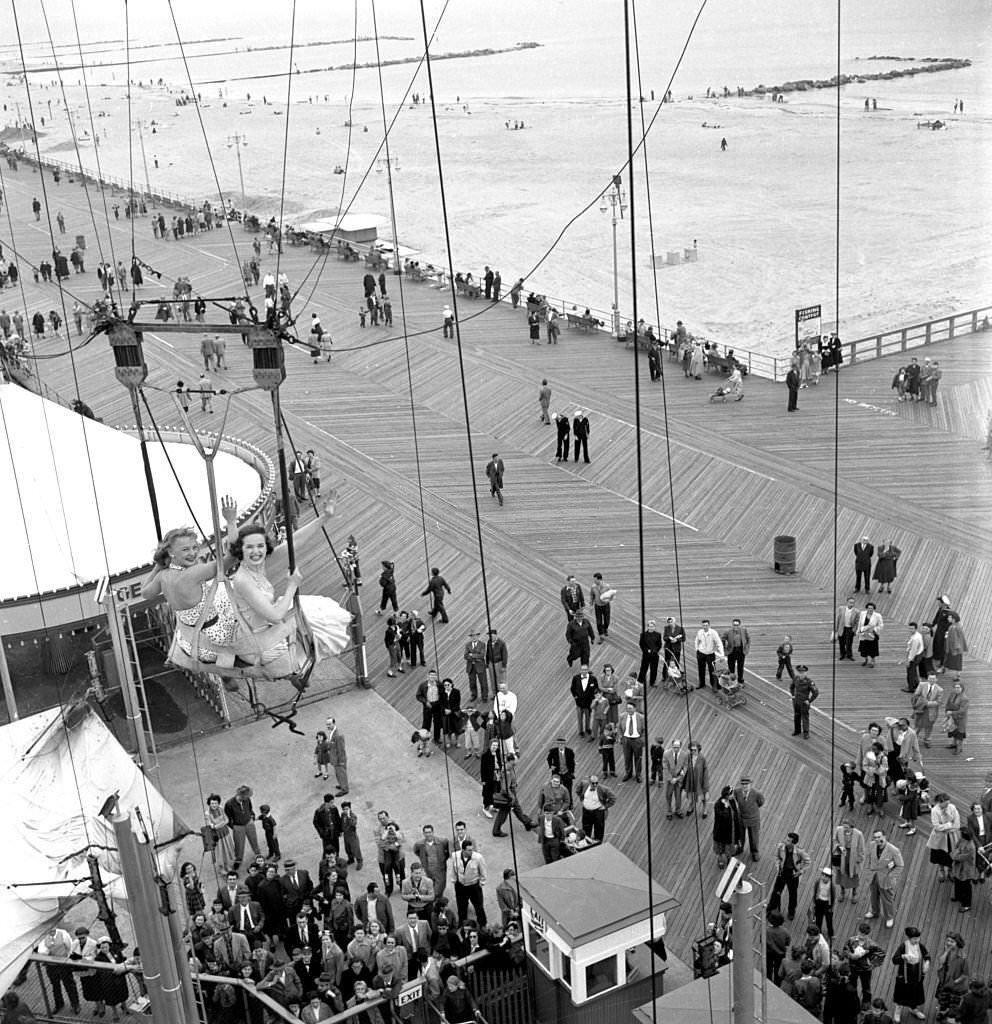
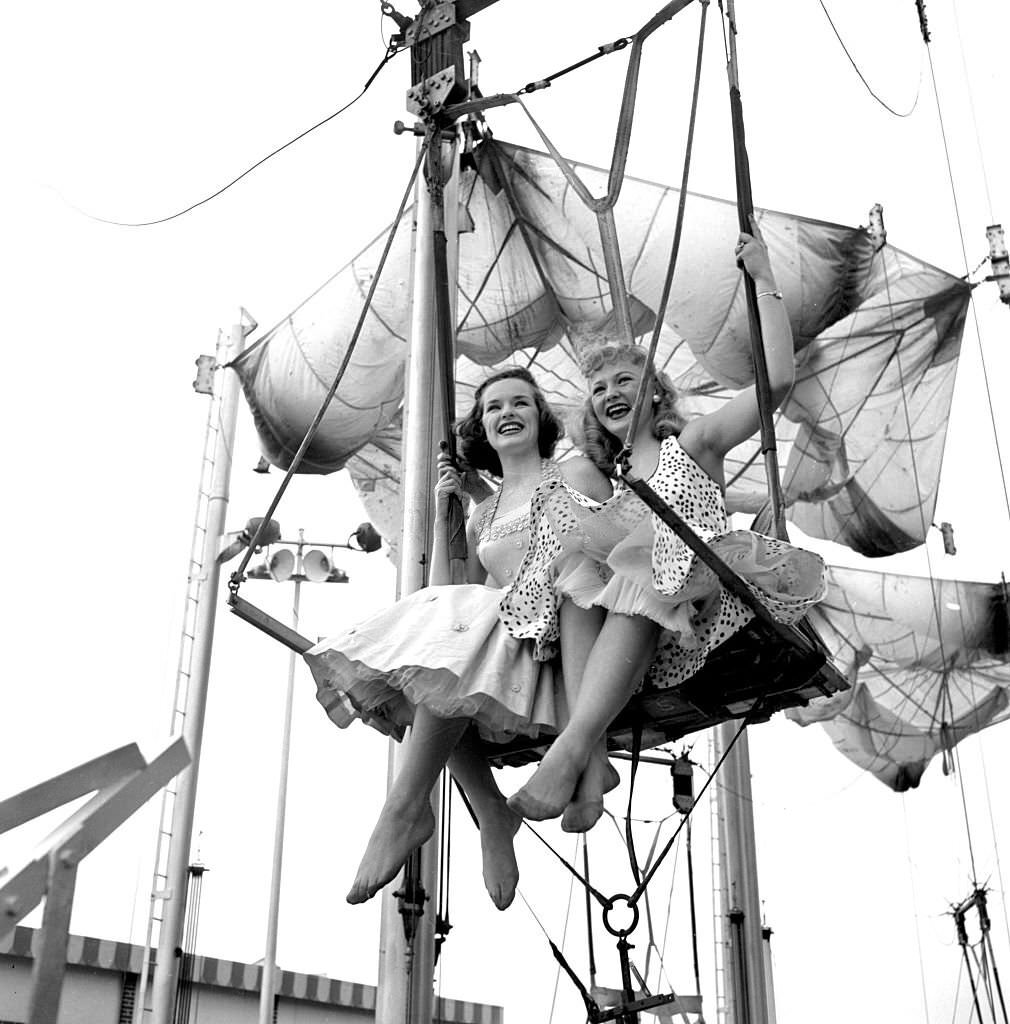
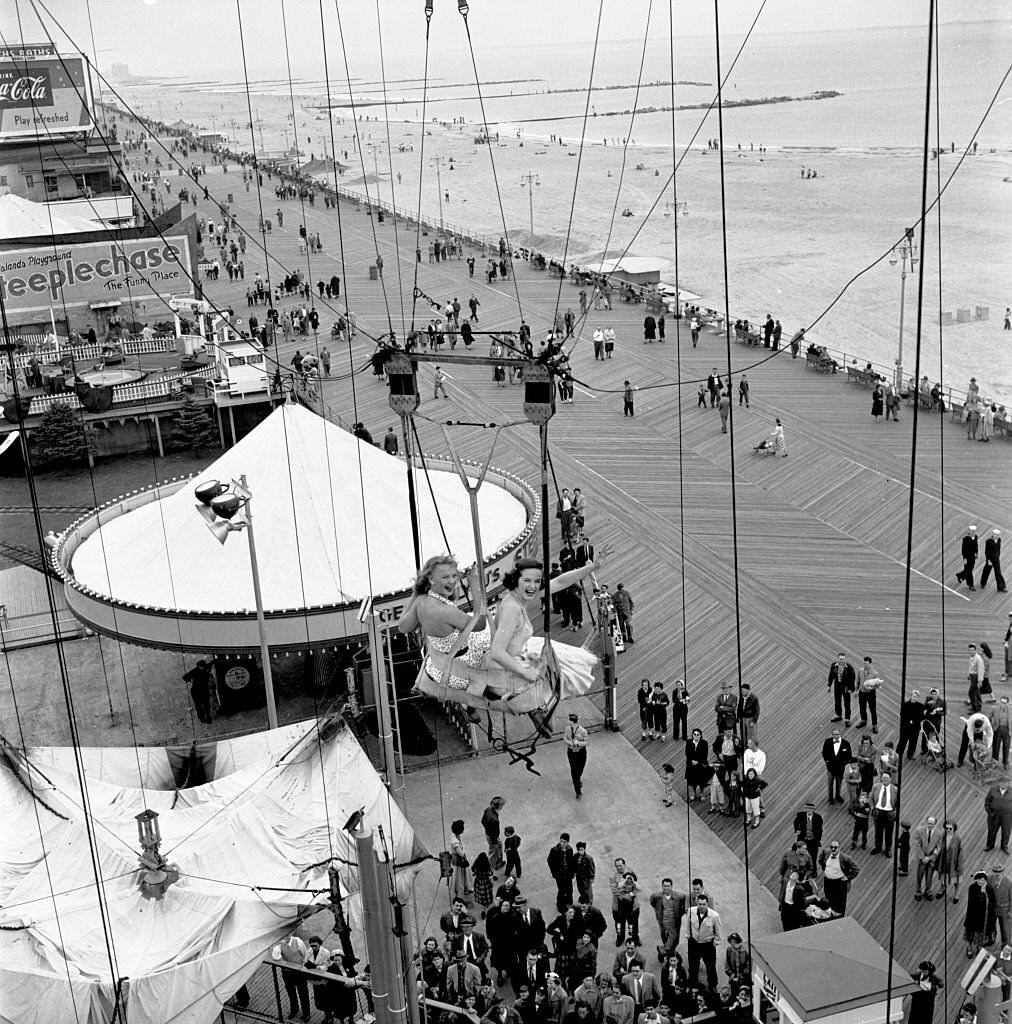
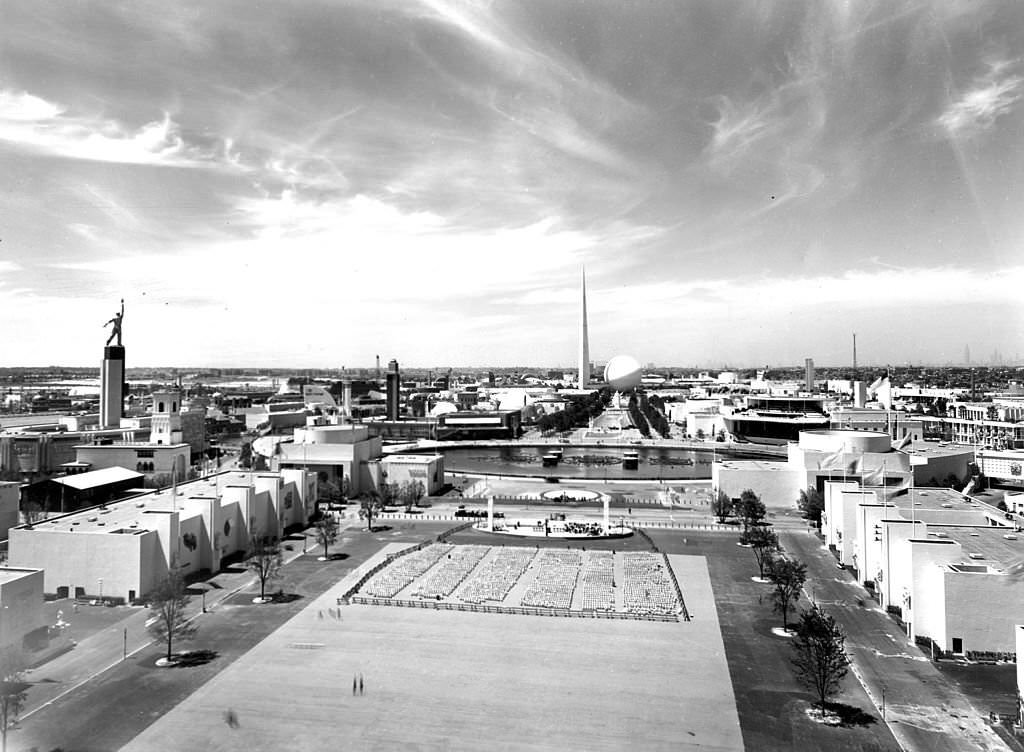
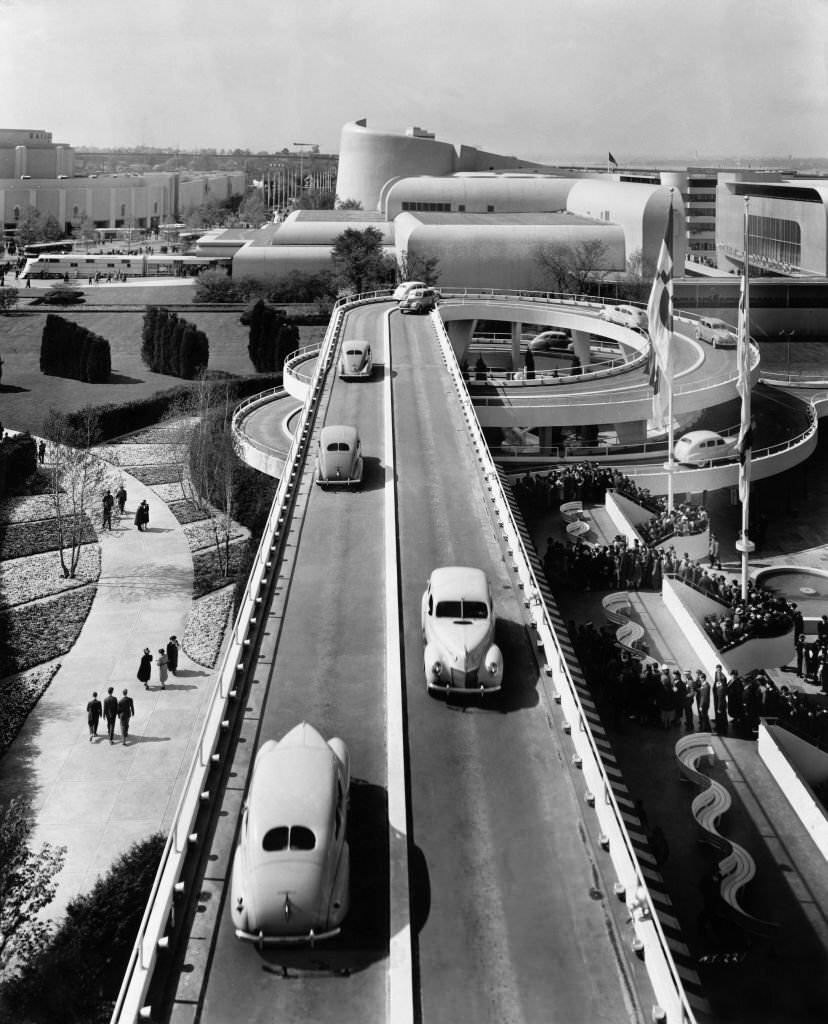
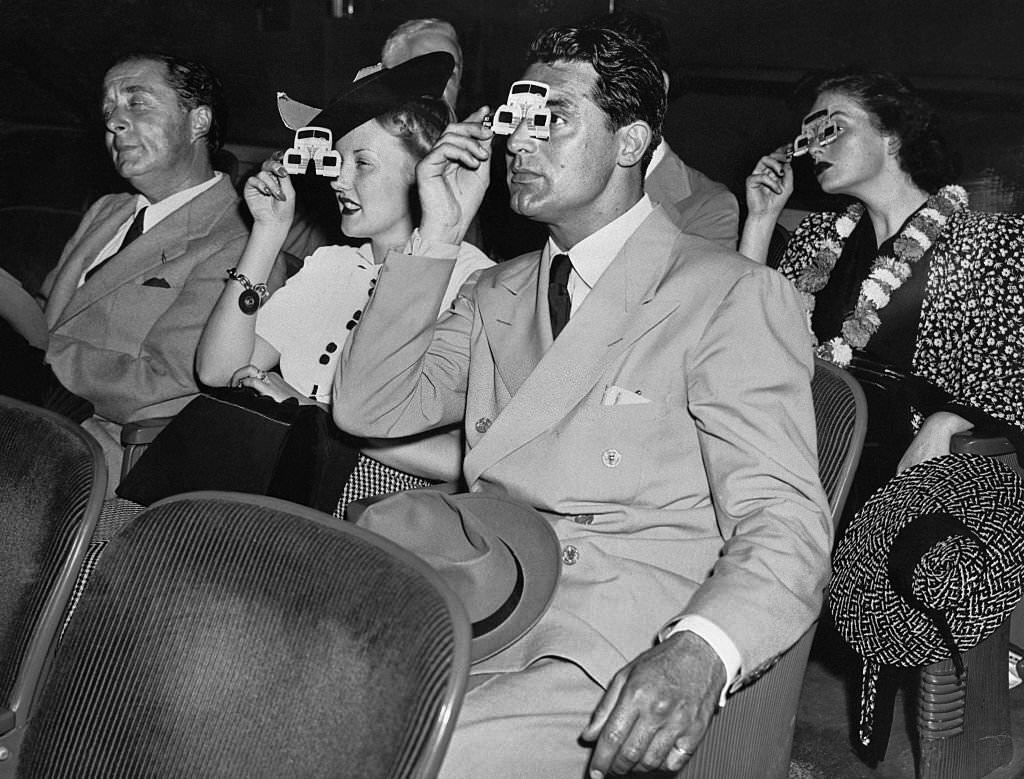
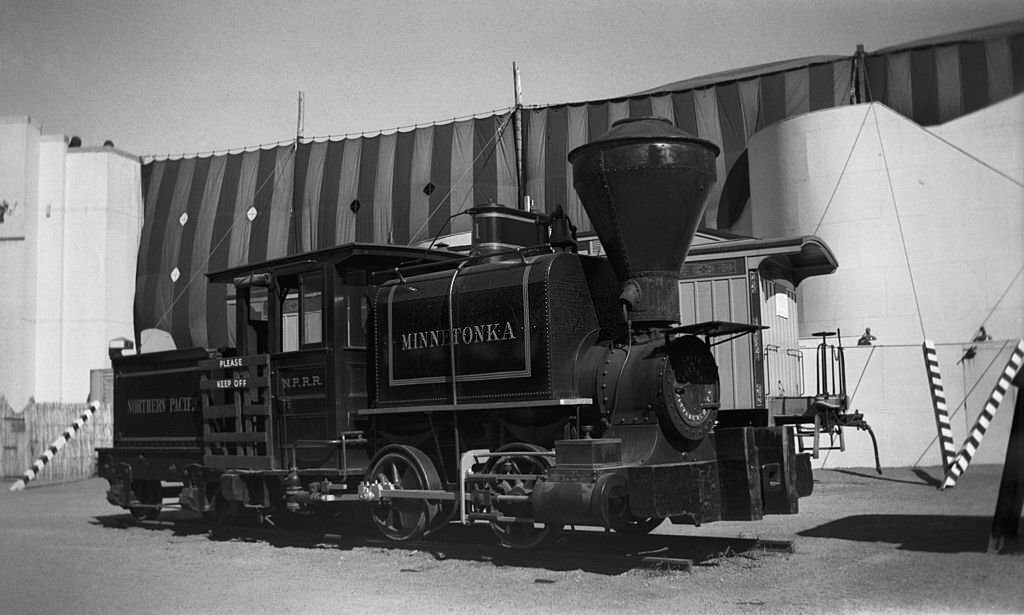
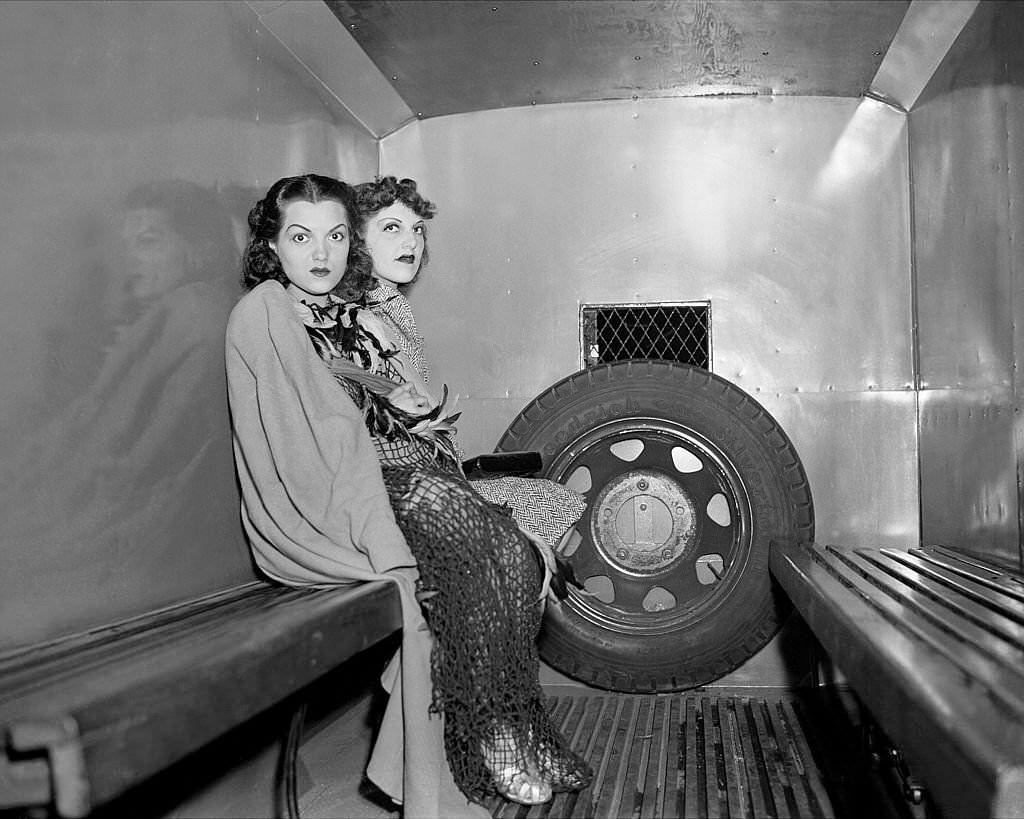
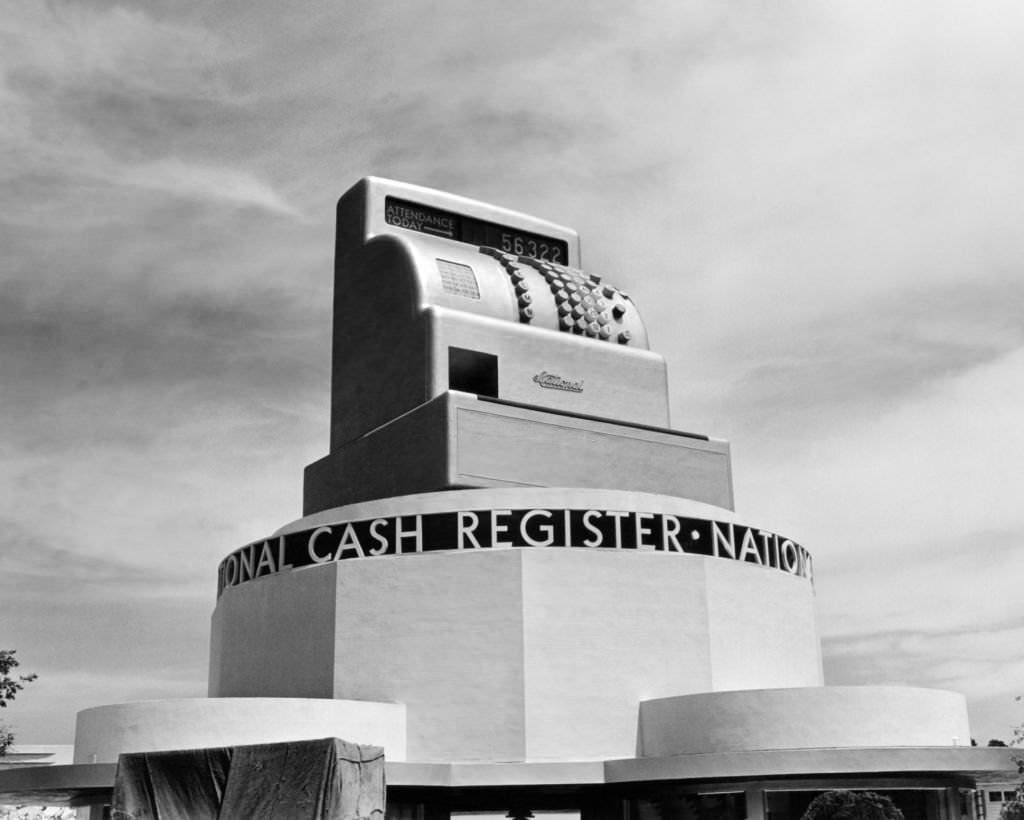
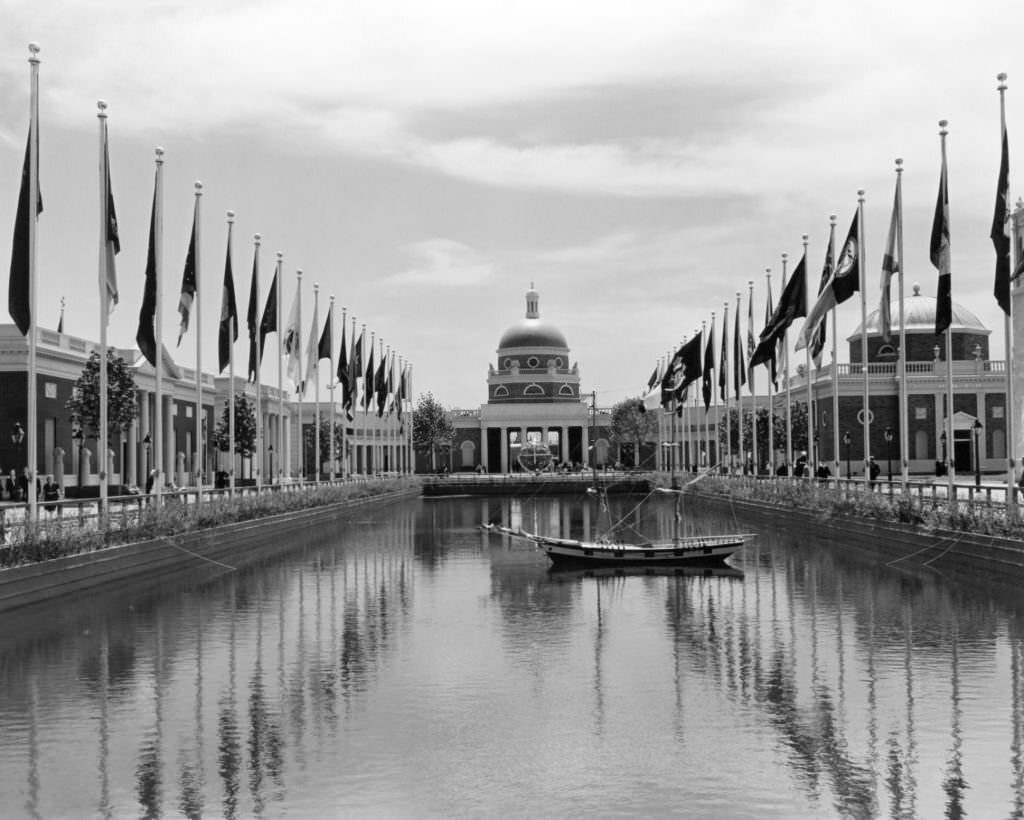
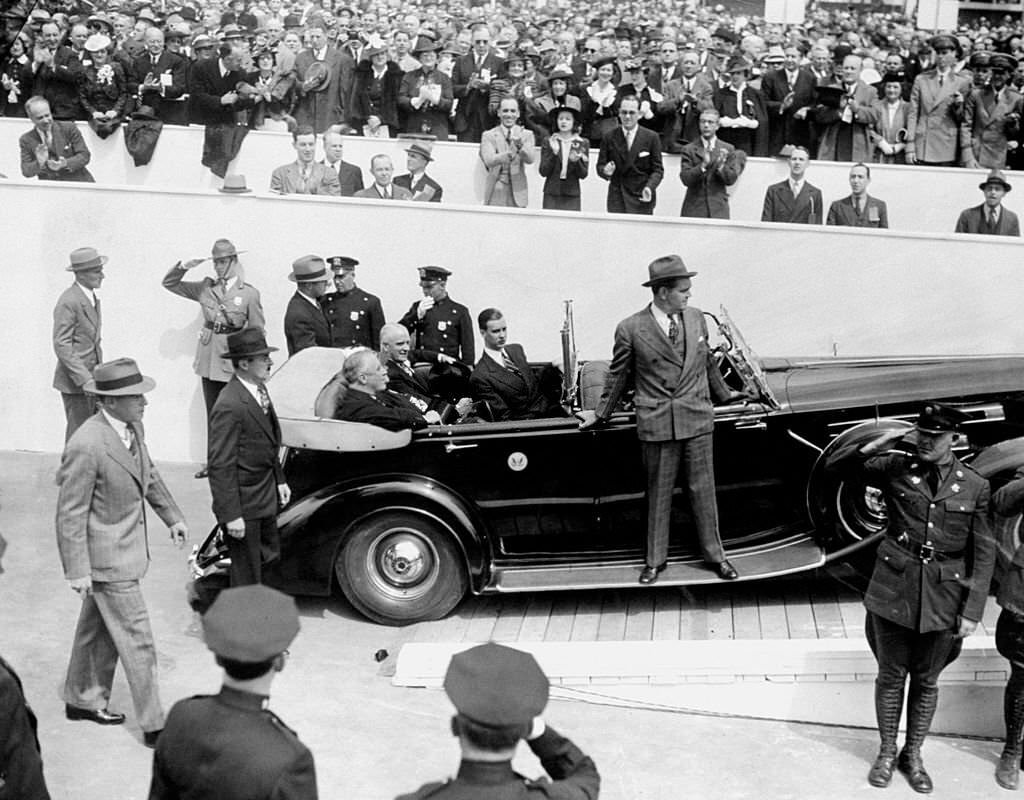
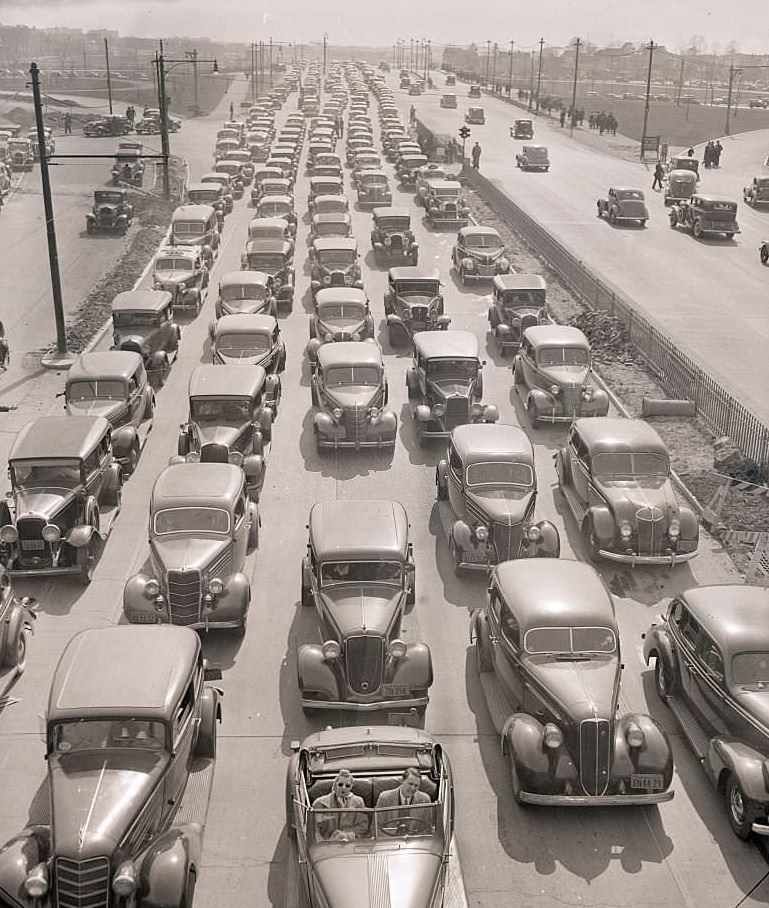
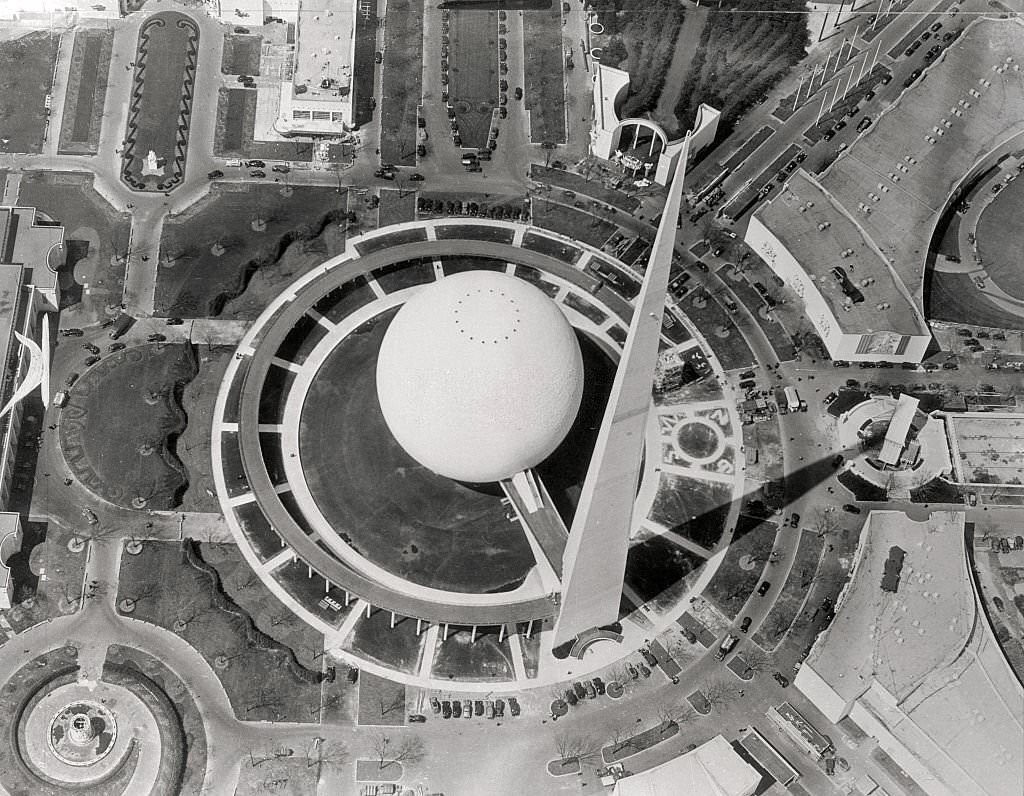
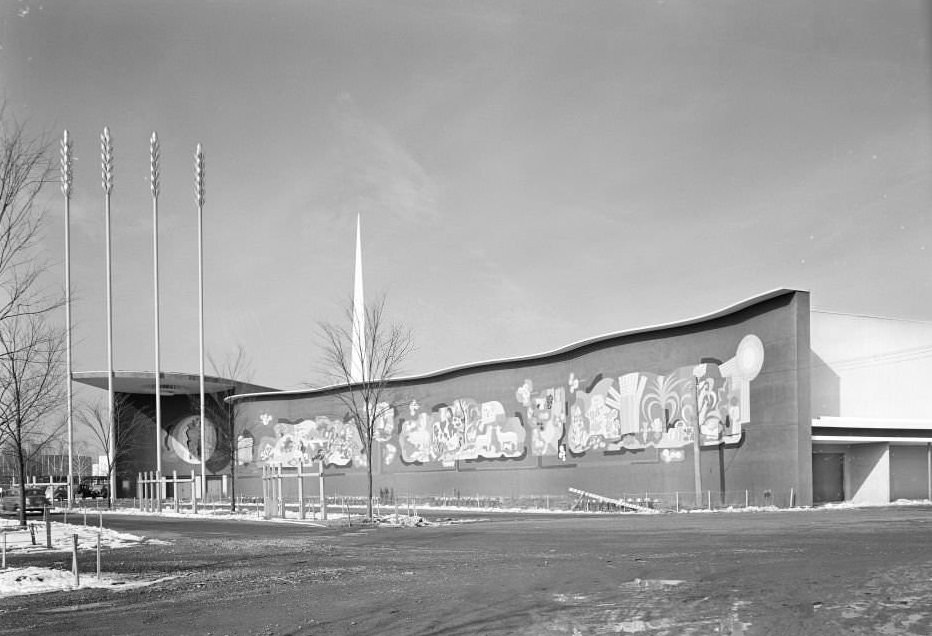
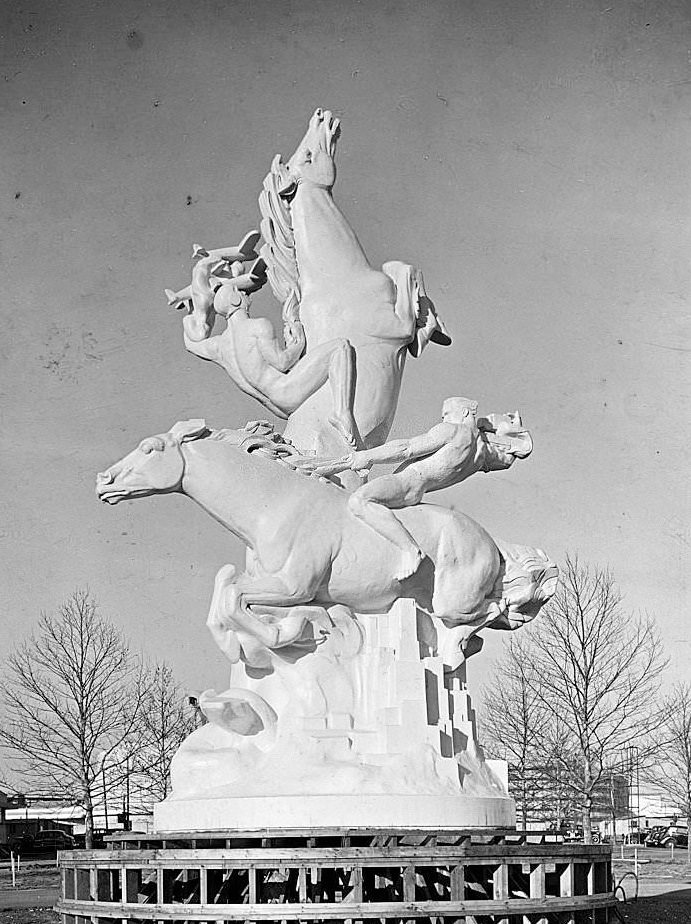
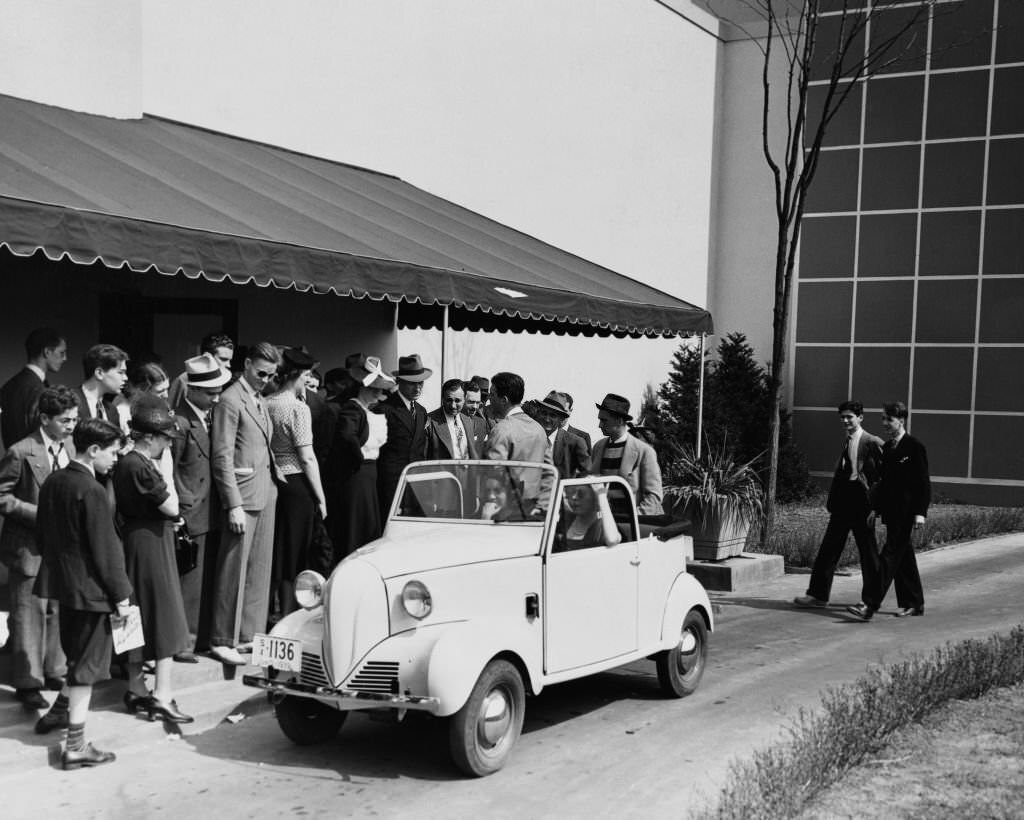
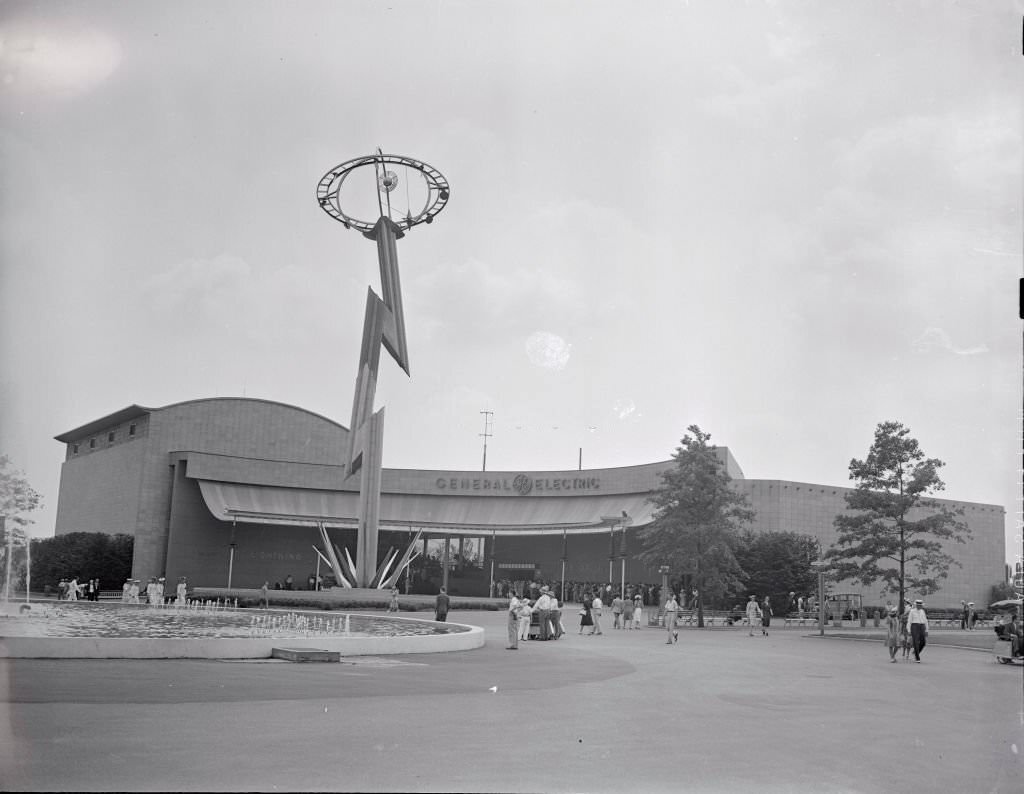
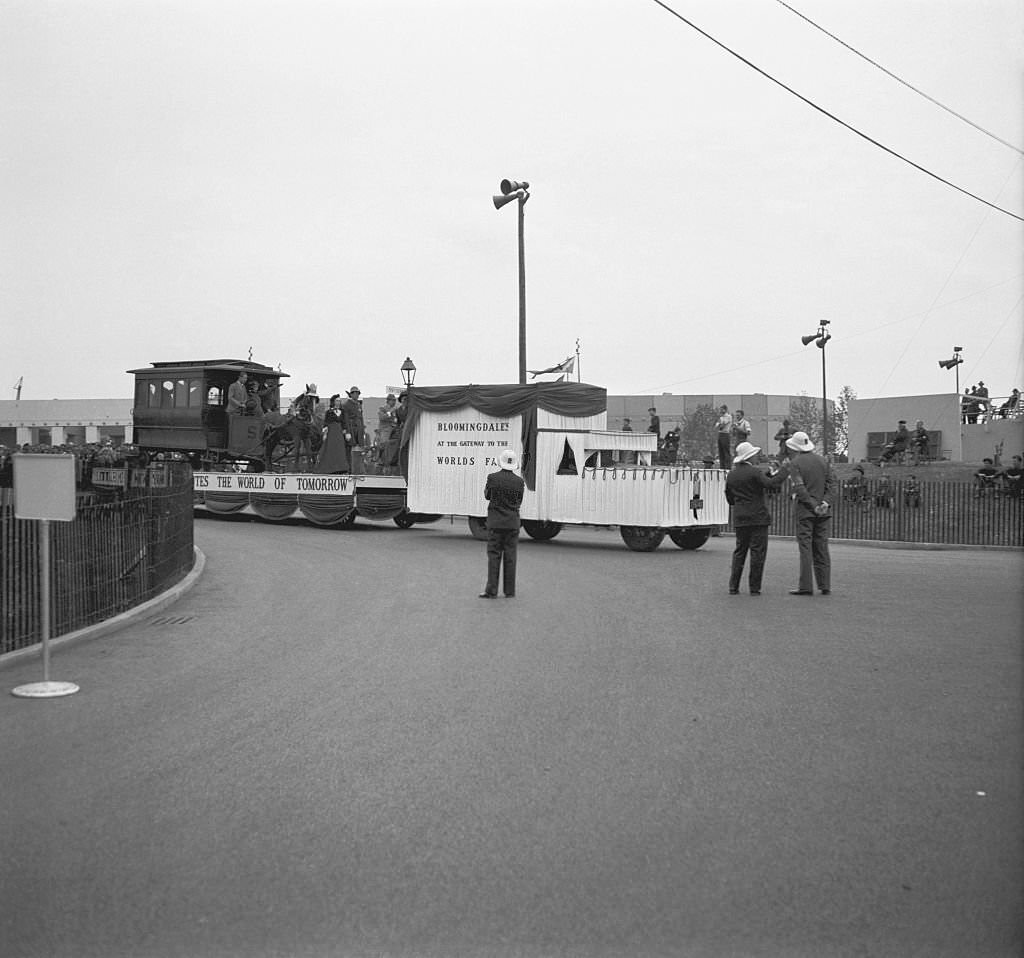
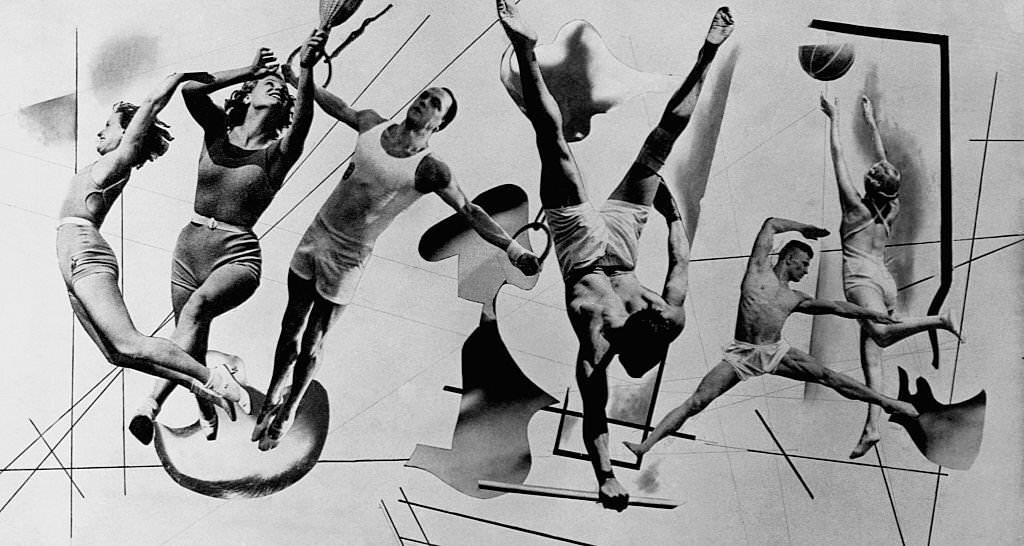
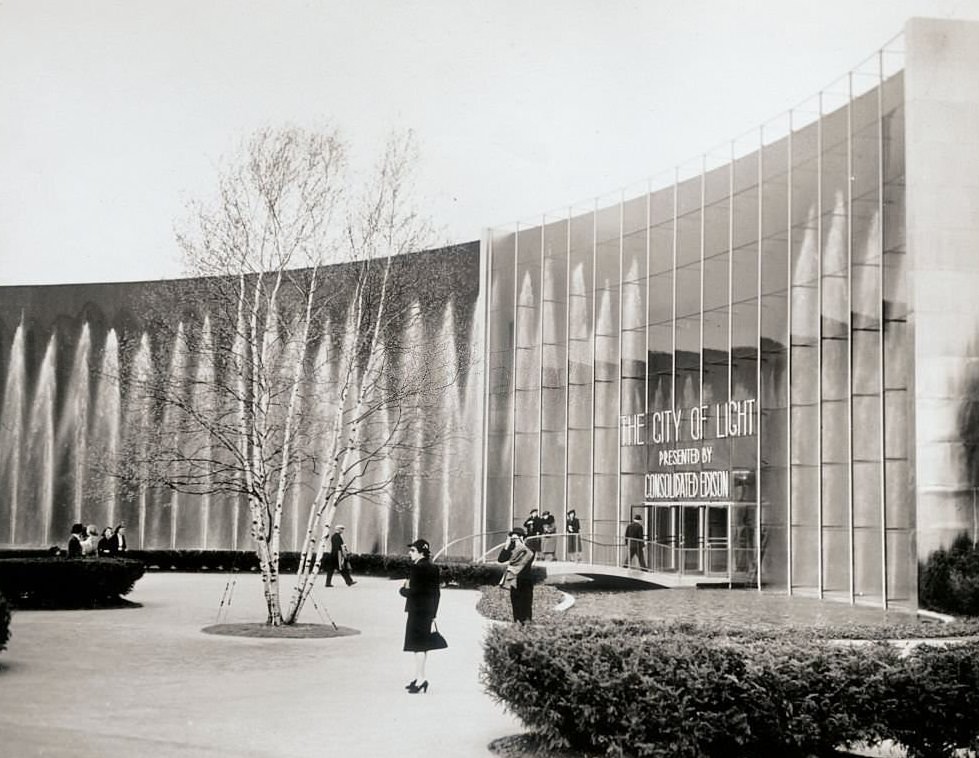
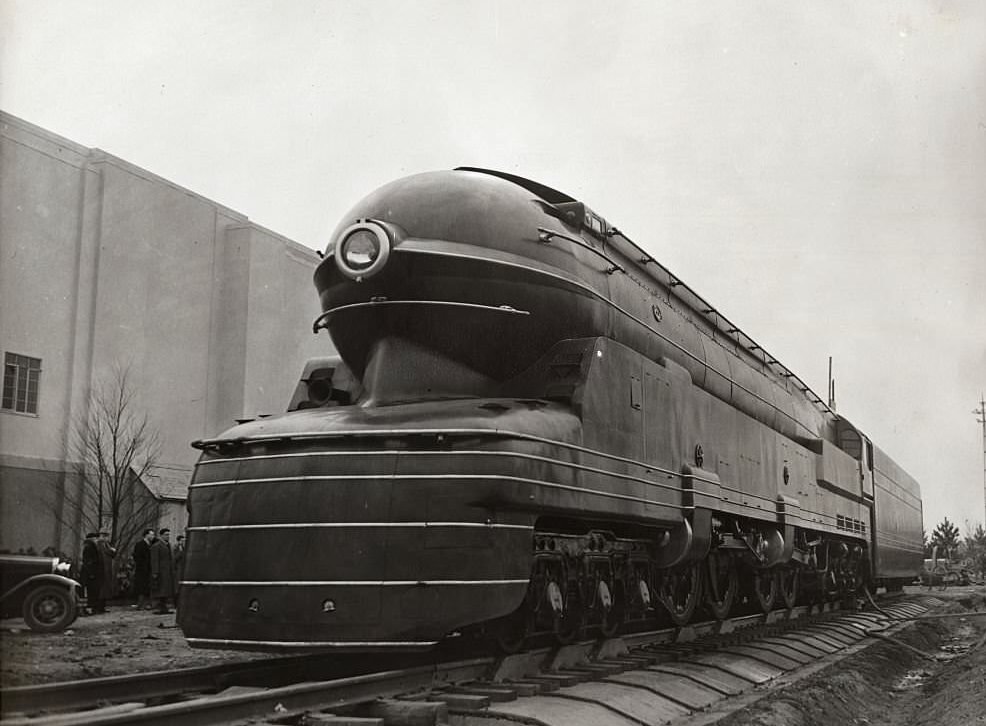
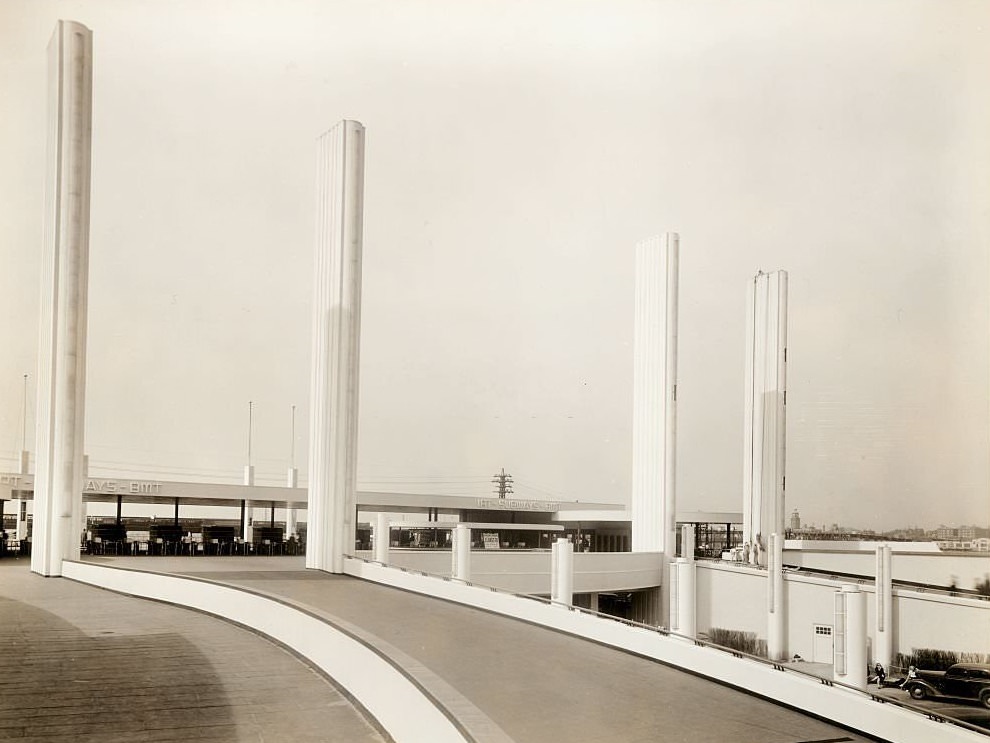
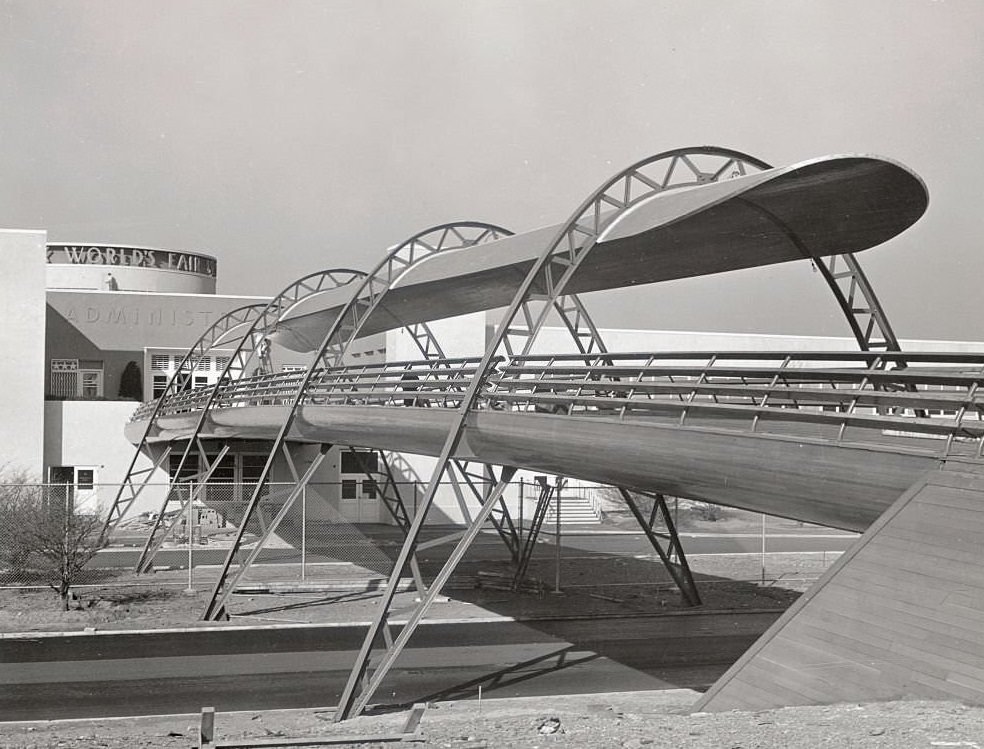
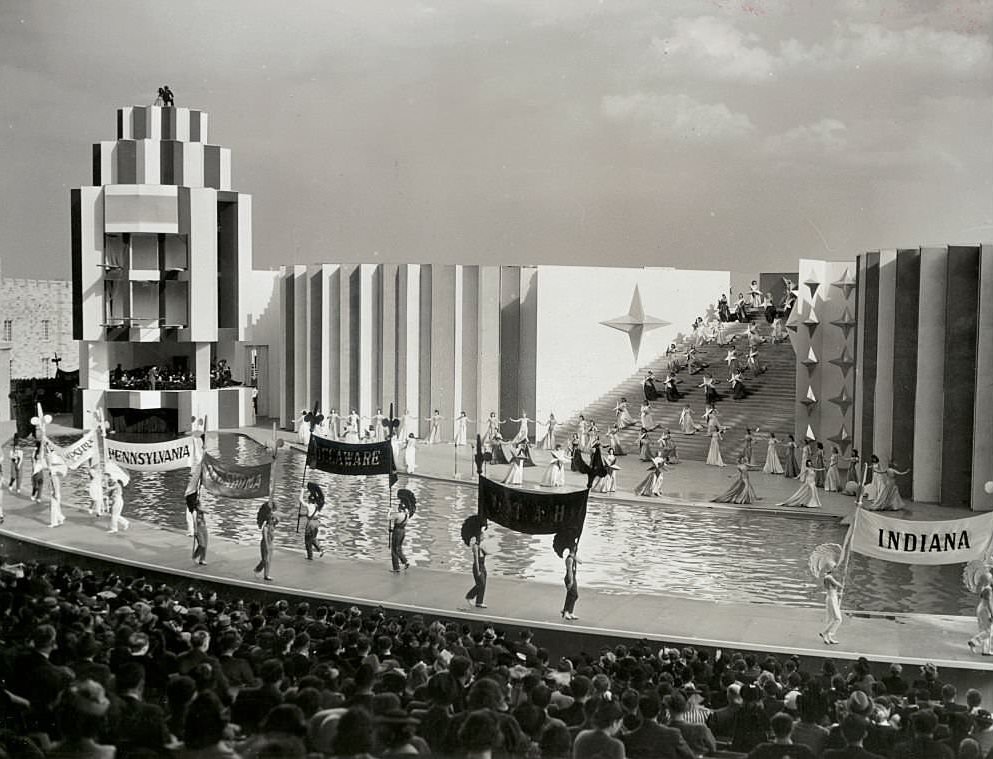
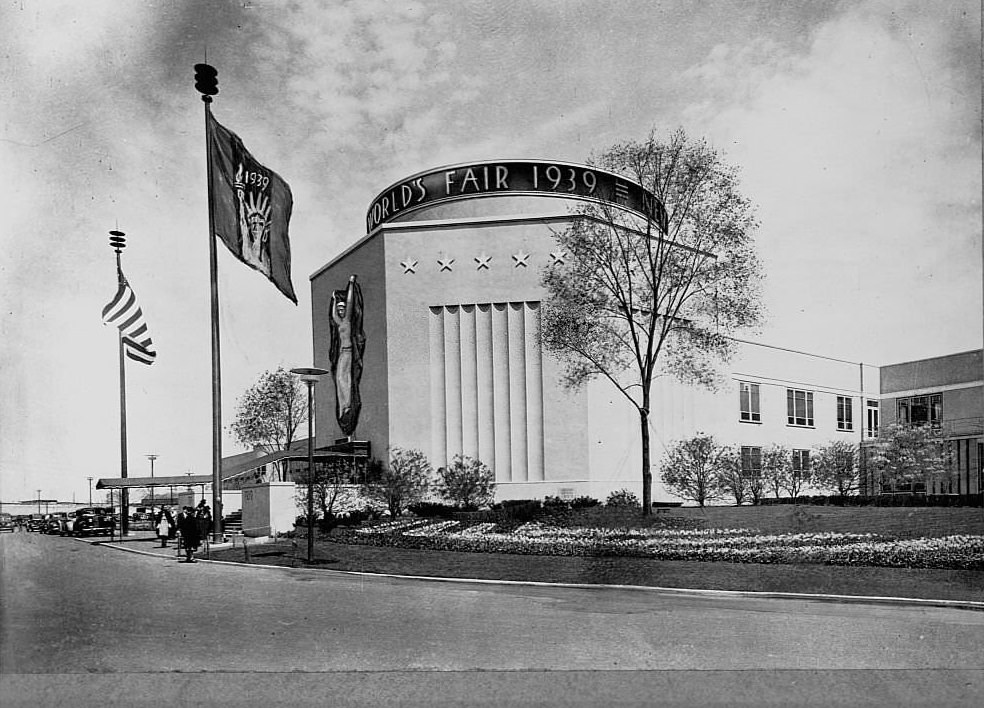
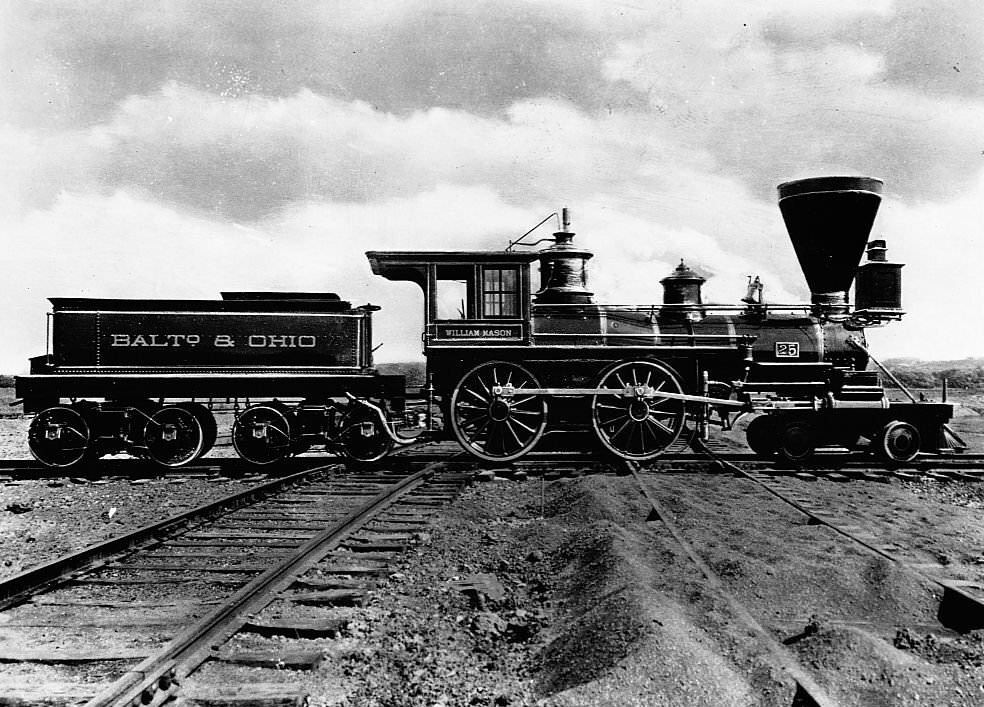
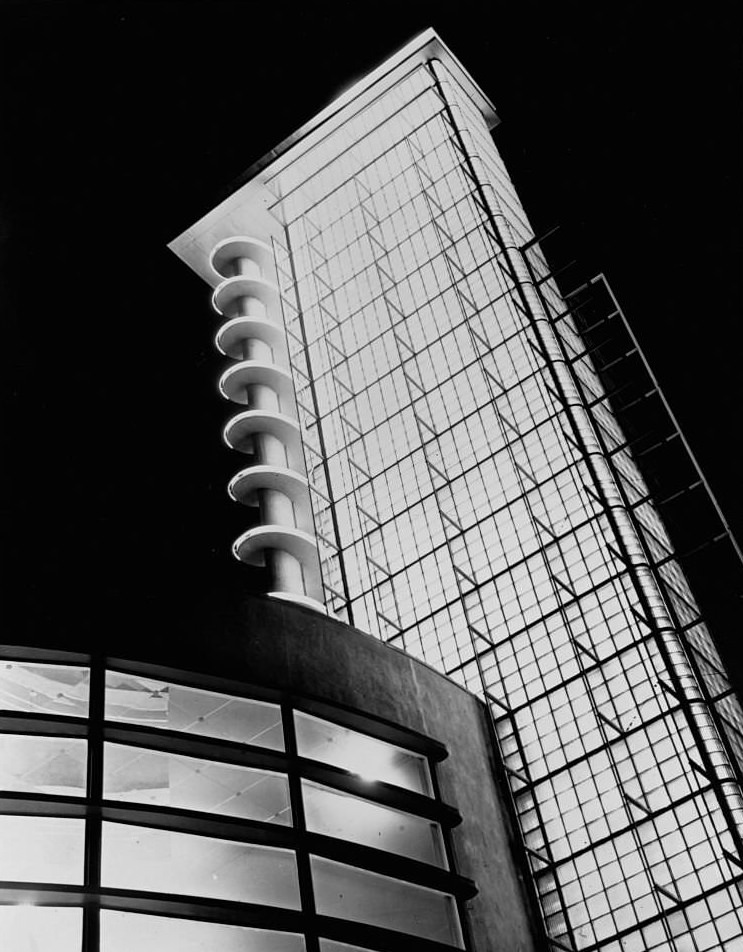
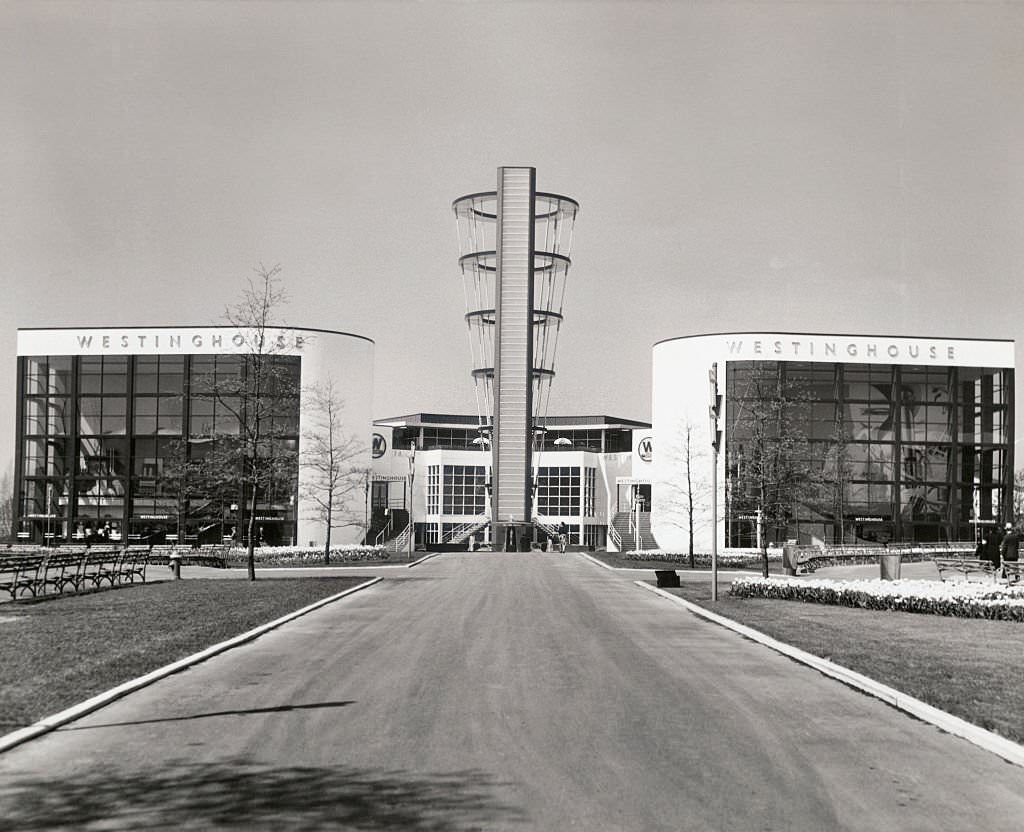
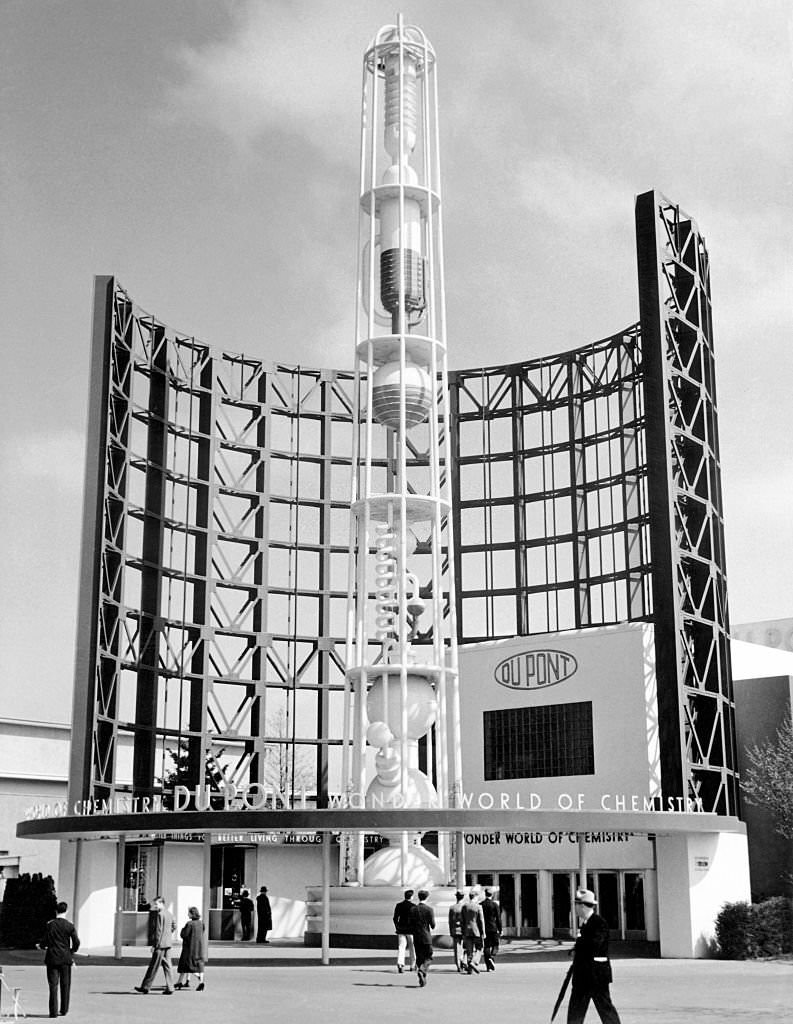
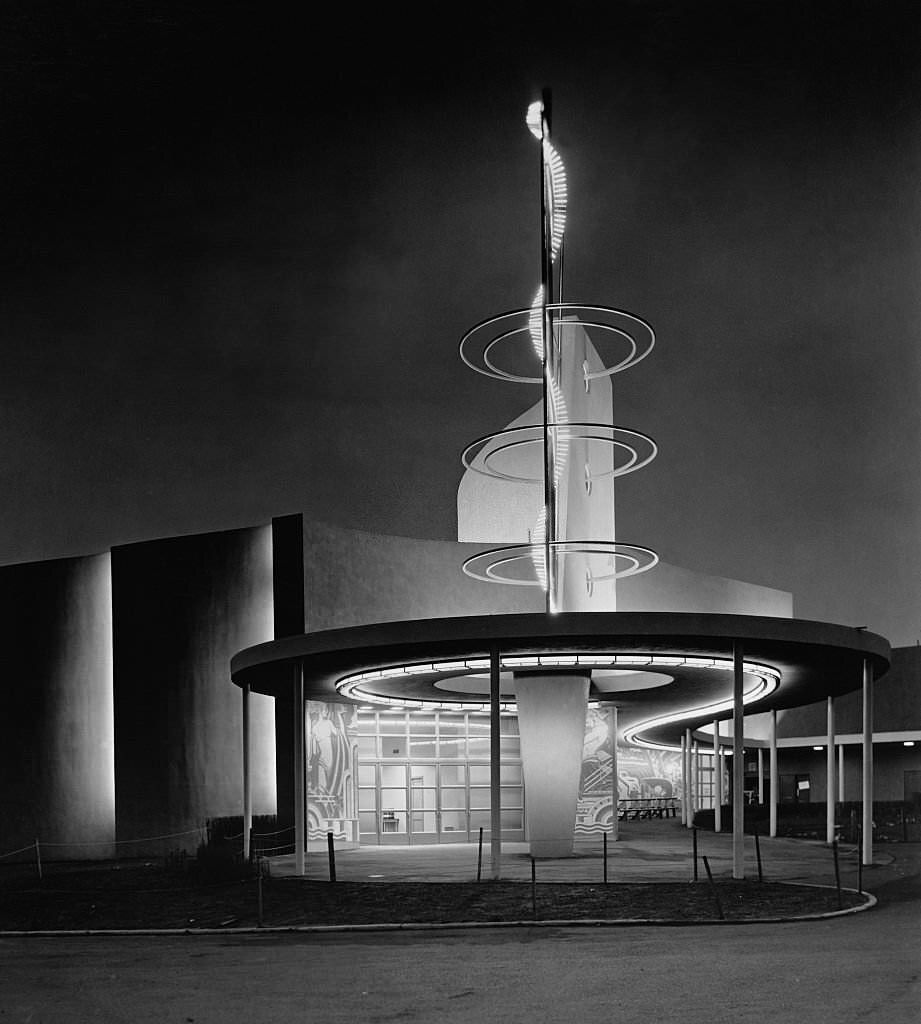
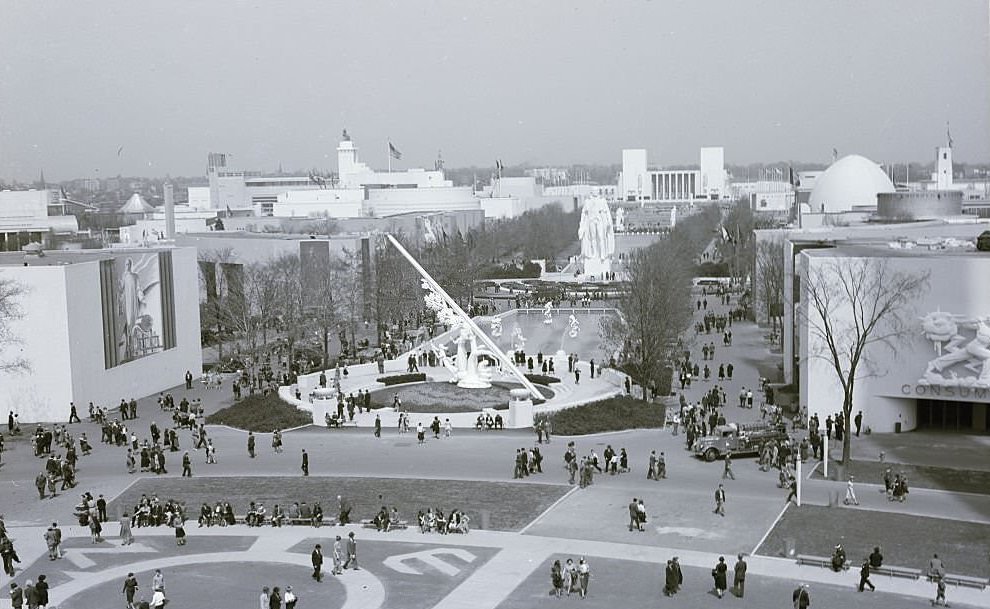
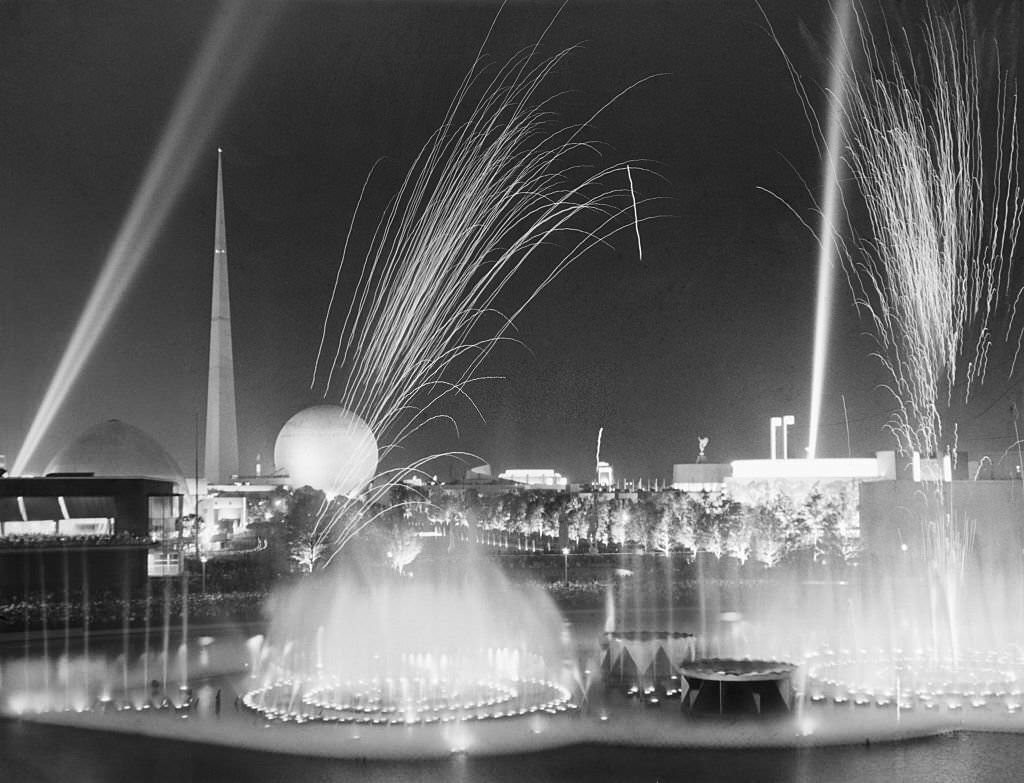
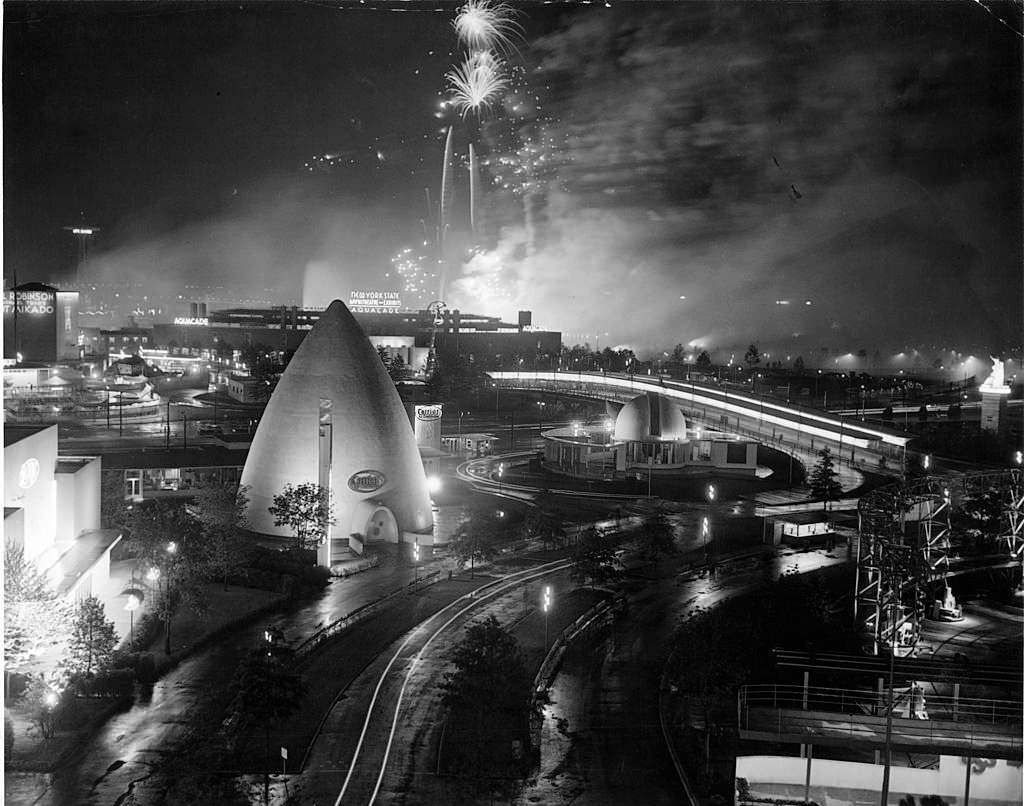
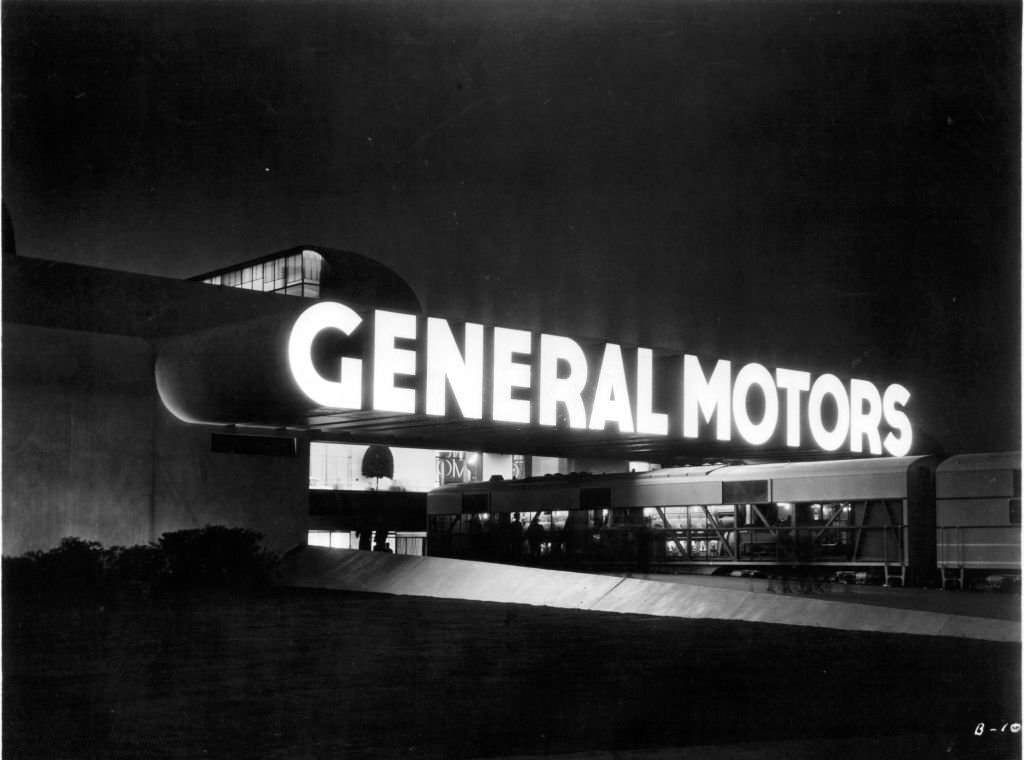
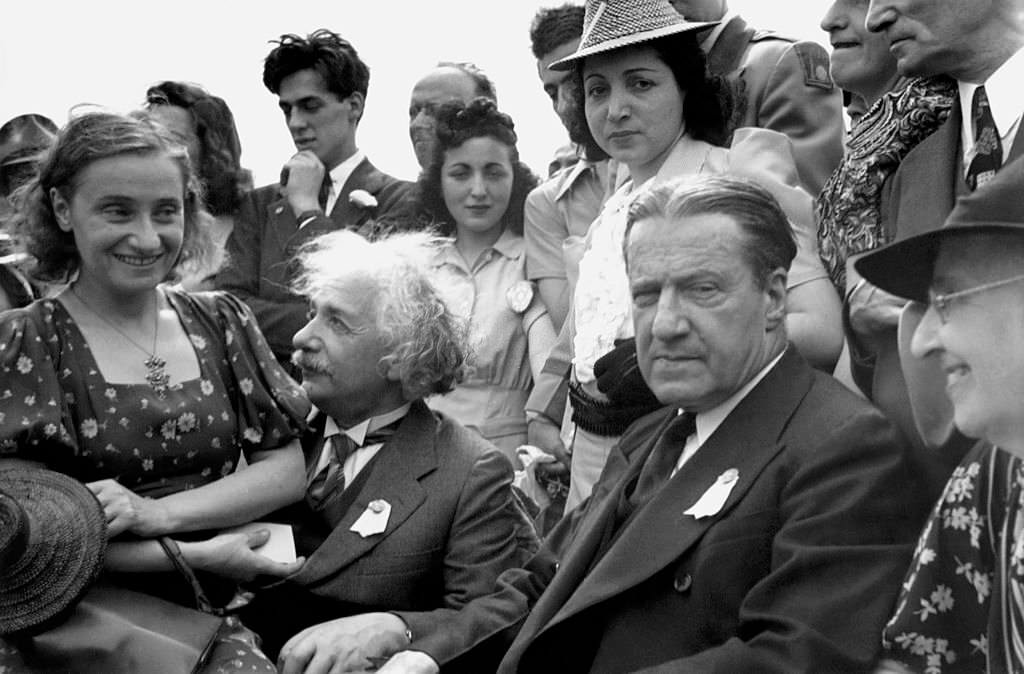
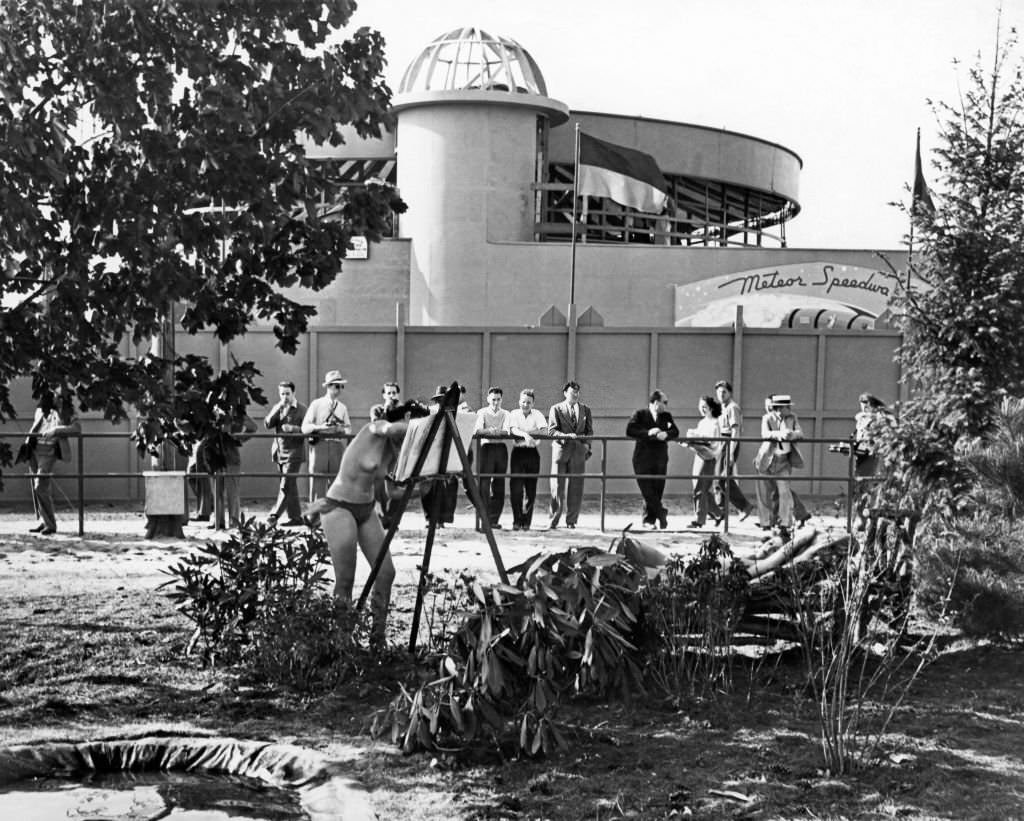
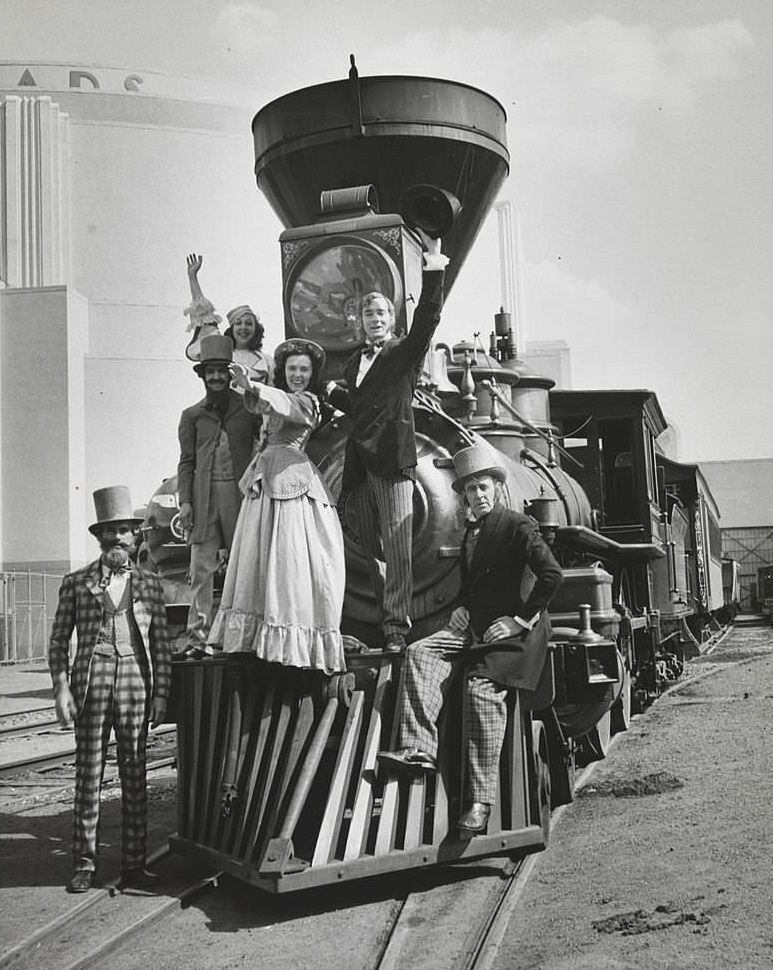
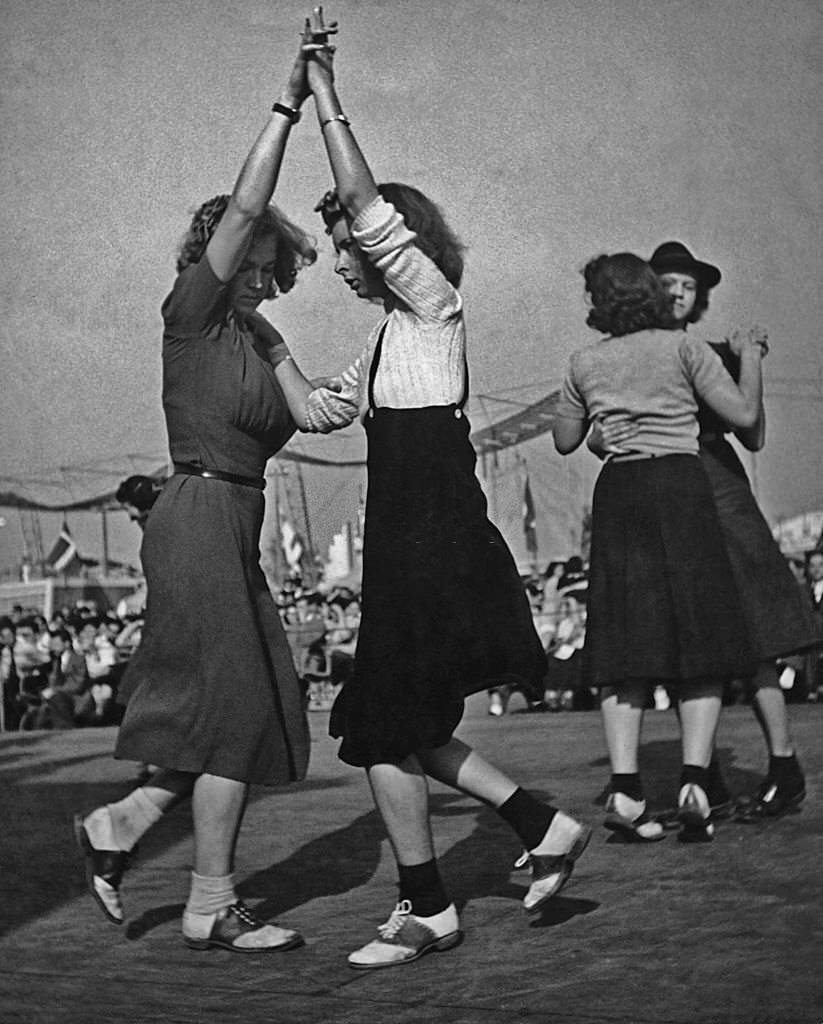
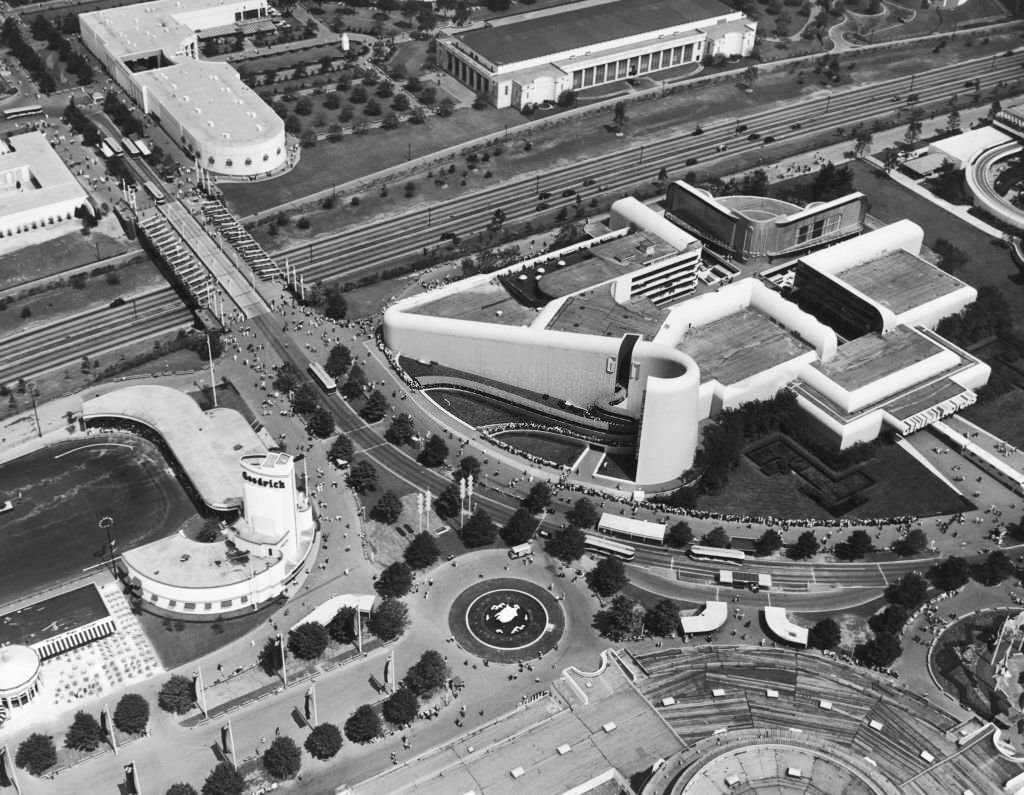
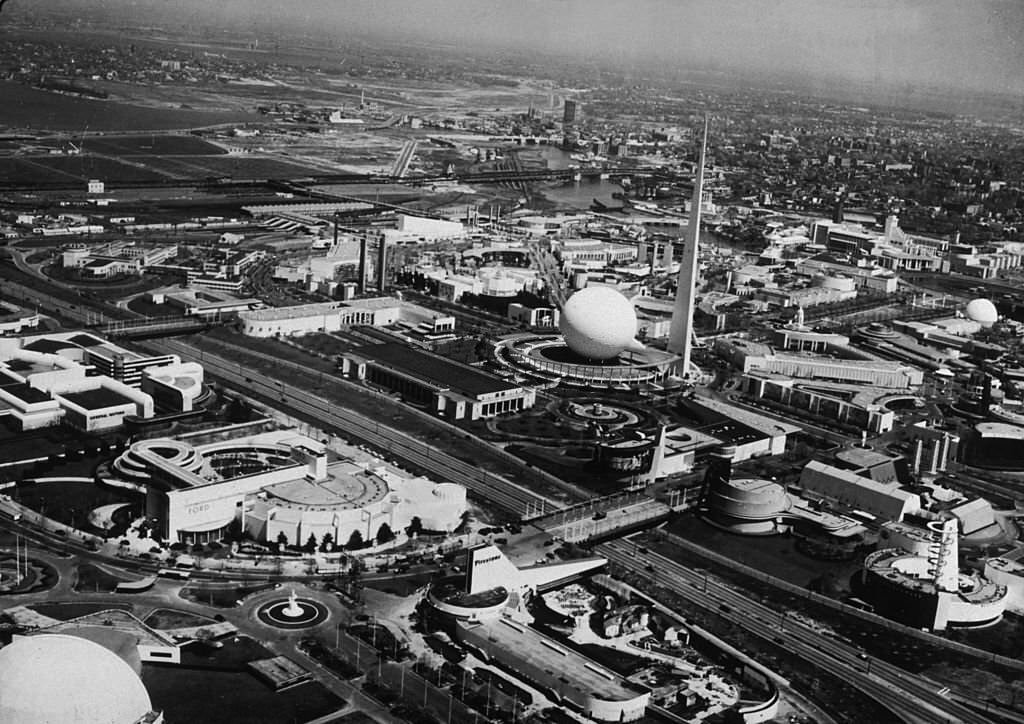
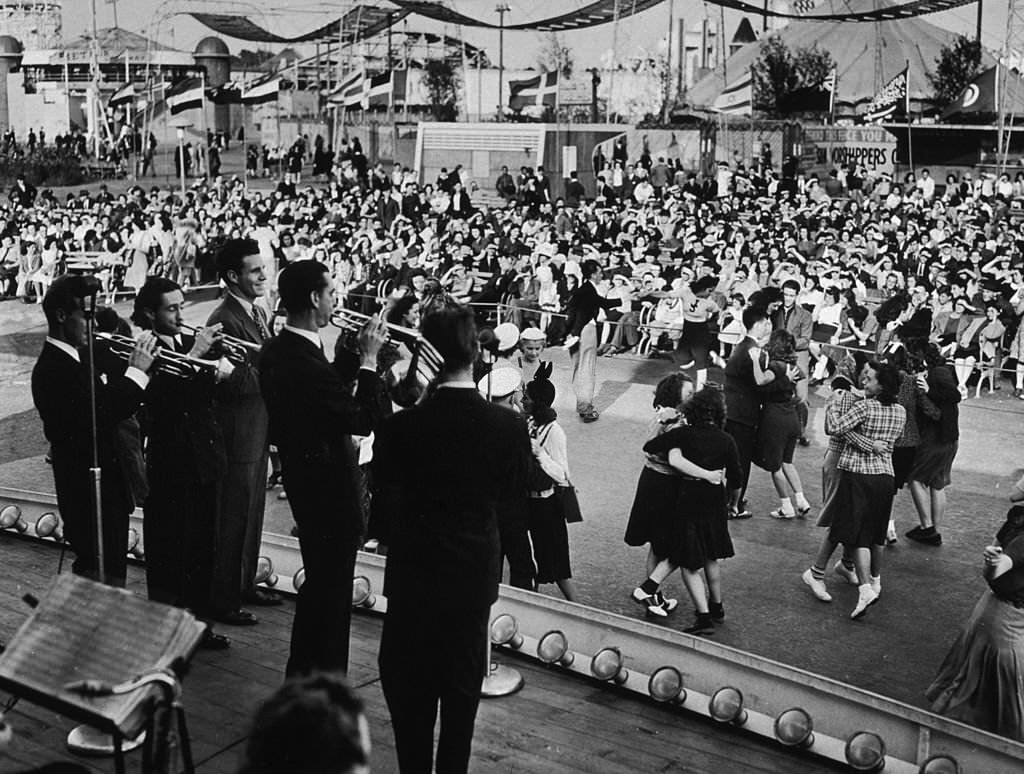
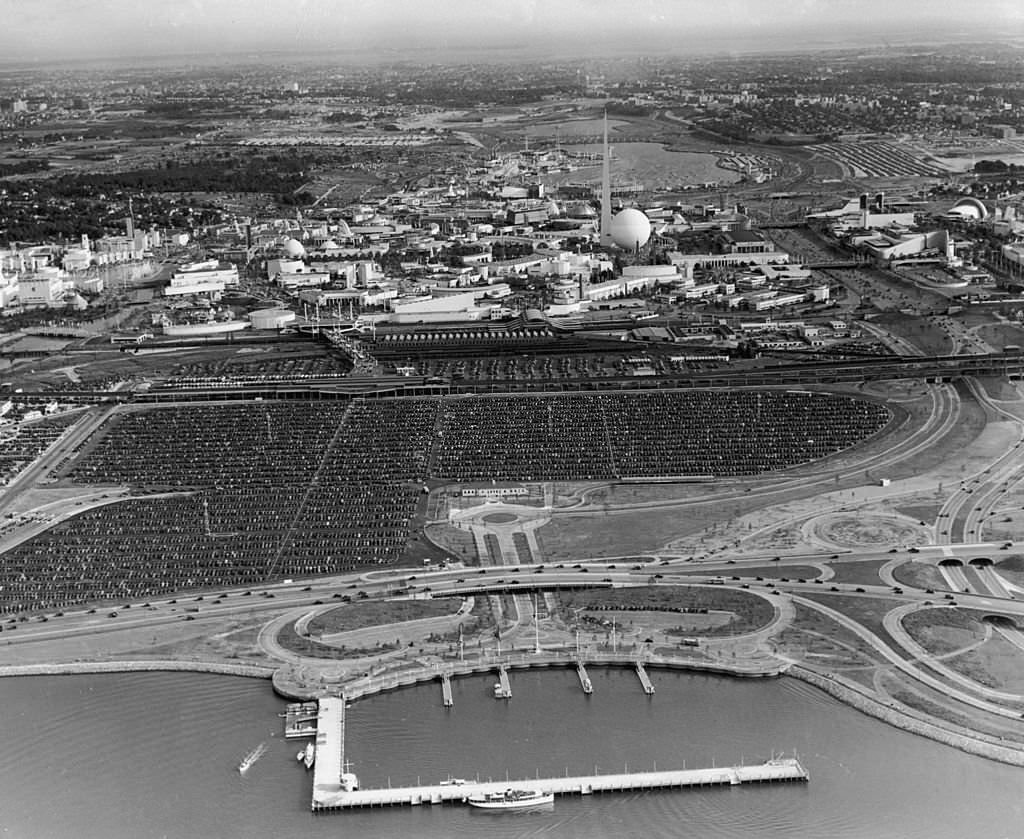
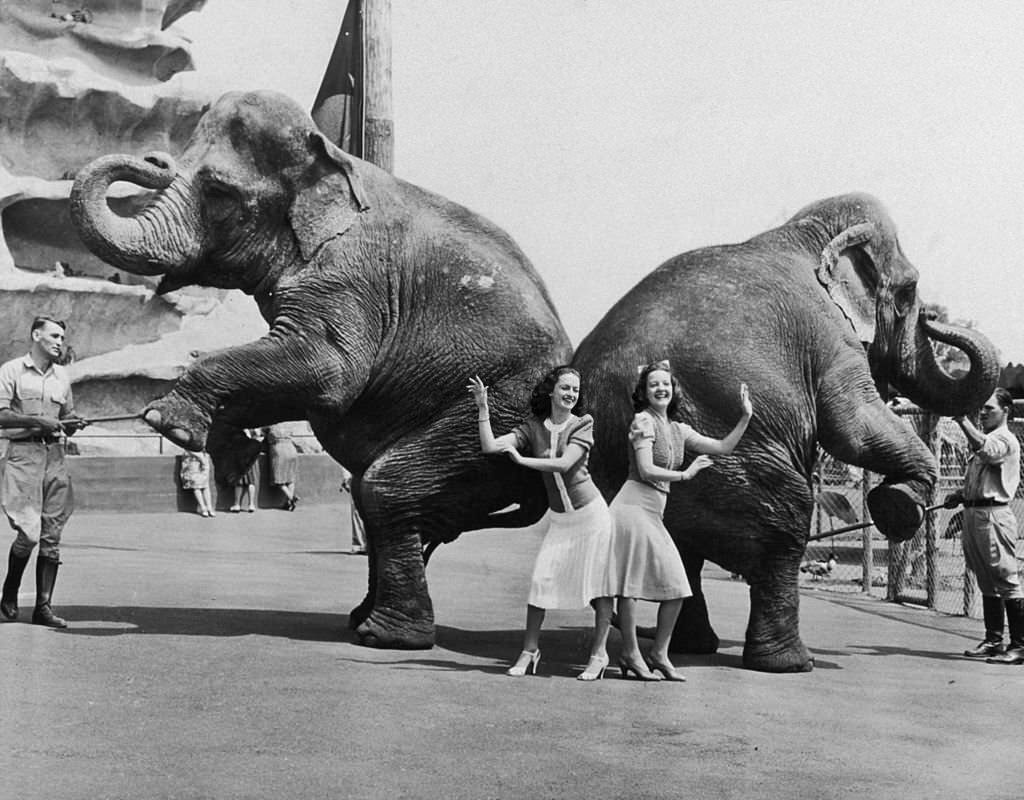
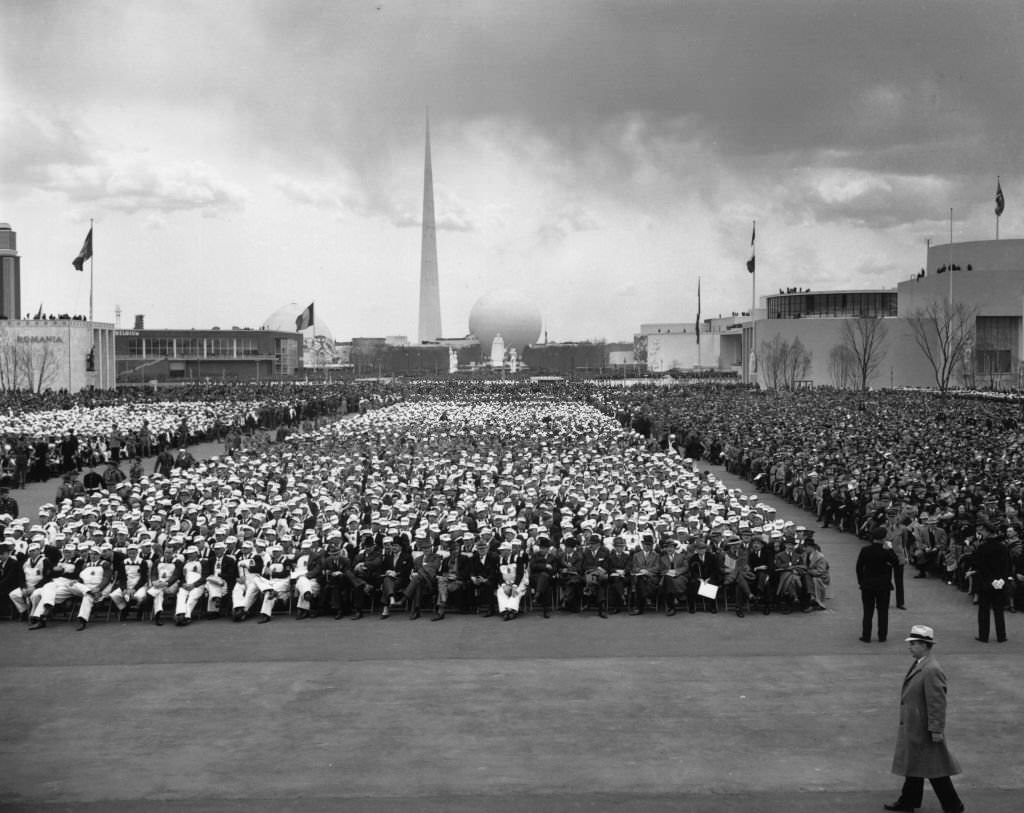
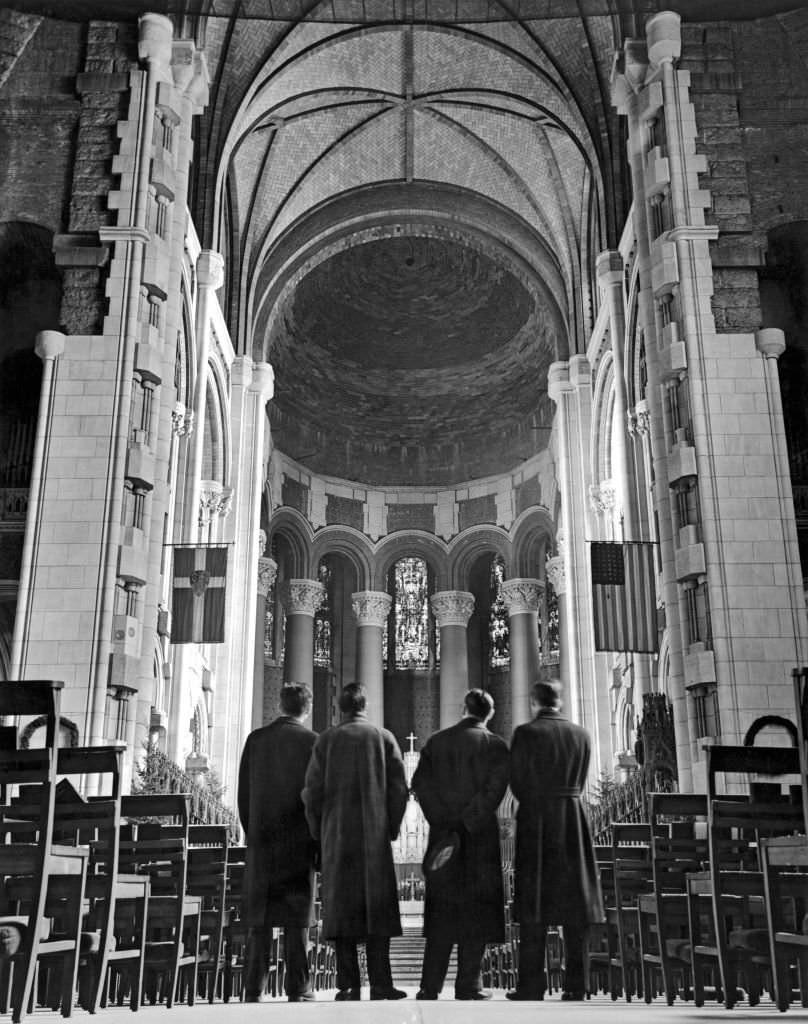
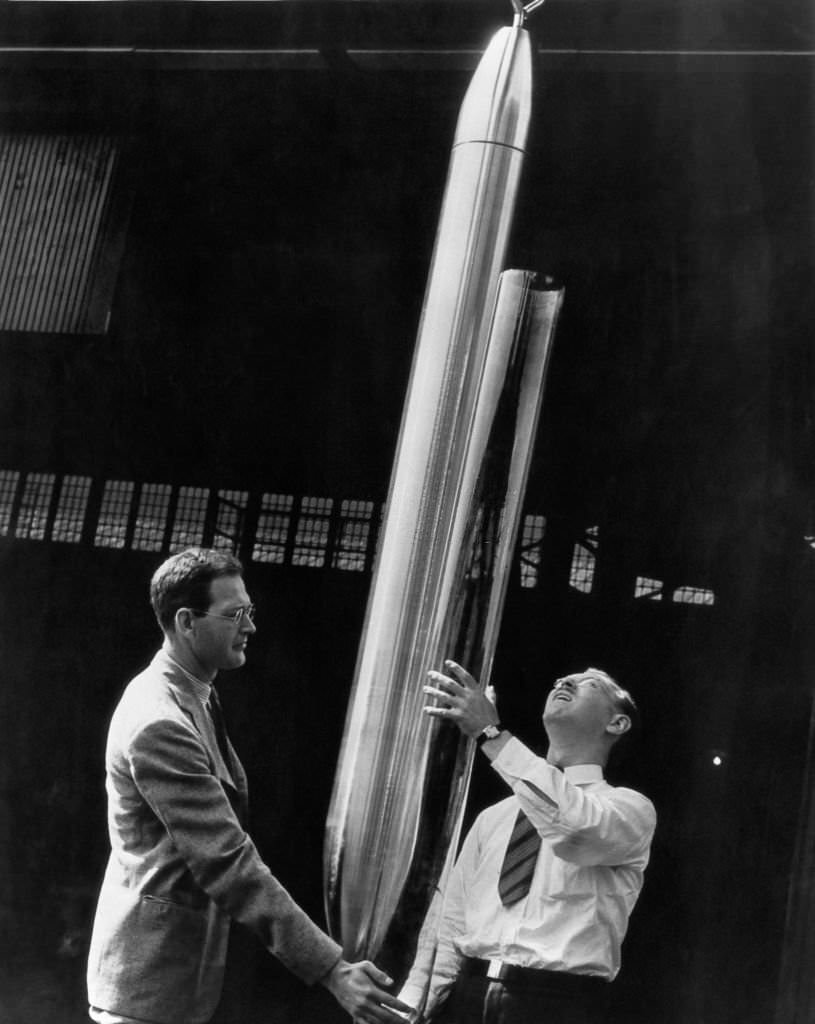
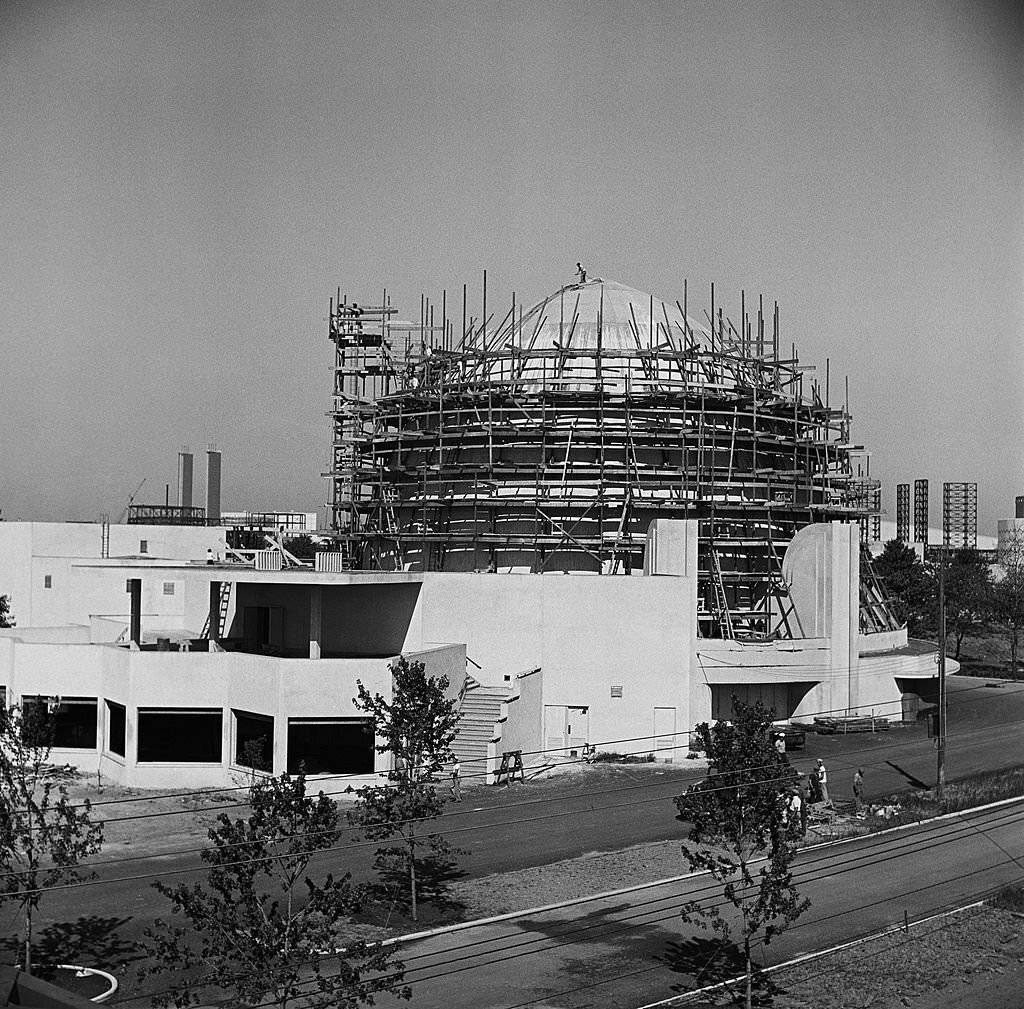
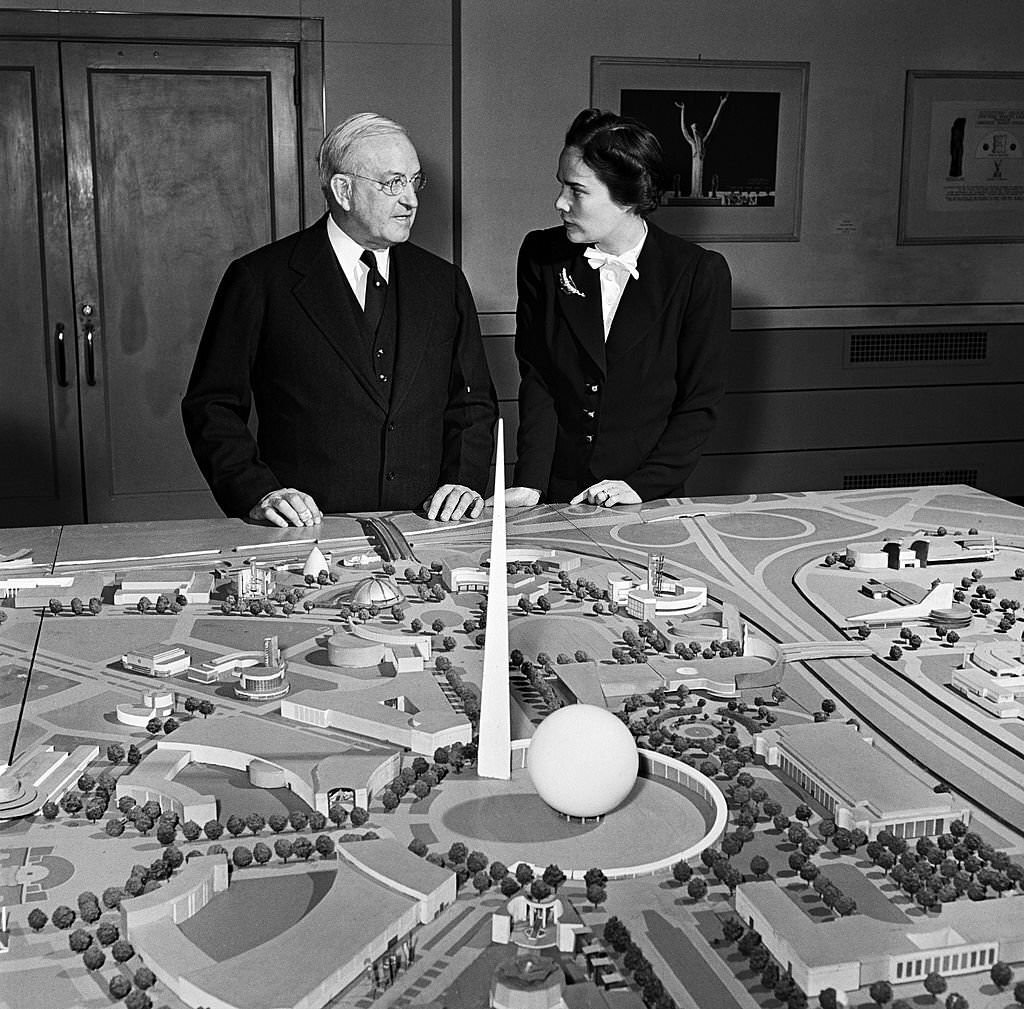
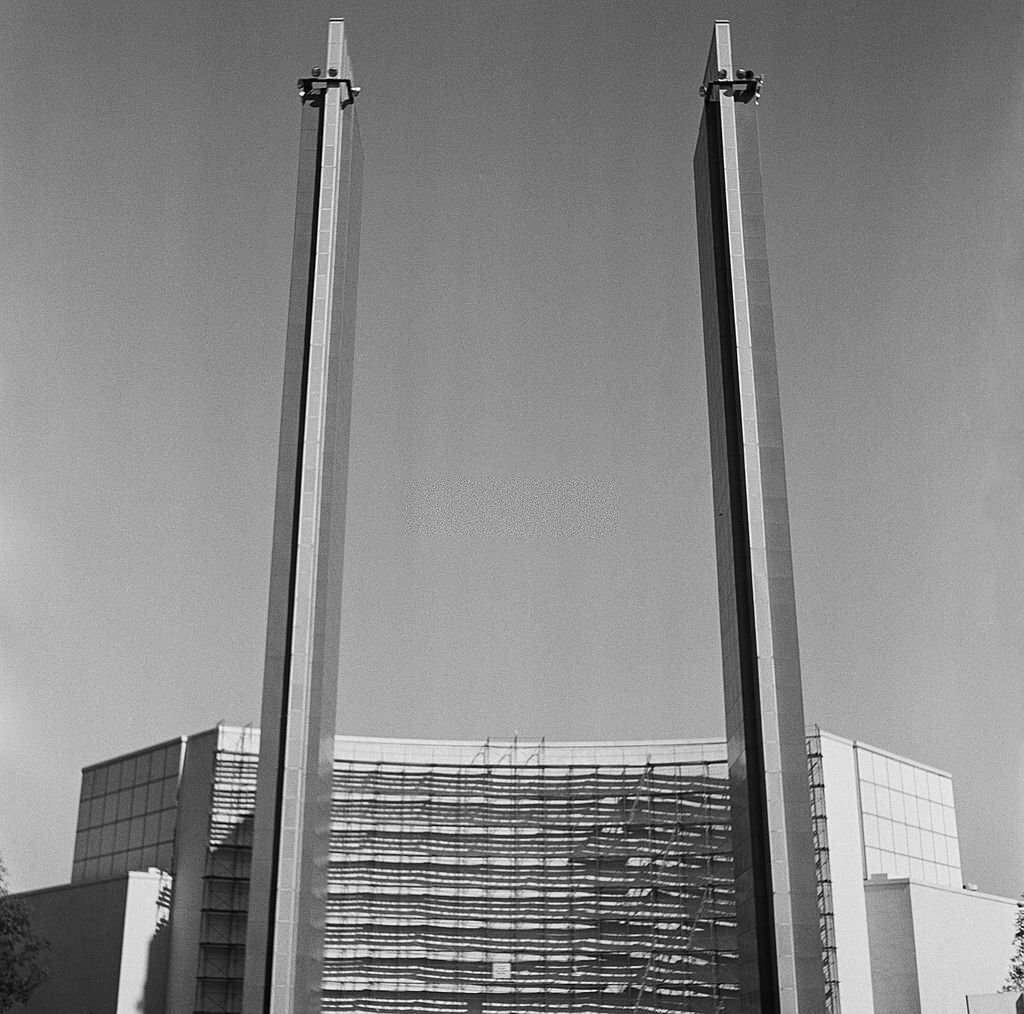
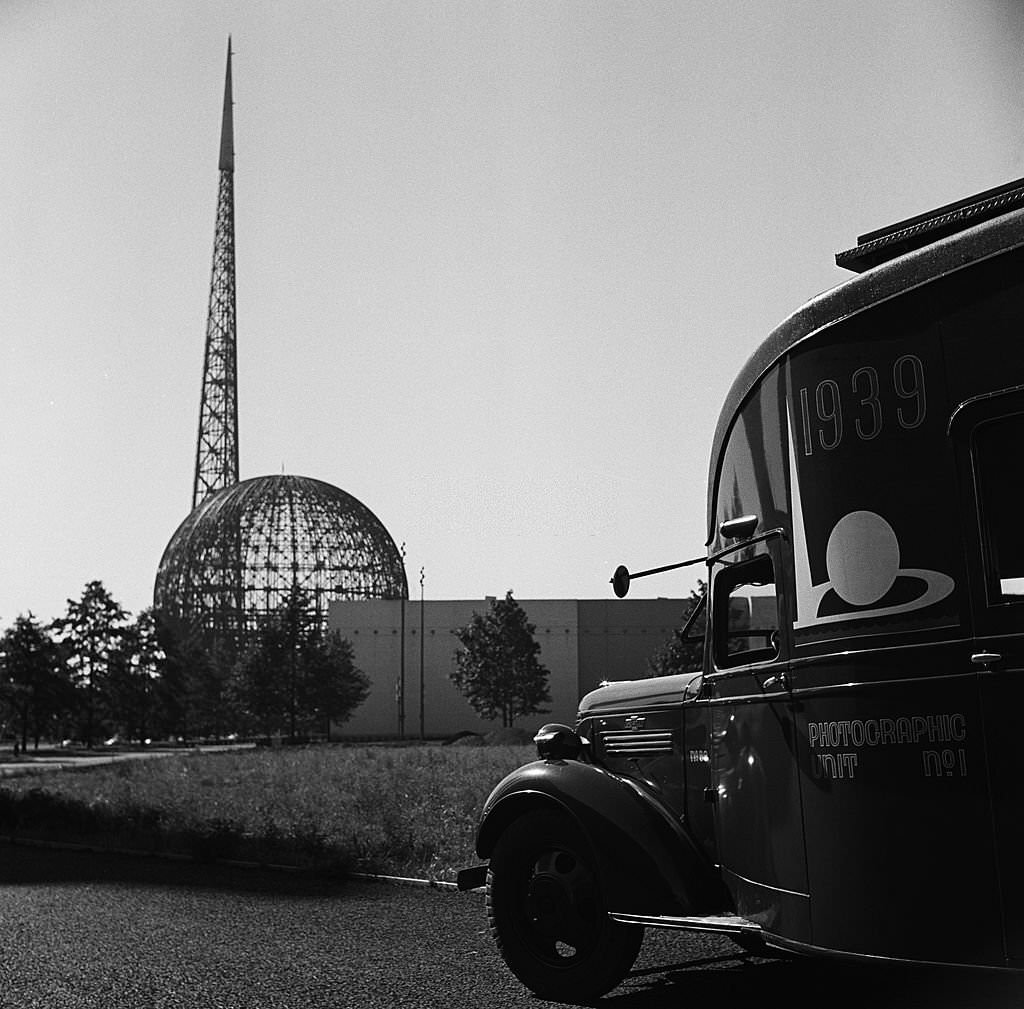
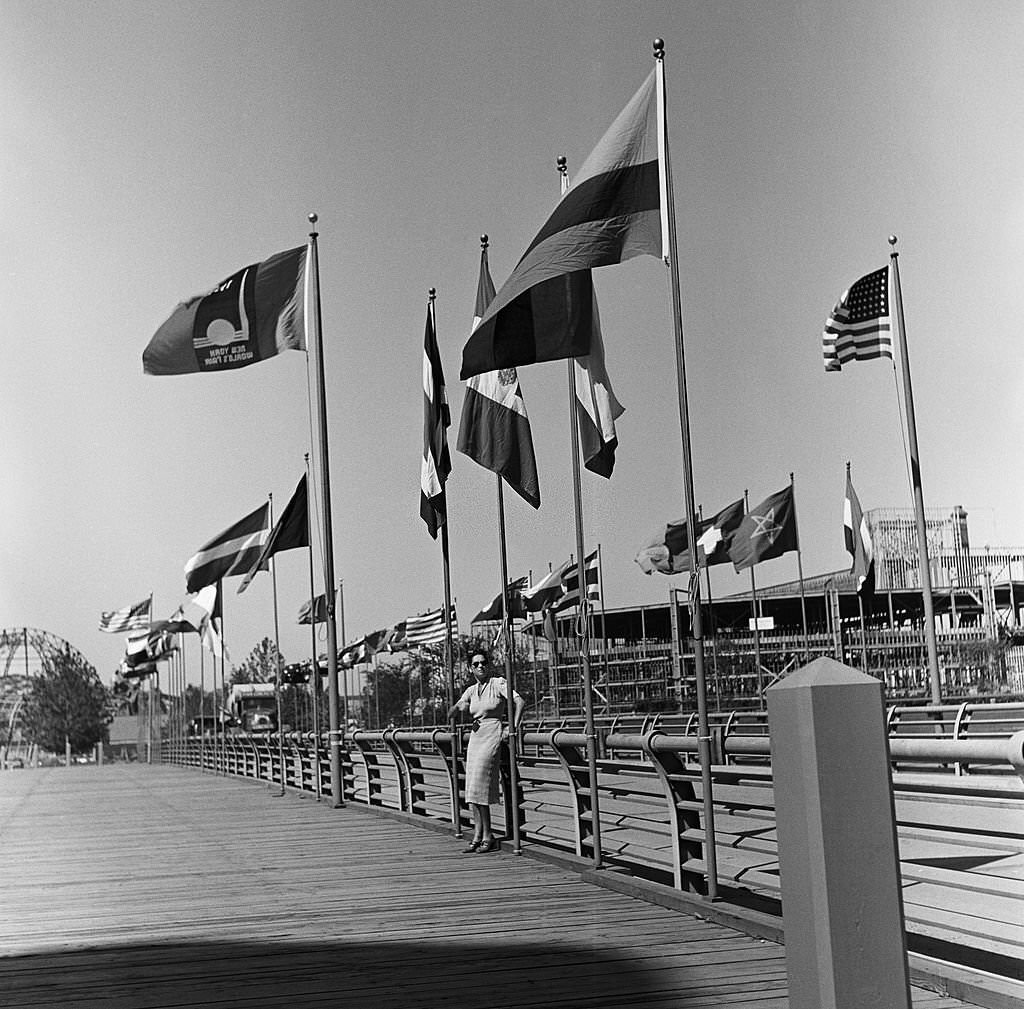
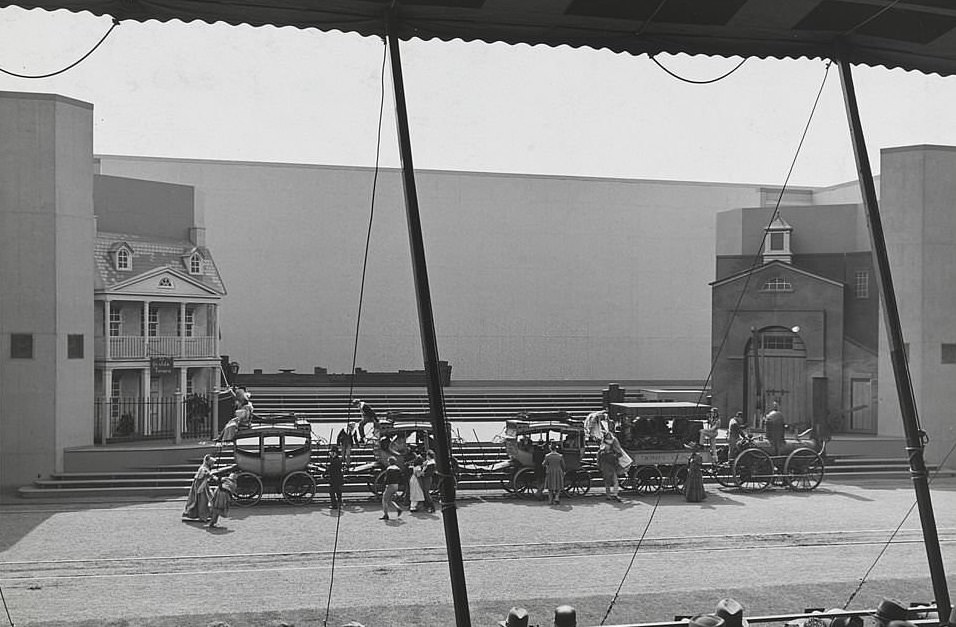
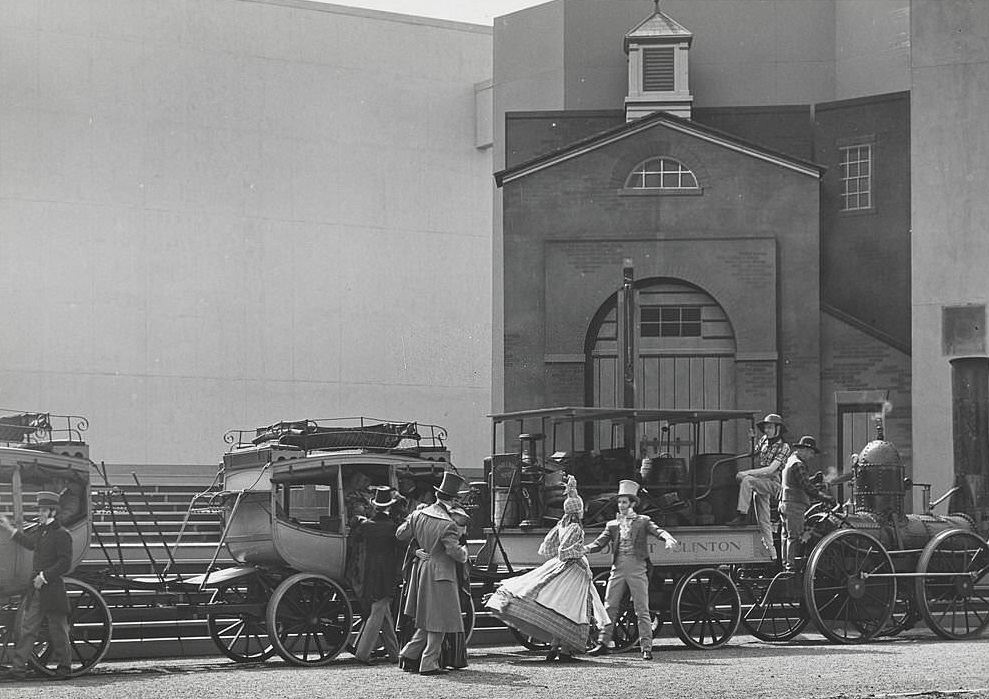
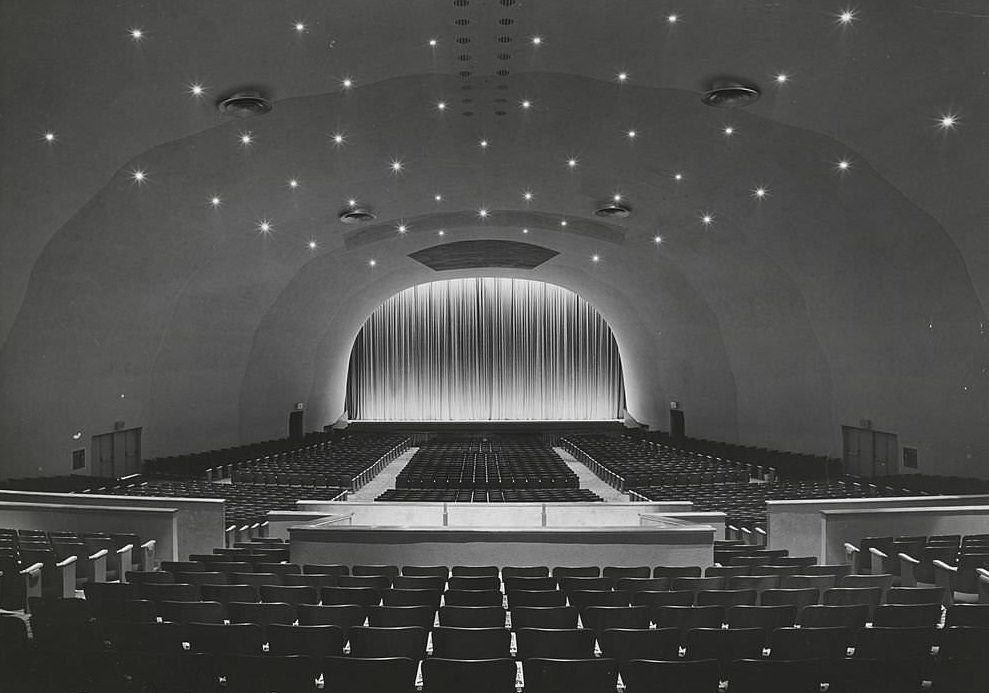
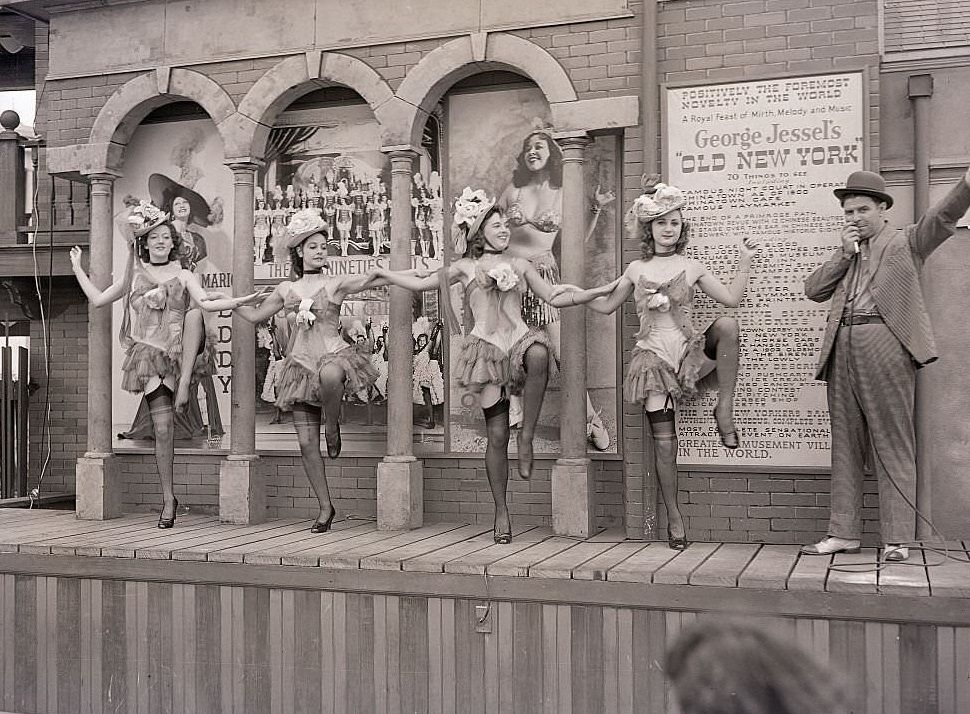
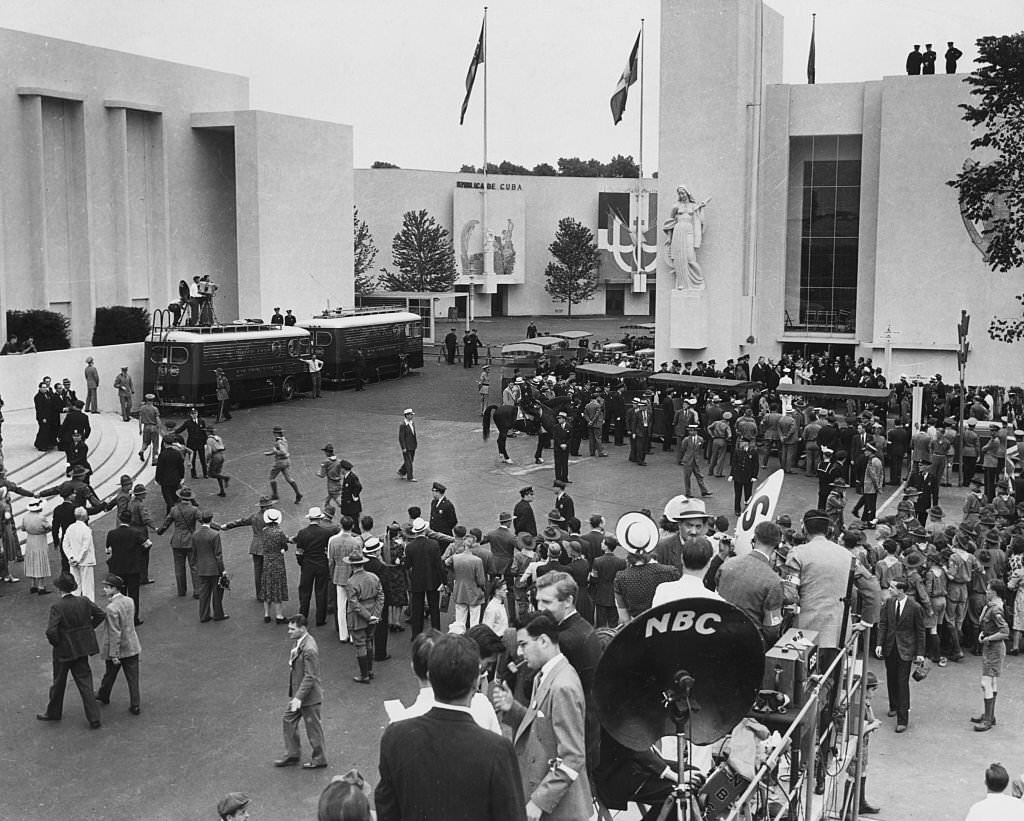
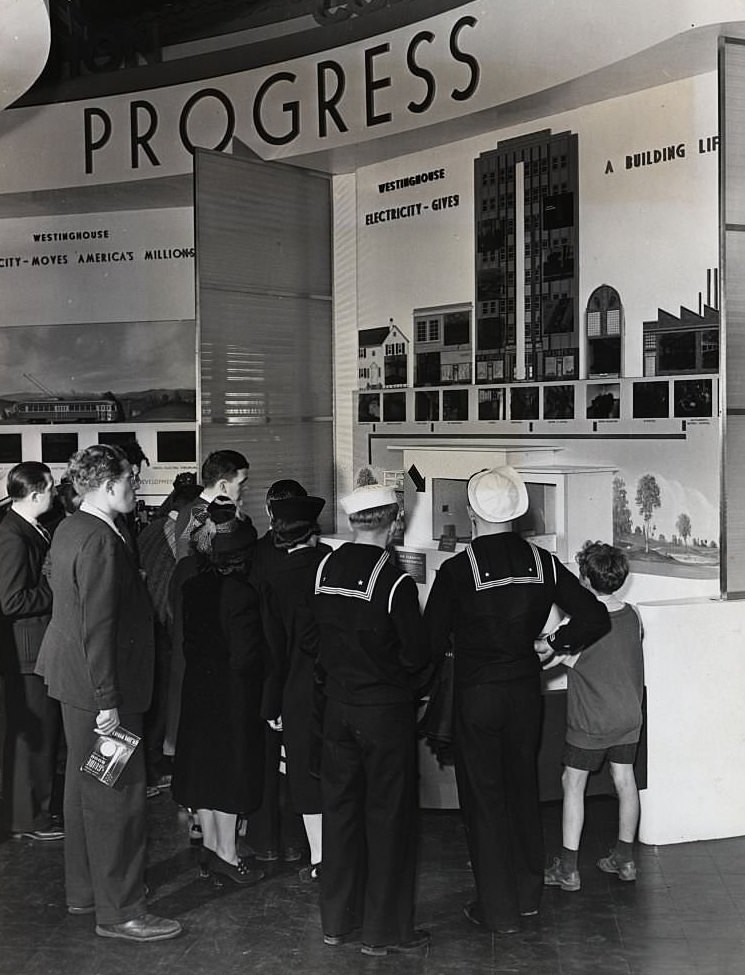
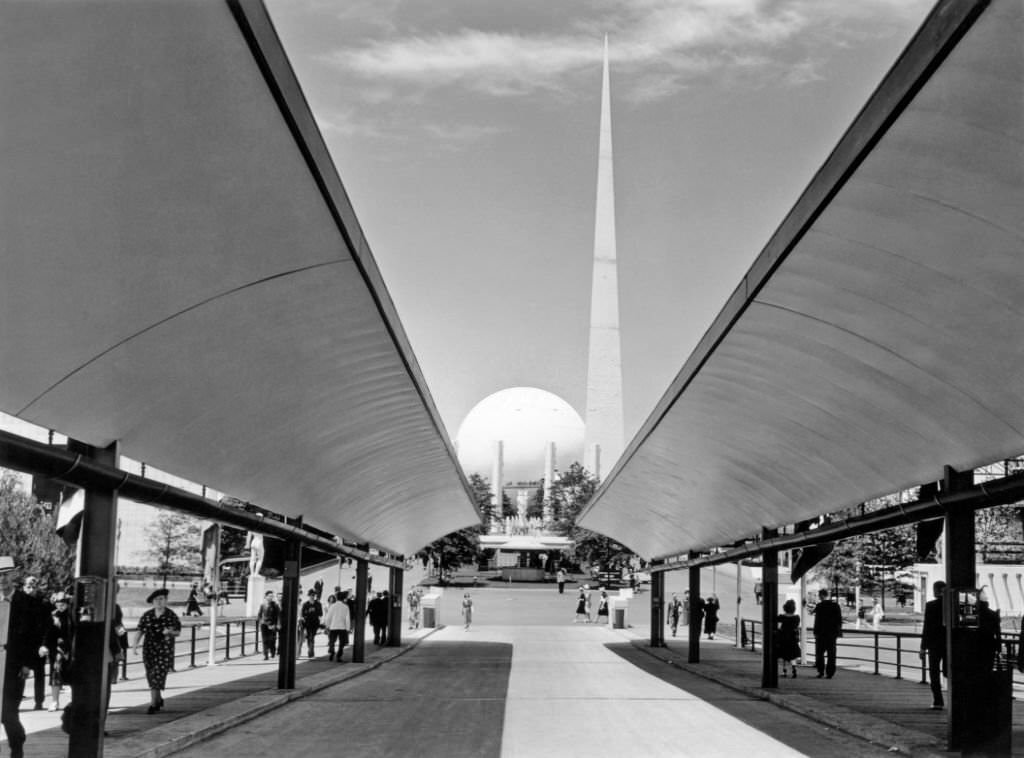
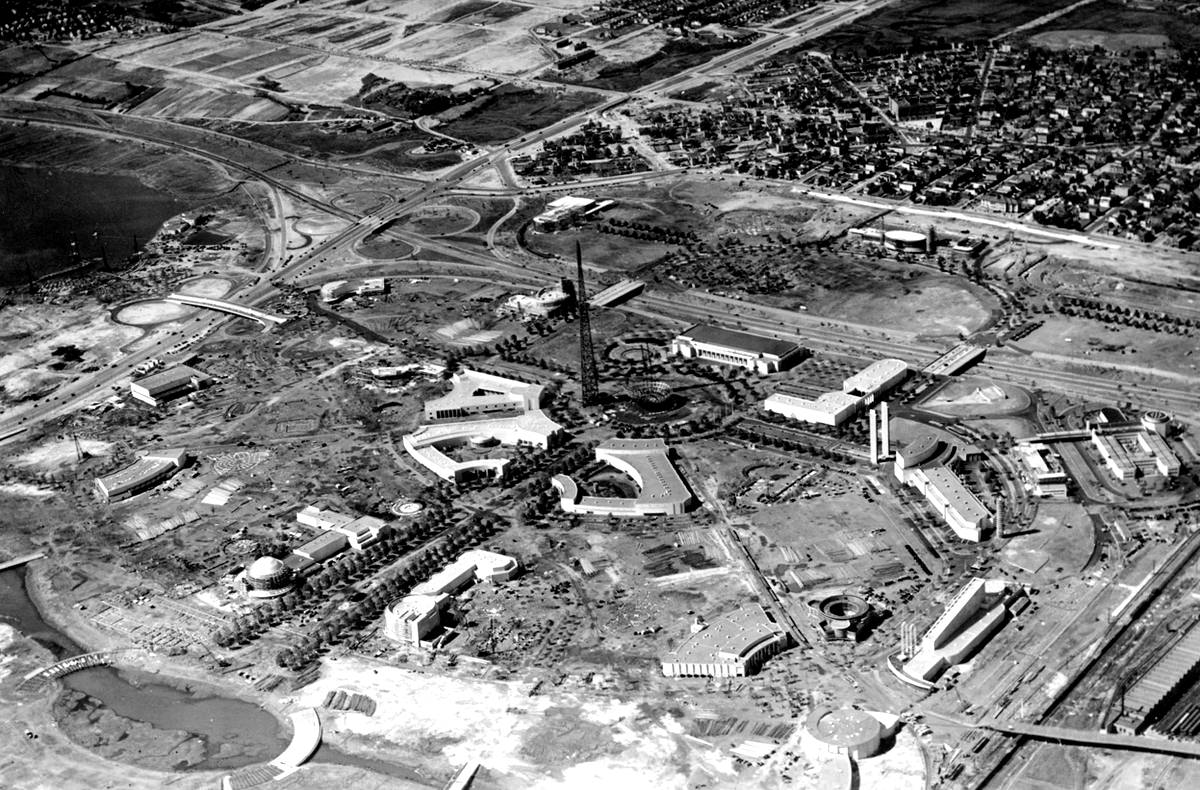


GIPHY App Key not set. Please check settings